Forums
- Forums
- Axis And Allies Forum
- General Discussion
- Aviation News
Aviation News
Post a reply
- Go to Next topic
- Go to Welcome
- Go to Introduce Yourself
- Go to General Discussion
- Go to Screenshots, Images and Videos
- Go to Off topic
- Go to Works in Progress
- Go to Skinning Tips / Tutorials
- Go to Skin Requests
- Go to IJAAF Library
- Go to Luftwaffe Library
- Go to RAF Library
- Go to USAAF / USN Library
- Go to Misc Library
- Go to The Ops Room
- Go to Made in Germany
- Go to Campaigns and Missions
- Go to Works in Progress
- Go to Juri's Air-Raid Shelter
- Go to Campaigns and Missions
- Go to Works in Progress
- Go to Skinpacks
- Go to External Projects Discussion
- Go to Books & Resources
-
 Main AdminA B-25 Mitchell flies over the airfield during the 2018 Power in the Pines Open House and Air Show held May 5, 2018 at Joint Base McGuire-Dix-Lakehurst, N.J. The B-25 Mitchell was used in World War II and became famous as the aircraft used in the Doolittle Raid on the Japanese homeland in 1942.(U.S. Air National Guard photo by Master Sgt. Matthew Hecht)
Main AdminA B-25 Mitchell flies over the airfield during the 2018 Power in the Pines Open House and Air Show held May 5, 2018 at Joint Base McGuire-Dix-Lakehurst, N.J. The B-25 Mitchell was used in World War II and became famous as the aircraft used in the Doolittle Raid on the Japanese homeland in 1942.(U.S. Air National Guard photo by Master Sgt. Matthew Hecht)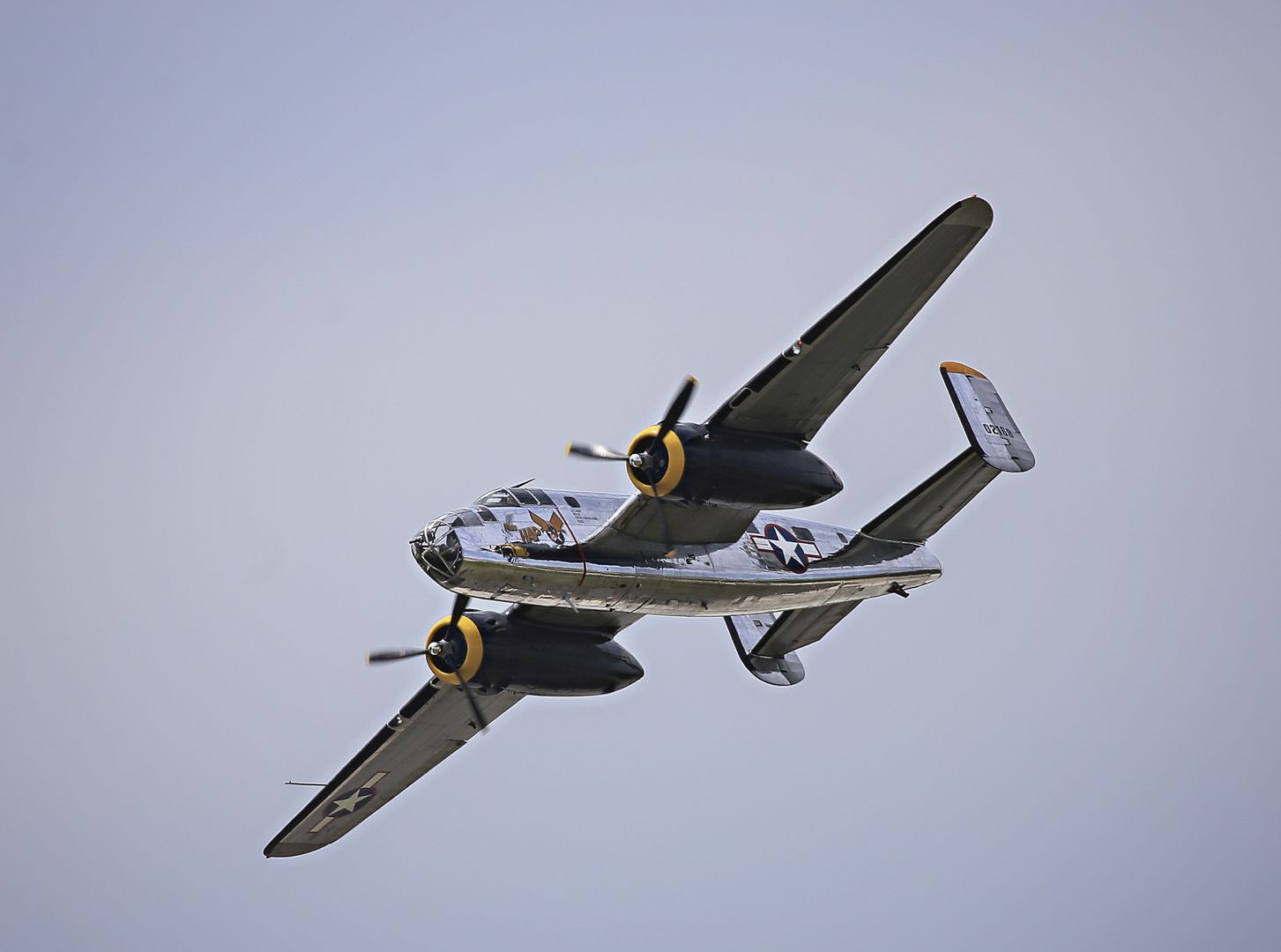
An F-22 Raptor crew chief marshalls a pilot preparing for launch for an aerial performance during the 2018 Power in the Pines Open House and Air Show held May 6, 2018 at Joint Base McGuire-Dix-Lakehurst, N.J. The theme of the Power in the Pines Open House and Air Show 2018 was Past, Present and Future, so heritage aircraft, like the B-25 Mitchell, performed with modern ones like the F-22 Raptor. (U.S. Marine Corps photo by Lance Cpl. Stanley Moy)
A KC-130J Super Hercules with Marine Aerial Refueler Transport Squadron (VMGR) 152 demonstrates an aerial refuel with an F/A-18D Hornet with Marine All Weather Fighter Attack Squadron (VMFA) 242 and F-35B Lightning II aircraft with Marine Fighter Attack Squadron (VMFA) 121 during the 42nd Japan Maritime Self-Defense Force ? Marine Corps Air Station Iwakuni Friendship Day at MCAS Iwakuni, Japan, May 5, 2018. Since 1973, MCAS Iwakuni has held a single-day air show designed to foster positive relationships and offer an exciting experience that displays the communal support between the U.S. and Japan. The air show also encompassed various U.S. and Japanese static display aircraft, aerial performances, food and entertainment. (U.S. Marine Corps photo by Cpl. Deseree Kamm)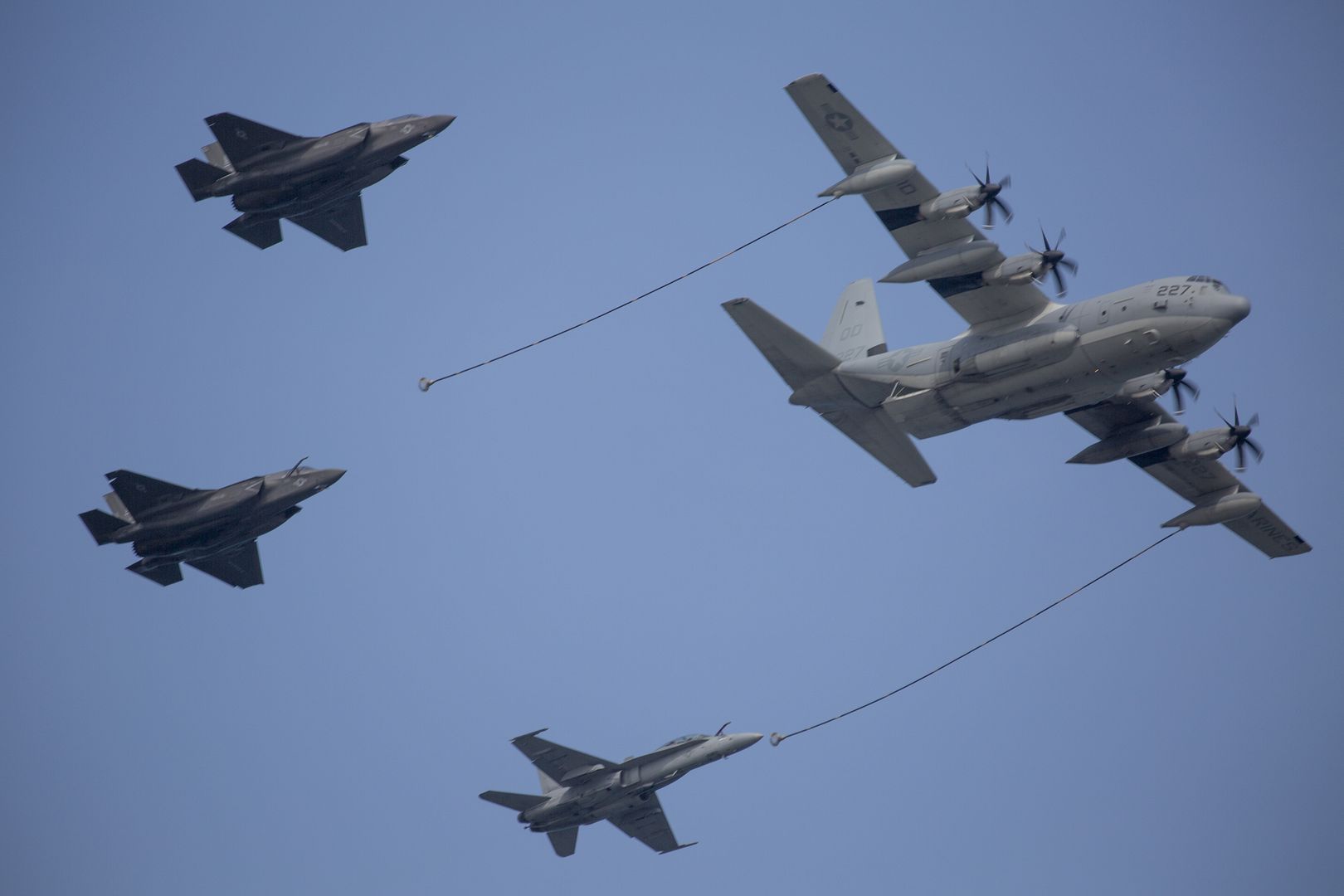
Japanese guests view various U.S. and Japanese static display aircraft during the 42nd Japan Maritime Self-Defense Force ? Marine Corps Air Station Iwakuni Friendship Day at MCAS Iwakuni, Japan, May 5, 2018. Since 1973, MCAS Iwakuni has held a single-day air show designed to foster positive relationships and offer an exciting experience that displays the communal support between the U.S. and Japan. The air show also encompassed various U.S. and Japanese static display aircraft, aerial performances, food and entertainment. (U.S. Marine Corps photo by Lance Cpl. Lauren Brune)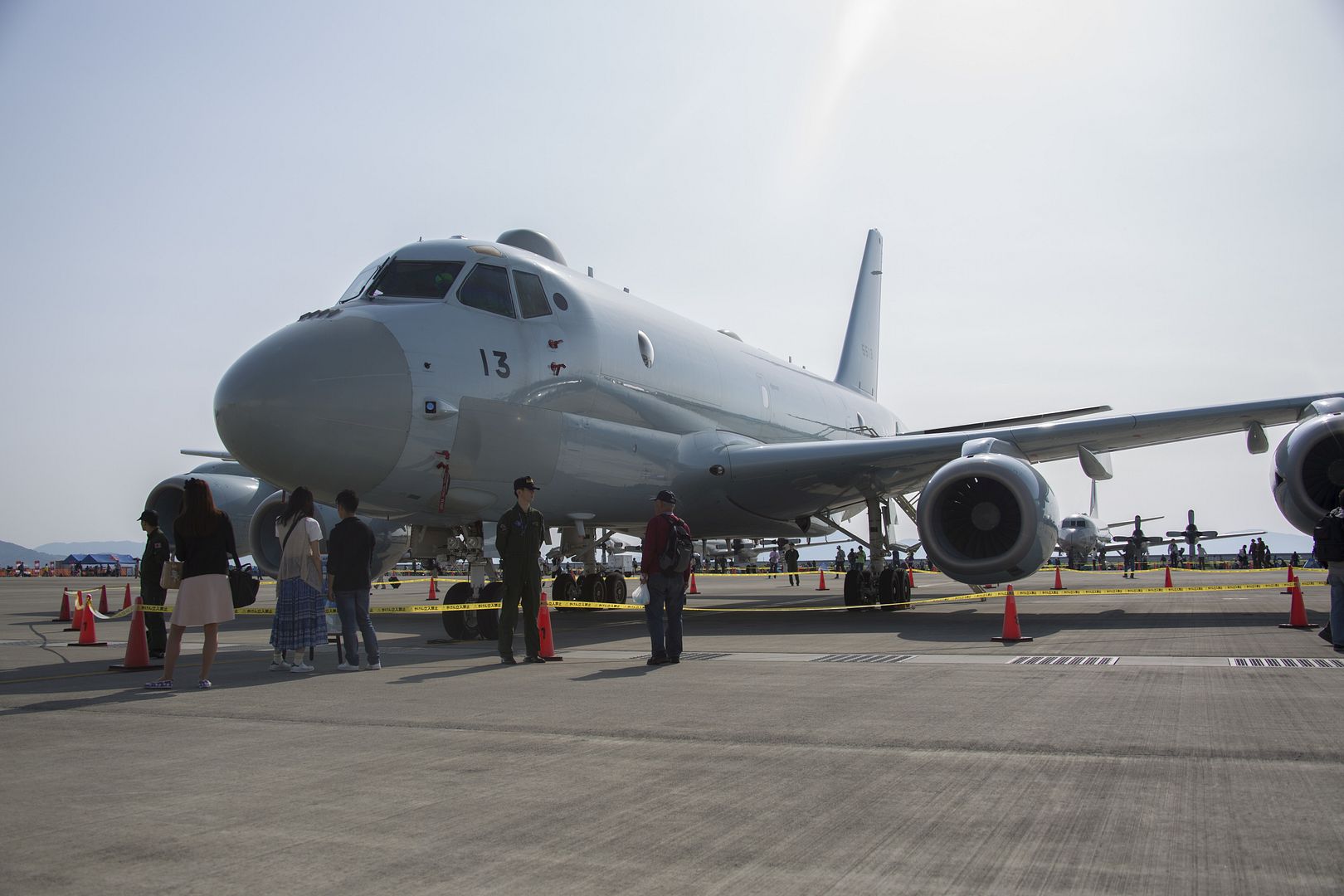
A U.S. Marine Corps AH-1Z Viper with Marine Medium Tiltrotor Squadron 166 (reinforced), the aviation combat element of the 13th Marine Expeditionary Unit (MEU), is secured to the flight deck aboard the San-Antonio class amphibious transport dock ship USS Anchorage (LPD 23), May 3, 2018. The Essex Amphibious Ready Group (ARG) and 13th MEU integrated to conduct the second major exercise of their pre-deployment training. ARG, MEU Exercise (ARGMEUEX) provides essential and realistic ship-to-shore training, designed to enhance the integration of the Navy-Marine Corps team. ARGMEUEX provides an opportunity to integrate unique individual and unit skills and develop the Essex ARG and 13th MEU?s collective proficiency in challenging and unfamiliar environments. (U.S. Marine Corps photo by Cpl. Austin Mealy)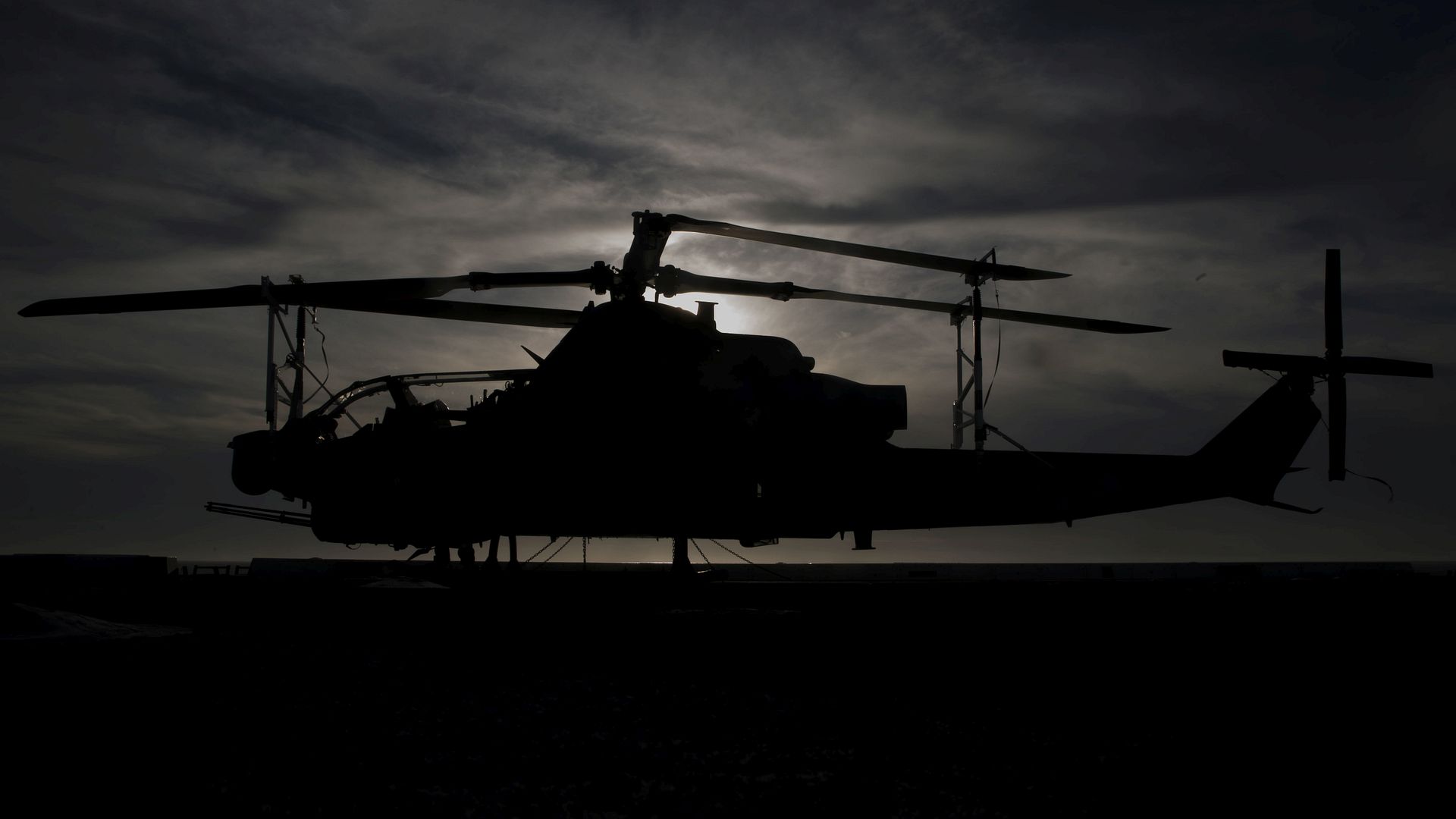
TRINCOMALEE, Sri Lanka (May 6, 2018) Sri Lankan military members transfer a mock patient to a hospital via a Sri Lankan Huey UH-1 helicopter during the humanitarian assistance and disaster response field training exercise. Pacific Partnership 2018?s mission is to work collectively with host and partner nations to enhance regional interoperability and disaster response capabilities, increase stability and security in the region, and foster new and enduring friendships across the Indo-Pacific Region. Pacific Partnership, now in its 13th iteration, is the largest annual multinational humanitarian assistance and disaster relief preparedness mission conducted in the Indo-Pacific. (U.S. Navy photo by Mass Communication Specialist 2nd Class Kelsey L. Adams/Released)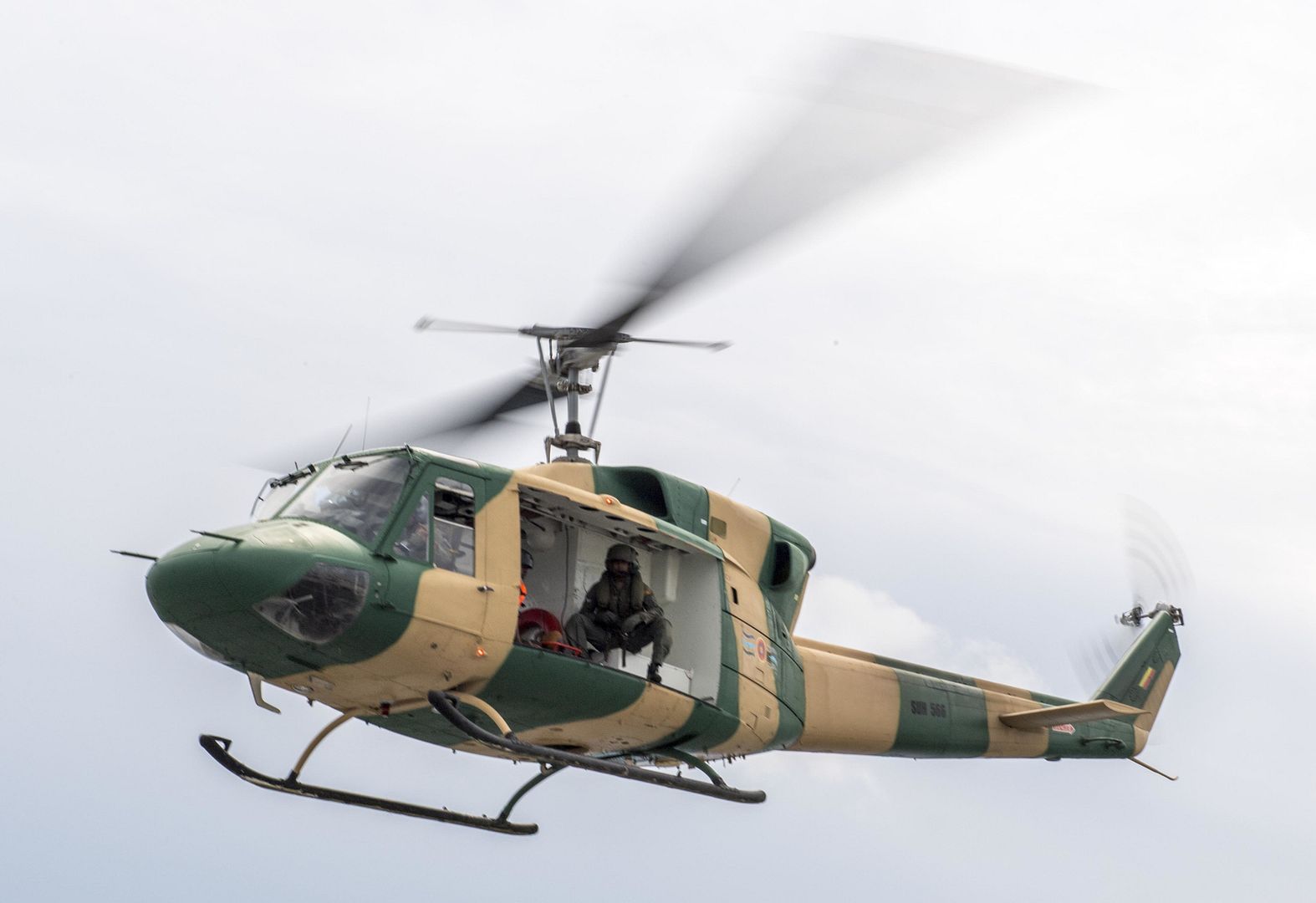
OAK HARBOR, Wash. (May 5, 2018) Pilots from the "Cougars" of Electronic Attack Squadron (VAQ - 139) disembark from an EA-18G Growler aircraft during a homecoming ceremony for the squadron at Naval Air Station Whidbey Island (NASWI). Sailors of VAQ 139 returned home to NASWI May 5 at the conclusion of a seven-month deployment to the Western Pacific and Arabian Gulf. (U.S. Navy photo by Mass Communication Specialist 2nd Class Scott Wood/Released)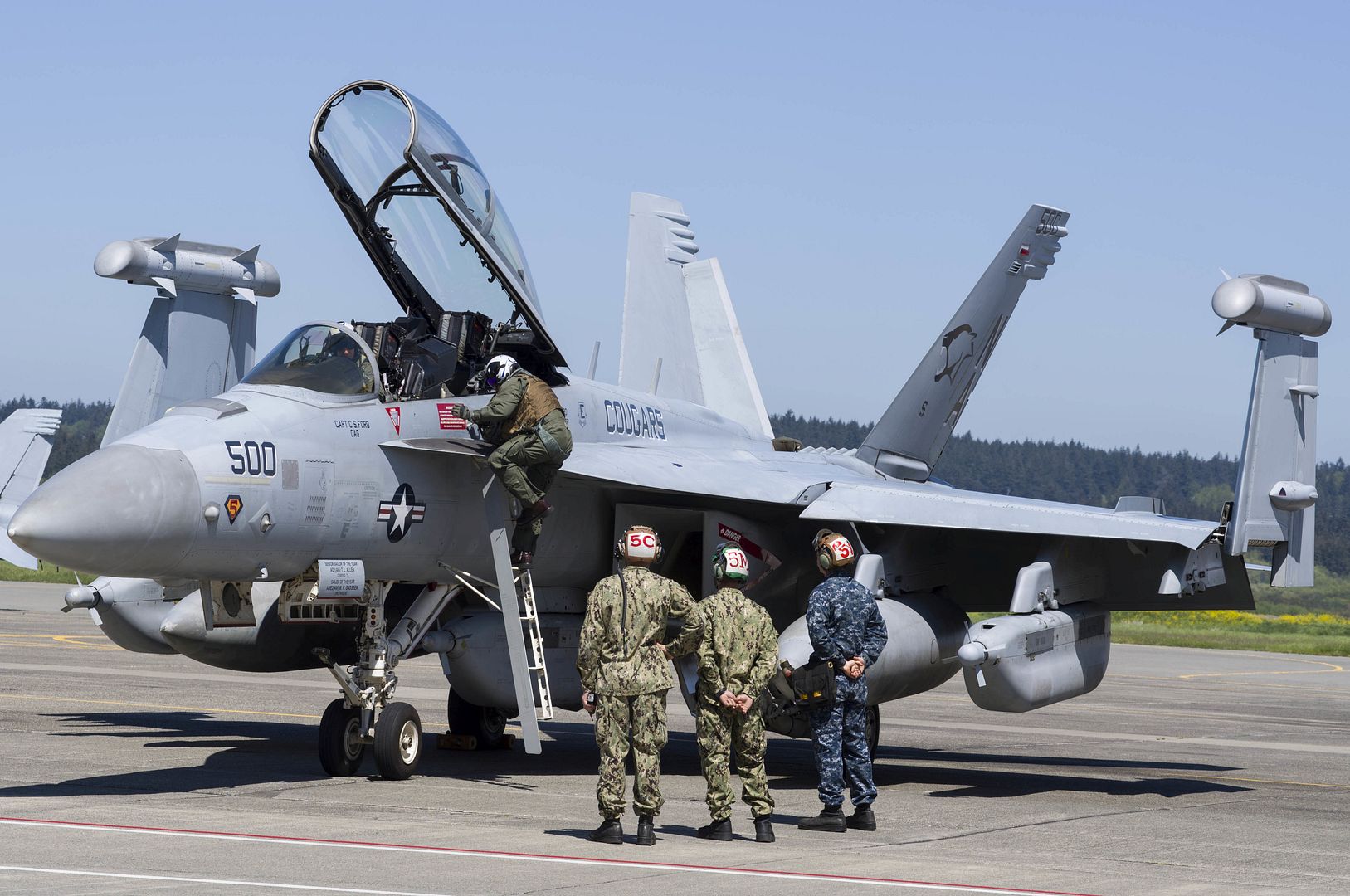
A P-47 Thunderbolt and a Supermarine Spitfire fly next to each other before landing at RAF Lakenheath, England, May 7, 2018. The Thunderbolt aircraft was painted to replicate the 492nd Fighter Squadron World War II color scheme. (U.S. Air Force photo/Airman 1st Class Christopher S. Sparks
A P-47 Thunderbolt lands on the flightline at RAF Lakenheath, England, May 7, 2018. The Thunderbolt accompanied by an F-15E, F-15C and a Supermarine Spitfire were on display during a heritage event hosted by the 492nd Fighter Squadron. (U.S. Air Force photo/Airman 1st Class Christopher S. Sparks)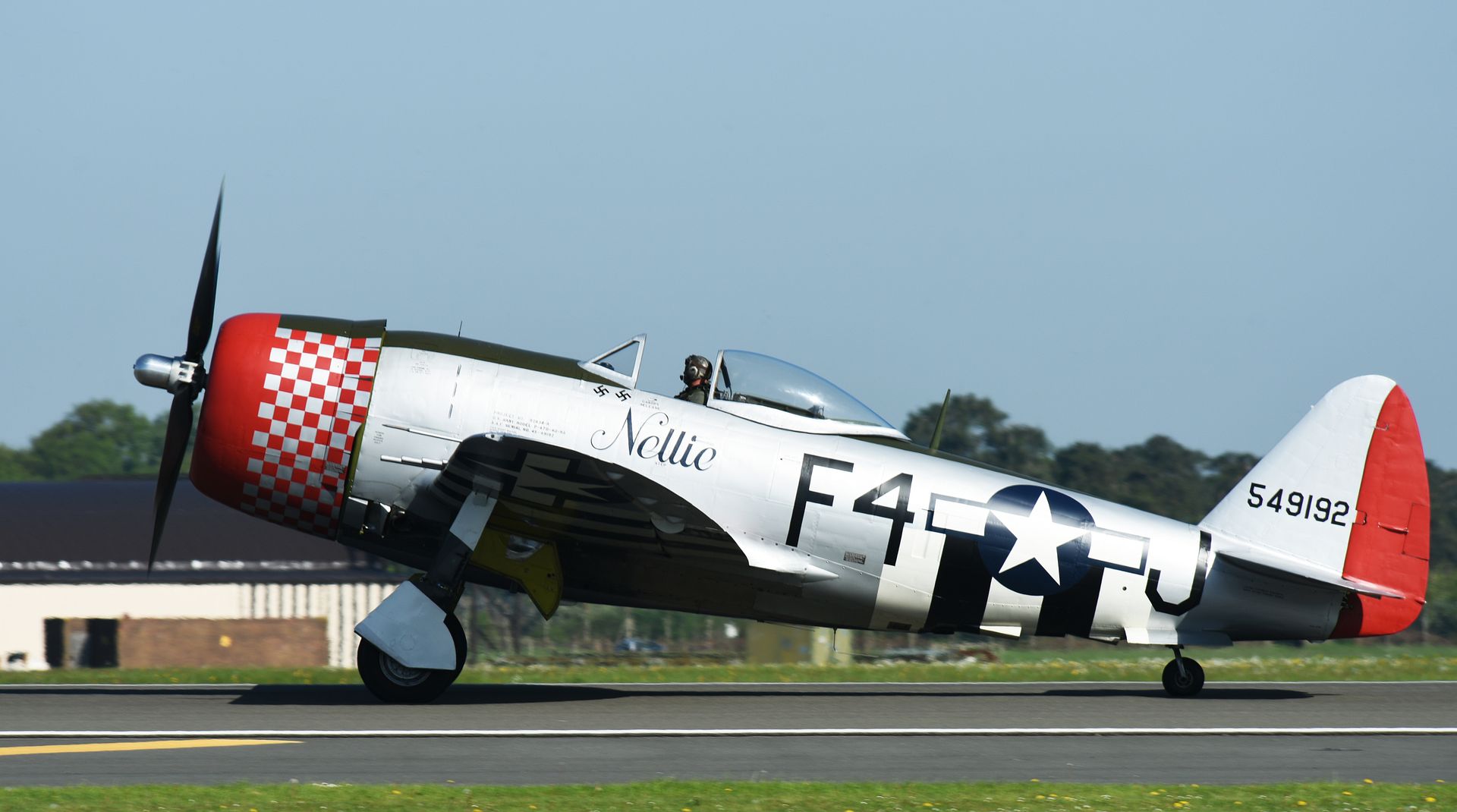
May 5, 2018 Toronto Commercial Aircraft, Press Release
Bombardier Commercial Aircraft announced today that it has signed a firm purchase agreement for six new Q400 aircraft with African Aero Trading on behalf of the consortium forming Air Connection Express, Transportes Aereos S.A, based in Luanda, Republic of Angola.
Based on the list price of the Q400 aircraft, the firm order is valued at approximately US$ 198 million.
?We congratulate Air Connection Express as it launches its domestic air travel business, and are pleased that the Q400 has been selected to support regional air travel in Africa,? said Jean-Paul Boutibou, Vice President, Sales, Middle East and Africa, Bombardier Commercial Aircraft. ?The Q400 has proven to be a key contributor to the growth of the network in the region, enhancing connectivity on routes that are not economically viable for larger aircraft. Today, more than 37 operators are flying the Q Series in Africa, and we look forward to adding Air Connection Express to the family of Q400 operators.?
The airline will operate the Q400 domestically to connect smaller communities and increase frequencies as a regional feeder airline to TAAG Angola Airlines ? flag carrier of the Republic of Angola.
?We are delighted to have reached this milestone with Bombardier. With its industry-leading reliability, outstanding economics and performance capabilities, the Q400 will be instrumental in driving economic growth in Angola,? said Alcinda Pereira, Representative, Founding Committee, Air Connection Express, Transportes Aereos S.A. ?As we look at starting operations, we are confident that the nation of Angola will benefit tremendously from the Consortium. This partnership of companies has Angola?s citizen?s needs at heart, and selecting the leading turboprop in Africa will enable us to better serve communities across the country with modern passenger comfort and improved connectivity.?
About the Consortium
This is a Public Private Partnership (PPP) that brings private and government groups together towards building a stable domestic airline operation for Angola. The members of the consortium include TAAG Angola Airlines, ENANA, Airjet, Air26, Bestfly, Diexim, Mavewa, SJL and Air Guicango. The consortium is in the process of establishing a management team and the operational structure for Air Connection Express.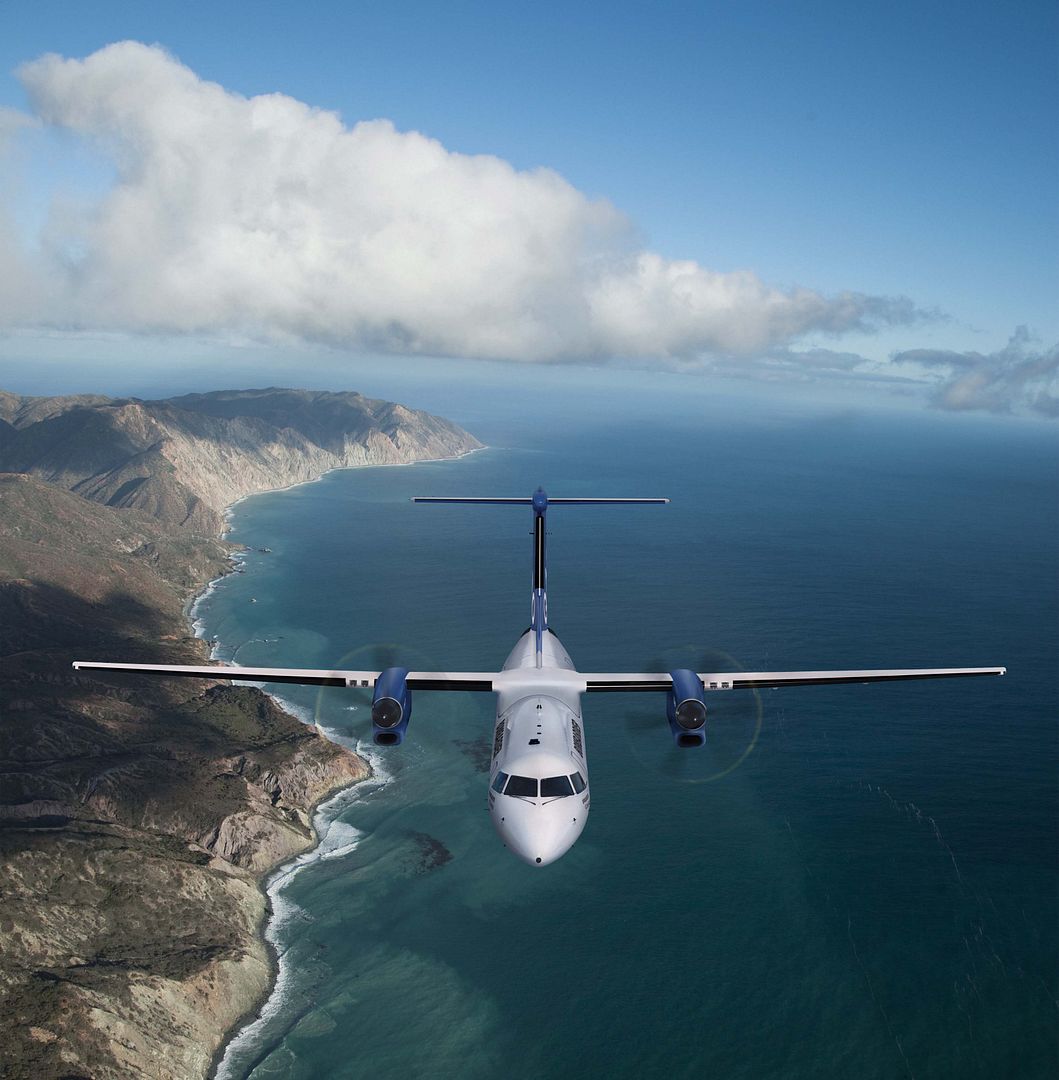
United Arab Emirates (May 2, 2018) ? Bell Helicopter, a Textron Inc. (NYSE: TXT) company announced a signature from EDIC Horizon International Flight Academy to purchase two Bell 429 aircraft. Based at Al Ain International Airport, EDIC Horizon International Flight Academy utilizes their fleet of entirely Bell aircraft to provide unparalleled flight training to a variety of international students.
?We are thrilled to add the Bell 429 to our flight training fleet,? said Hareb Thani Al Dhaheri, CEO, Horizon International Flight Academy. ?Bell aircraft has been an essential part of our operations since our creation, and this purchase marks the expansion of our services. The Bell 429 will be utilized for ATP, Instrument, multi-engine and specialized mission training.?
Hareb Thani Al Dhaheri, CEO, Horizon International Flight Academy.
With the lowest vibrations in its class, the Bell 429 meets or exceeds today?s airworthiness requirements to enhance occupant safety, with the adaptability to remain at the forefront as mission needs evolve. The use of metallic and composite parts in its construction creates the perfect balance between rigidity and flexibility, safety and durability. An advanced avionics and systems monitoring suite ensures outstanding maintainability and aircraft readiness.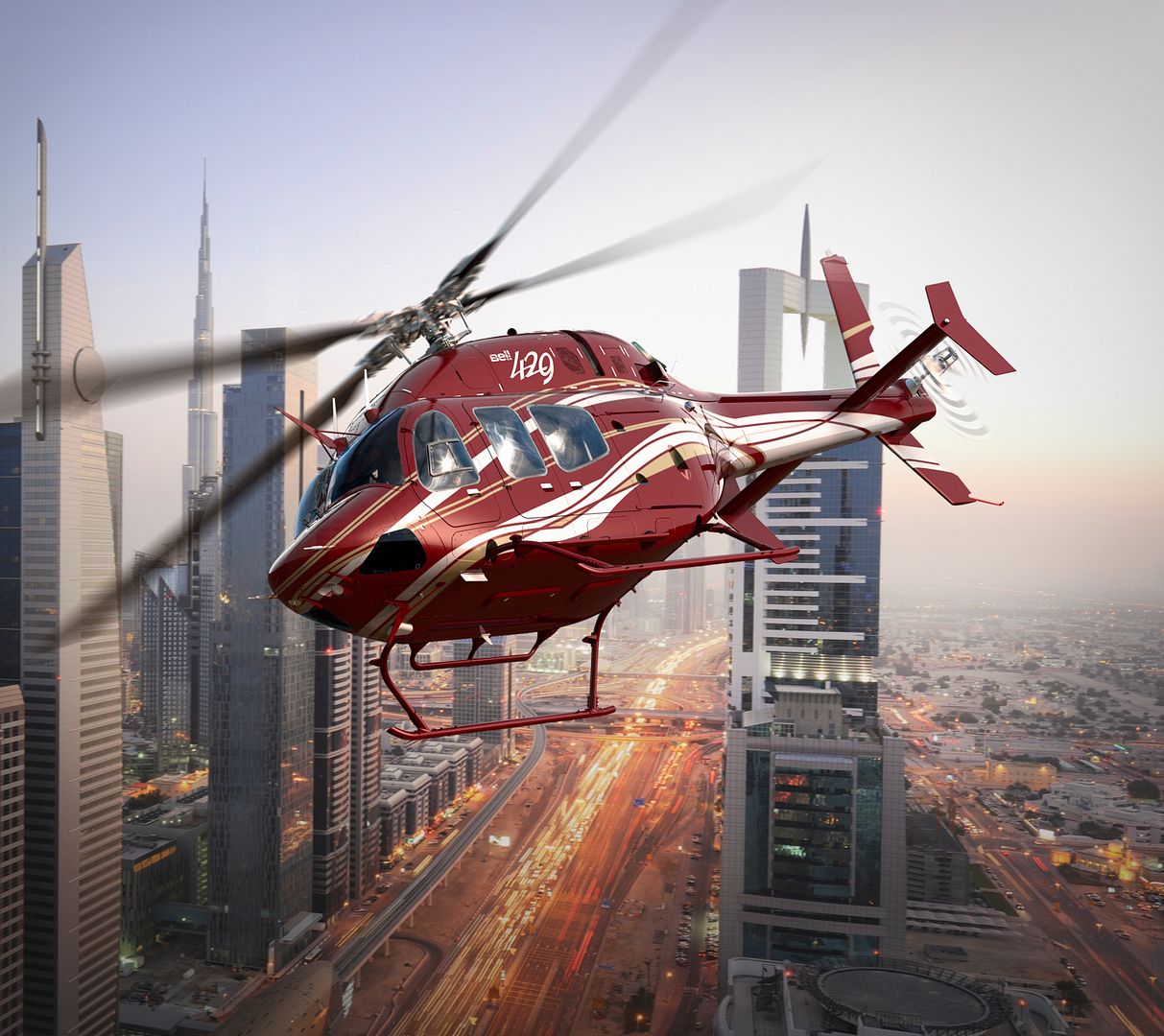
-
 Main AdminA Coast Guard Air Station Cape Cod HC-144 Ocean Sentry airplane flies over Newport, Rhode Island, Tuesday, May 8, 2018. The helicopter was part of a fly over for the opening of the Volvo Ocean Race village. (U.S Coast Guard photo by Petty Officer Andrew Barresi)
Main AdminA Coast Guard Air Station Cape Cod HC-144 Ocean Sentry airplane flies over Newport, Rhode Island, Tuesday, May 8, 2018. The helicopter was part of a fly over for the opening of the Volvo Ocean Race village. (U.S Coast Guard photo by Petty Officer Andrew Barresi)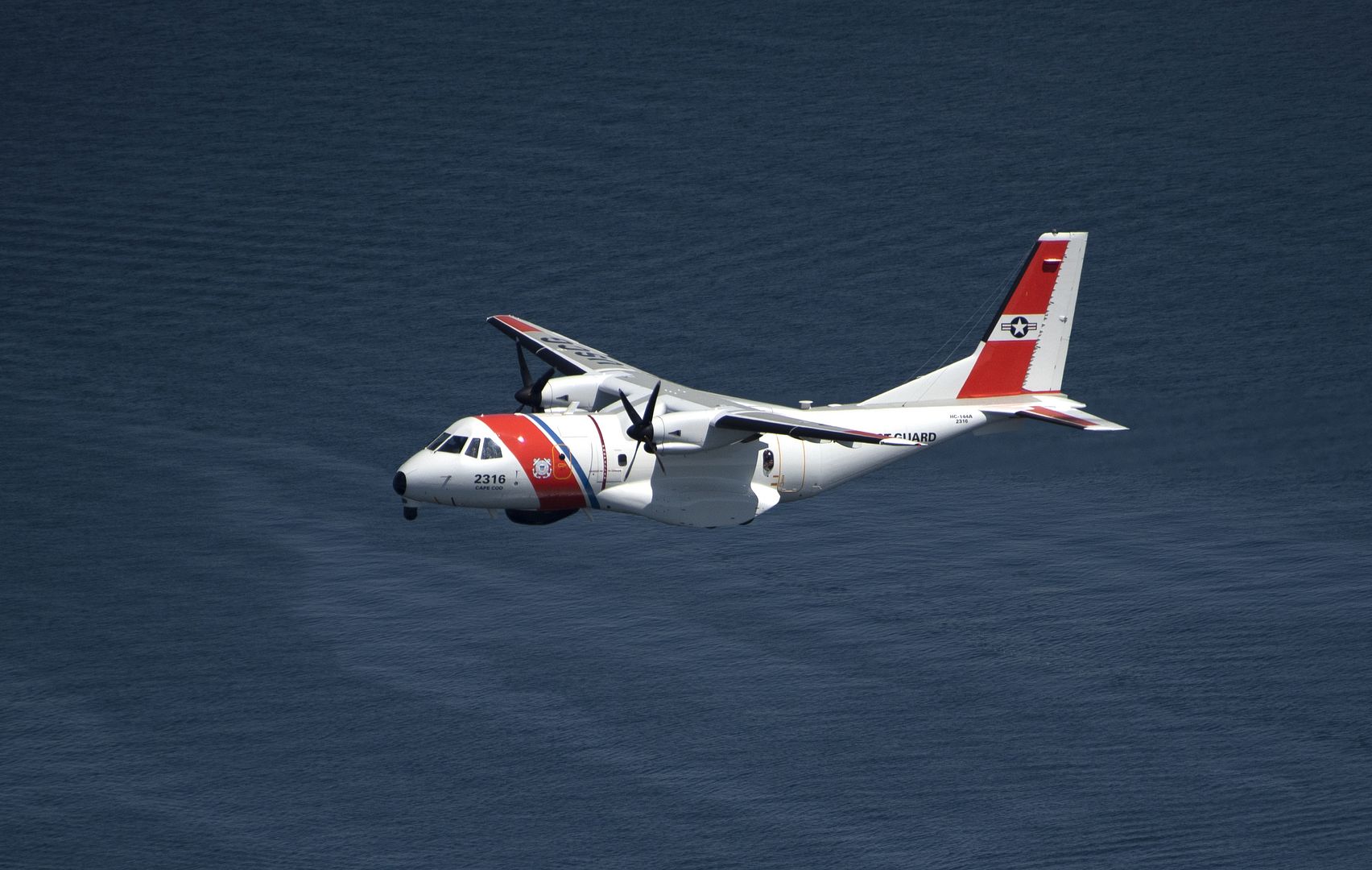
A C-17 Globemaster III aircraft at Joint Base Lewis-McChord prepares to depart for an airfield in central Washington State May 7, 2018. The C-17 is transporting Soldiers from the 201st Expeditionary Military Intelligence Brigade in support of a field training exercise being conducted by the brigade. The movement is designed to provide more realistic load training for the Air Force and more airlift equipment preparation training for the Army. (U.S. Army photo by Staff Sgt. Chris McCullough)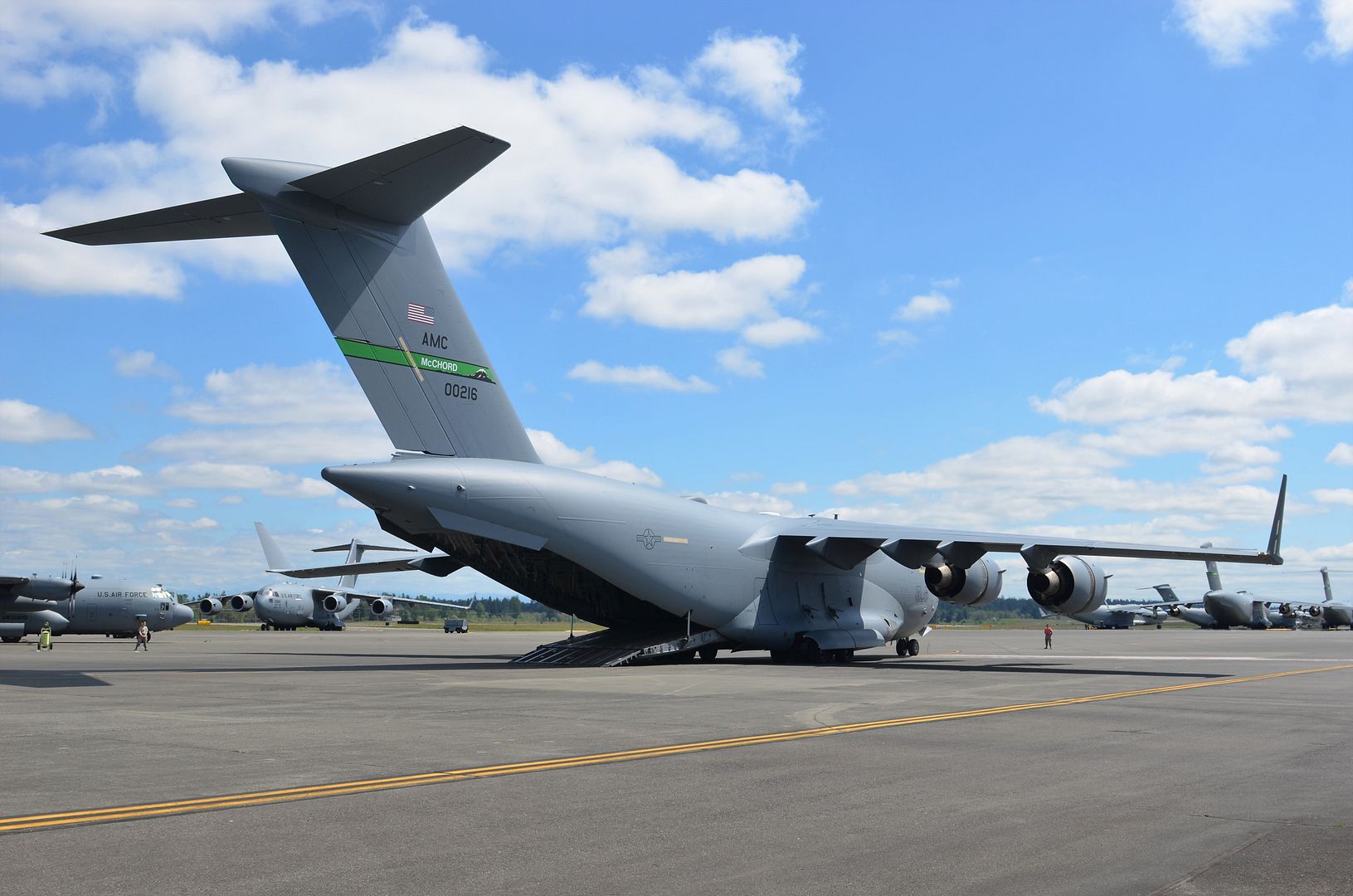
Los Angeles, California, May 8, 2018 ? EmbraerX, an Embraer organization dedicated to developing disruptive businesses, today unveiled its first electrical Vertical Take-Off and Landing (eVTOL) aircraft concept. The unveiling was made during Uber Elevate 2018, in Los Angeles, California. EmbraerX is engaged in several projects, including the development of eVTOL concepts through a cooperation with Uber and other companies to explore business opportunities within the Uber Elevate ecosystem. ?We have excelled in our near-50-year journey by introducing innovations into the aviation industry and delivering true value to customers,? said Paulo Cesar de Souza e Silva, President and CEO of Embraer. ?We are relentless in our quest for constant growth and through EmbraerX we will drive disruptive innovation and accelerate the creation of new businesses with the potential for exponential growth. Urban mobility is ripe for transformation and we are committed to having a major role in this key market.? The eVTOL concept presented at Uber Elevate 2018 represents an aircraft with a mission to serve passengers in an urban environment, based on the key design drivers of safety, passenger experience, affordability and a very low footprint for the community, in terms of noise and emissions. ?We are developing solutions to bring on-demand air transportation to urban areas to improve quality of life for millions of people. Our collaboration with key stakeholders will accelerate the arrival of this new ecosystem,? said Antonio Campello, President & CEO of EmbraerX. ?This is one example of how EmbraerX is committed to exploring a range of disruptive products and services that could revolutionize the business of air transportation.? Embraer X?s first eVTOL concept unveiled today is the outcome of extensive interaction with potential urban air travelers about their desired experience, combined with the expertise of Embraer?s teams and the collaboration with various companies and institutions. Embraer X will continue to engage with communities to expedite the development of desired solutions for this new market. Over the last five decades, Embraer has designed, developed and certified close to 50 aircraft models, delivering over 8,000 aircraft to 100 countries. Embraer?s fleet has accumulated more than 50 million flight hours. Leveraging Embraer?s experience and longstanding relationships with aircraft certification authorities around the globe, EmbraerX will ensure that safety design drivers meet and exceed the highest industry standards.
May 8, 2018 Montr?al Business Aircraft, Bombardier Inc., Press Release
Bombardier Business Aircraft and Duncan Aviation are pleased to announce they have collaboratively received Supplemental Type Certificates (STCs) for the Gogo AVANCE L5 system on Challenger 300 and Challenger 600 series aircraft. The AVANCE L5 system can also be installed as a retrofit option on Challenger 300 and Challenger 600 series aircraft at any of Bombardier?s five FAA Diamond award-winning service centres in North America and at Duncan Aviation?s three MRO facilities as well as several of Duncan Aviation?s Satellite locations. The 4G Wi-Fi system is now available on new Challenger series aircraft, which are equipped with Bombardier?s exclusive HD Cabin Management System to provide an unparalleled audio experience with crystal-clear sound through integrated sidewall speakers ? exclusive in its class.
?Bombardier is proud to lead the way in cabin connectivity and offer this fast, reliable 4G Wi-Fi system on new Challenger 350/650 aircraft and on in-service Challenger 300/600 series aircraft, so passengers can enjoy the smooth ride our aircraft are known for, while staying connected,? said Brad Nolen, Vice President, Marketing, Bombardier Business Aircraft.
The Gogo AVANCE platform integrates a full range of cabin features, allowing passengers to easily and reliably access and use all available data, voice, maps, entertainment, and cabin management system (CMS) services.
?Duncan Aviation and Bombardier are committed to working together to provide quick, all-encompassing connectivity solutions for Challenger aircraft. We are pleased our customers can stay connected in the air by obtaining this advanced technology,? said Dennis Kruse, Avionics Sales and Service Representative, Duncan Aviation.
The Gogo Biz 4G network is up to three times faster than the 3G network and comprised of more than 250 towers for reliable connectivity over the continental U.S. and large parts of Canada and Alaska. Designed specifically for business aircraft, the system delivers the speed passengers need for home-like entertainment and video streaming.
Bombardier and Duncan Aviation have already completed installations of the high-performing Gogo AVANCE L5 in-cabin Wi-Fi system on Challenger 300 and Challenger 605 aircraft, allowing passengers to enhance their in-flight connectivity experience.
The Challenger 350 aircraft tallied the most deliveries in its segment in 2017. Designed to create a smooth ride and an unforgettable experience, Challenger series aircraft flight deck feature a state-of-the-art Synthetic Vision System (SVS), MultiScan weather radar for increased situational awareness and reduced pilot workload.
About Duncan Aviation
Duncan Aviation is an aircraft service provider supporting the aviation needs of government and business operators and other service providers. Services include major and minor airframe inspections, engine maintenance, major retrofits for cabin and cockpit systems, full paint and interior services and preowned aircraft sales and acquisitions. Duncan Aviation also has international aircraft components solutions experts available 24/7/365 at +1 402.475.4125 who can handle any aircraft system problem with immediate exchanges, rotables, loaners or avionics/instrument/accessory repairs and overhauls. Complete service facilities are located in Lincoln, Neb., and Battle Creek, Mich. Additional locations include Provo, Utah, and more than 20 other facilities strategically located throughout the United States to provide customers with local support and the quickest response to avionics, engine and airframe Aircraft On Ground (AOG) situations.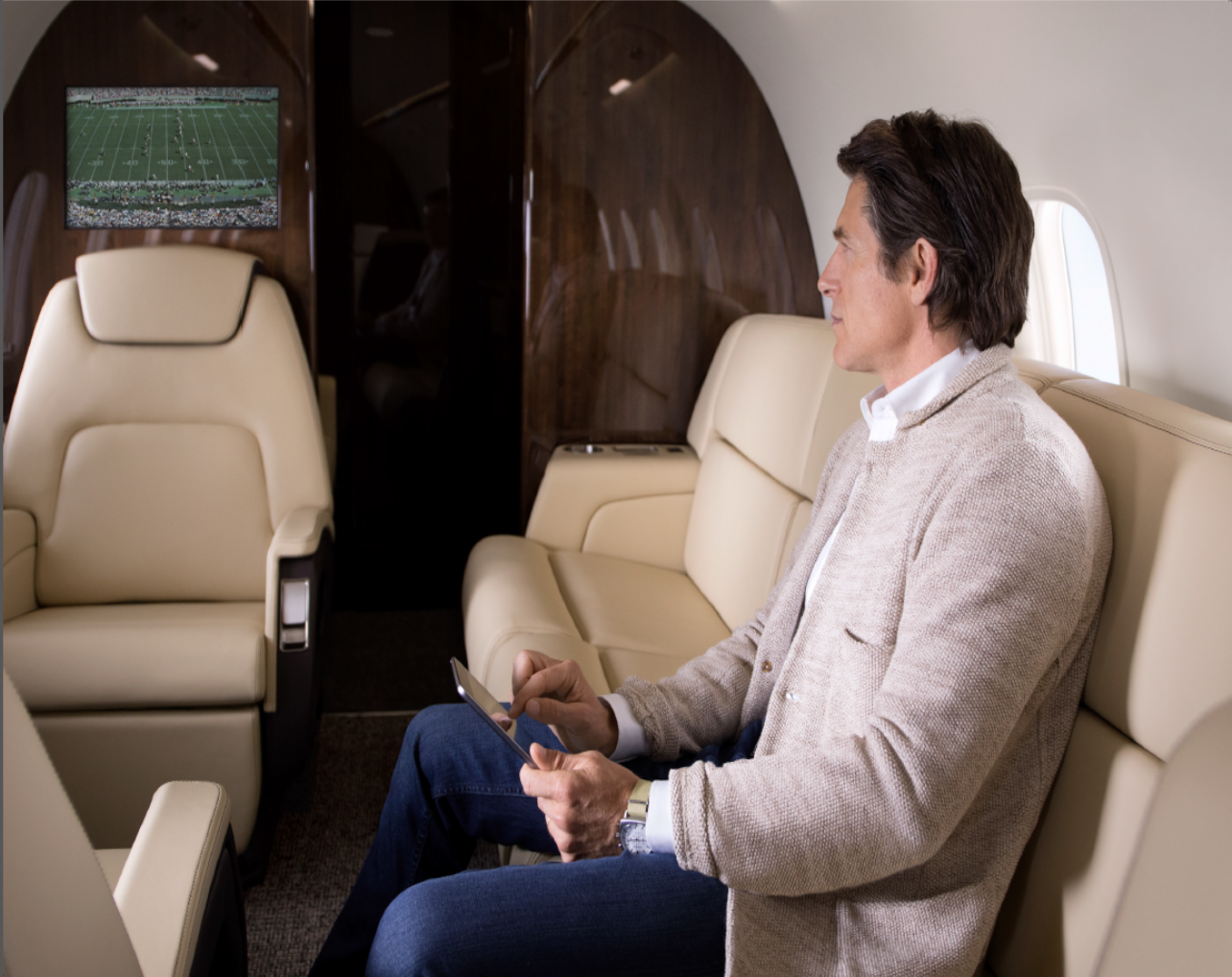
-
 Main AdminU.S. Army Spc. Bryan Battaglia, a UH-60 Blackhawk crew chief with Company B, 3rd Assault Helicopter Battalion, 227th Aviation Regiment, 1st Air Cavalry Brigade, 1st Cavalry Division, conducts pre-flight checks and maintenance at an airfield in Lielvarde, Latvia, May 8, 2018. Battaglia is preparing the UH-60 Blackhawk helicopter for Operation Hedgehog, a multinational exercise held in Estonia to enhance readiness and interoperability between allies and partners training in the Baltic region. (U.S. Army photo by Sgt. Gregory T. Summers / 22nd Mobile Public Affairs Detachment)
Main AdminU.S. Army Spc. Bryan Battaglia, a UH-60 Blackhawk crew chief with Company B, 3rd Assault Helicopter Battalion, 227th Aviation Regiment, 1st Air Cavalry Brigade, 1st Cavalry Division, conducts pre-flight checks and maintenance at an airfield in Lielvarde, Latvia, May 8, 2018. Battaglia is preparing the UH-60 Blackhawk helicopter for Operation Hedgehog, a multinational exercise held in Estonia to enhance readiness and interoperability between allies and partners training in the Baltic region. (U.S. Army photo by Sgt. Gregory T. Summers / 22nd Mobile Public Affairs Detachment)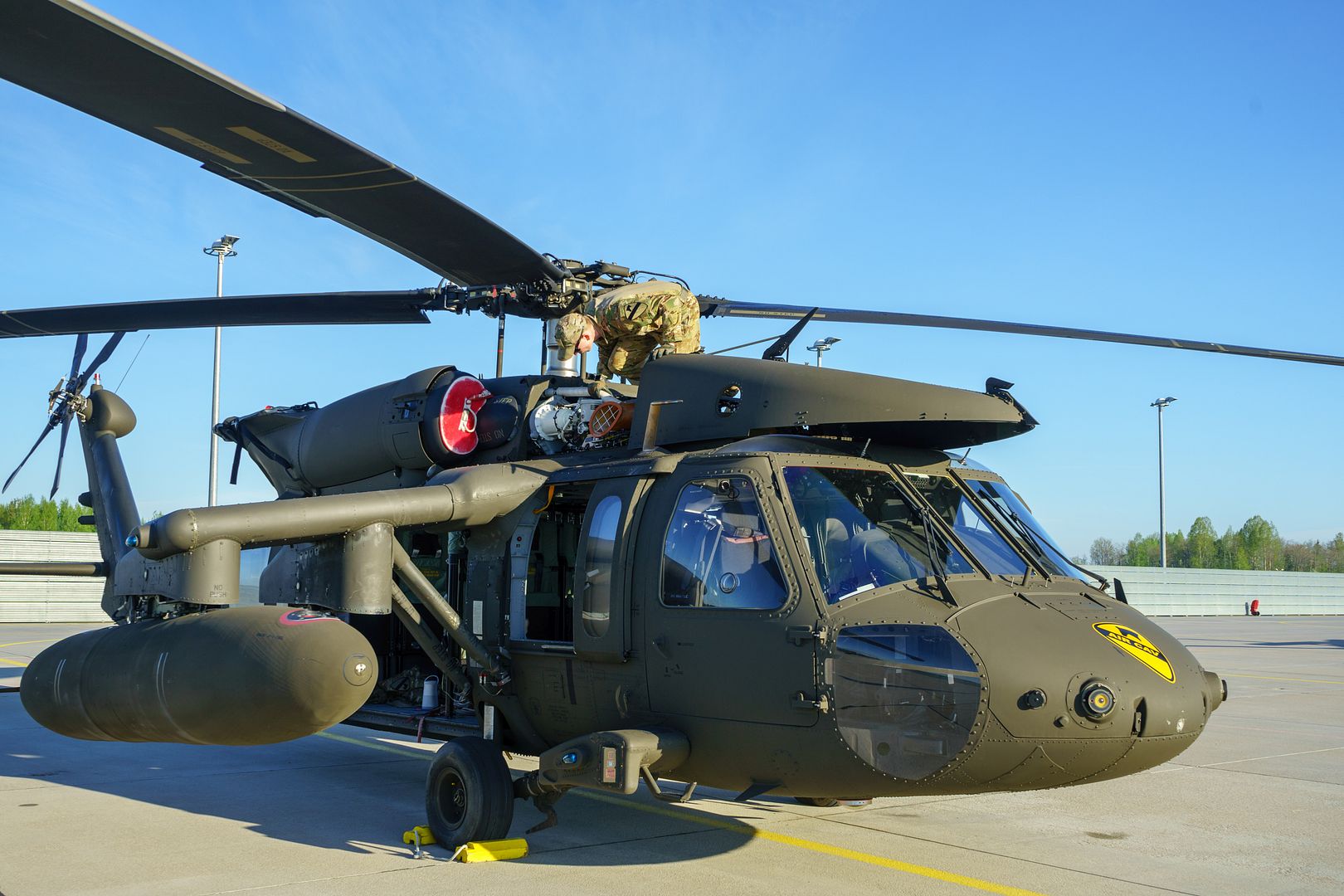
ATLANTIC OCEAN (May 8, 2018) Rear Adm. Stephen C. Evans, commander, Carrier Strike Group Two, lands in an F/A-18F Super Hornet from Strike Fighter Squadron (VFA) 213 on the flight deck aboard the aircraft carrier USS George H.W. Bush (CVN 77). Bush is underway in the Atlantic Ocean conducting carrier air wing exercises with the French navy to strengthen partnerships and deepen interoperability between the two nations' naval forces. (U.S. Navy photo by Mass Communication Specialist 3rd Class Brooke Macchietto)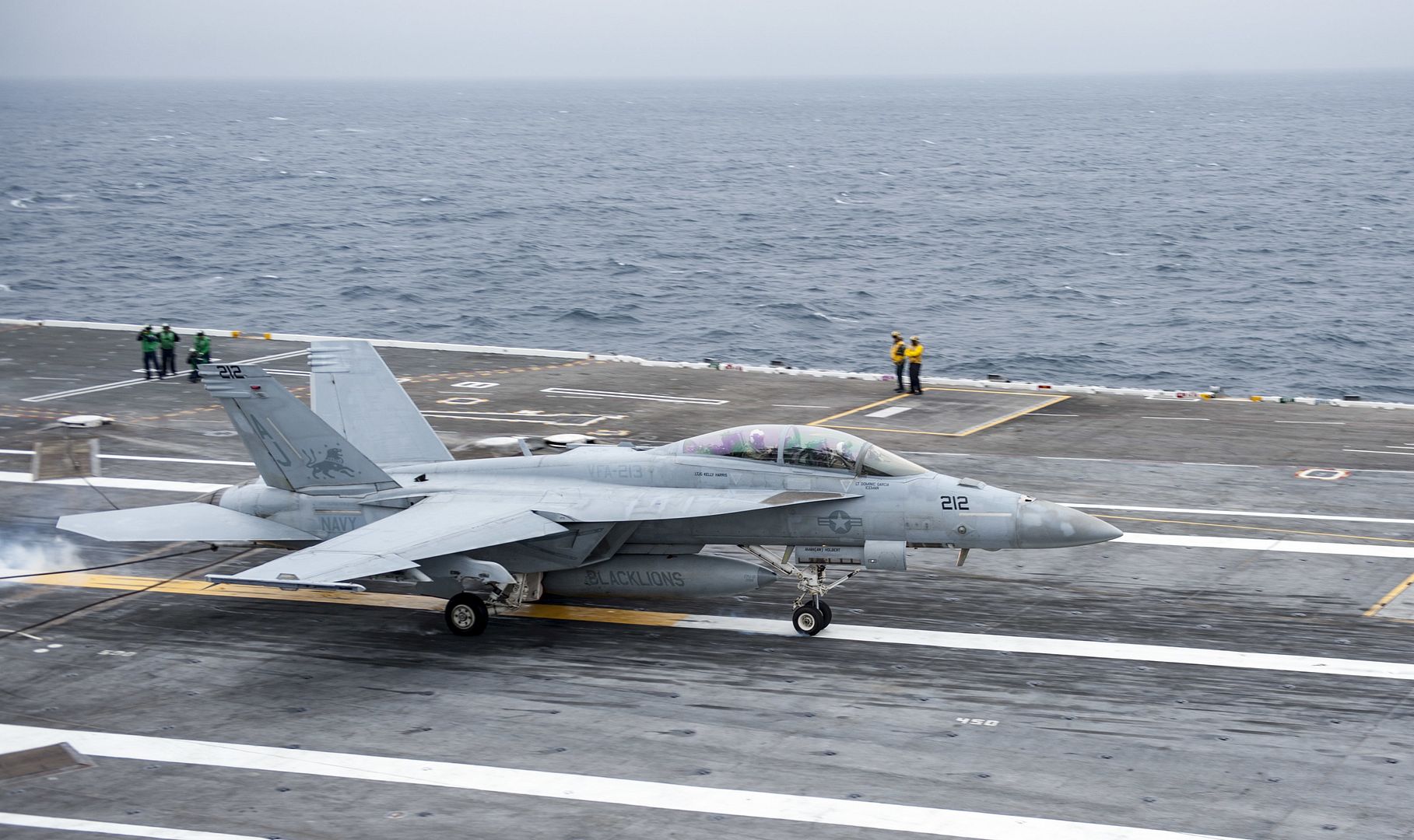
A U.S. Air Force F-22 Raptor assigned to the 3rd Wing does a low fly-by before landing at Joint Base Elmendorf-Richardson, Alaska, May 7, 2018. The F-22 Raptor is the U.S. Air Force?s premium fifth-generation fighter asset. (Photo by Jamal Wilson)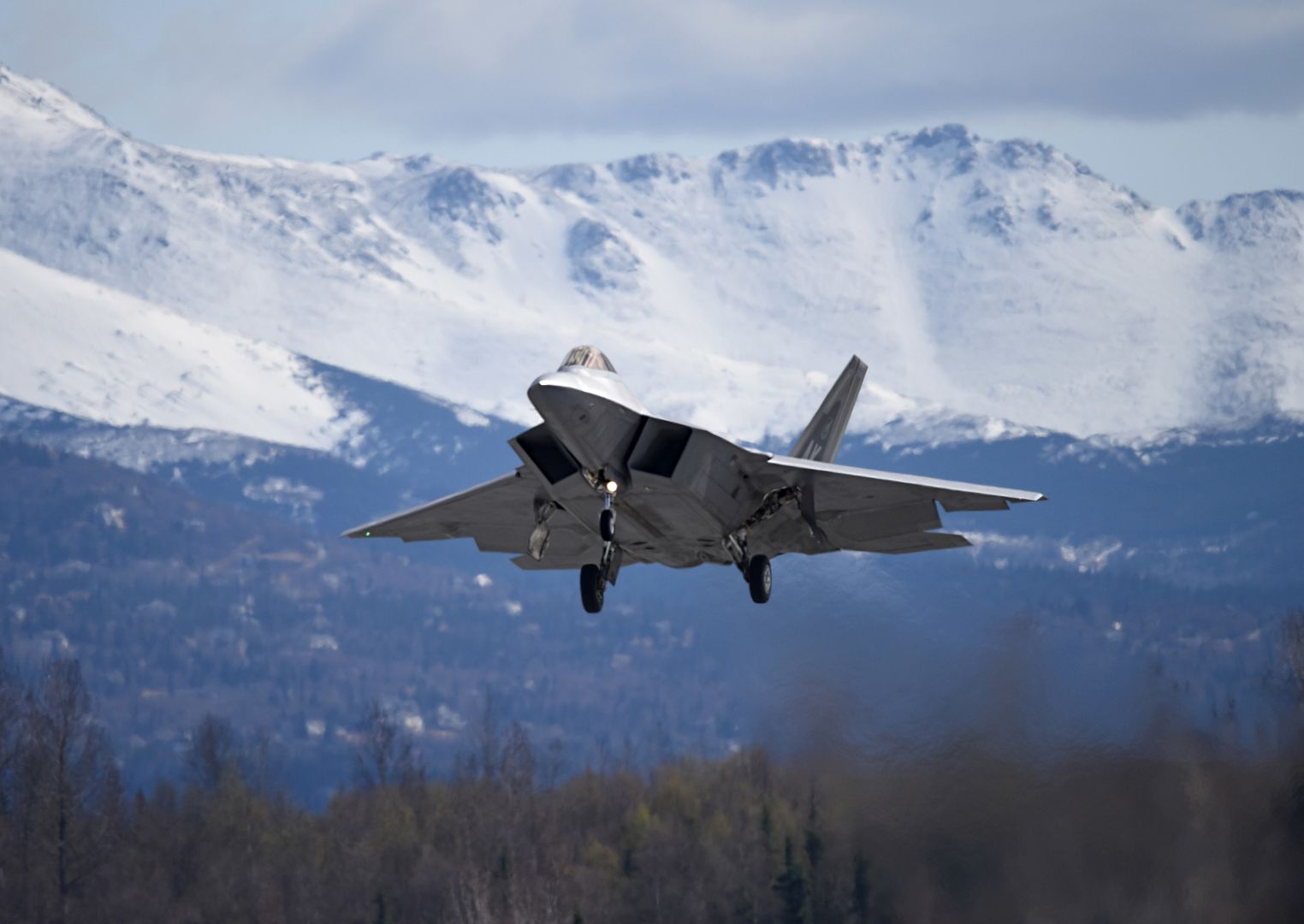
A U.S. Air Force F-22 Raptor assigned to the 3rd Wing touches down at Joint Base Elmendorf-Richardson, Alaska, May 7, 2018. The F-22 Raptor is the U.S. Air Force?s premium fifth-generation fighter asset. (Photo by Jamal Wilson)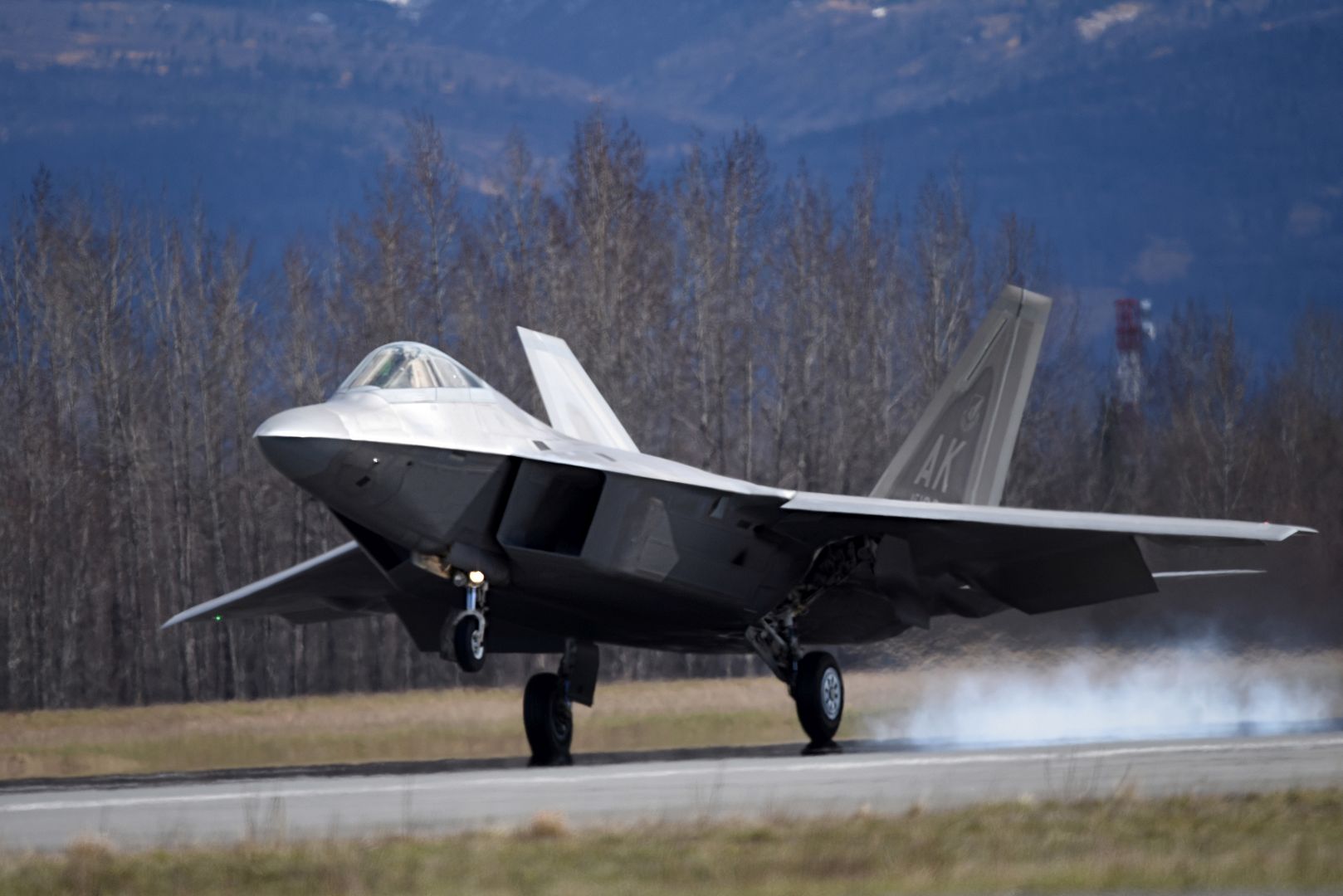
A U.S. Air Force B-52H Stratofortress aircraft from the 2nd Bomb Wing at Barksdale Air Force Base La., prepares to receive fuel from a KC-135 Stratotanker aircraft assigned to the 6th Air Mobility Wing at MacDill Air Force Base, Fla., May 7, 2018. MacDill?s mission is to provide unmatched air refueling and executive airlift to support joint and coalition forces across the globe. (U.S. Air Force photo's by Airman 1st Class Ashley Perdue)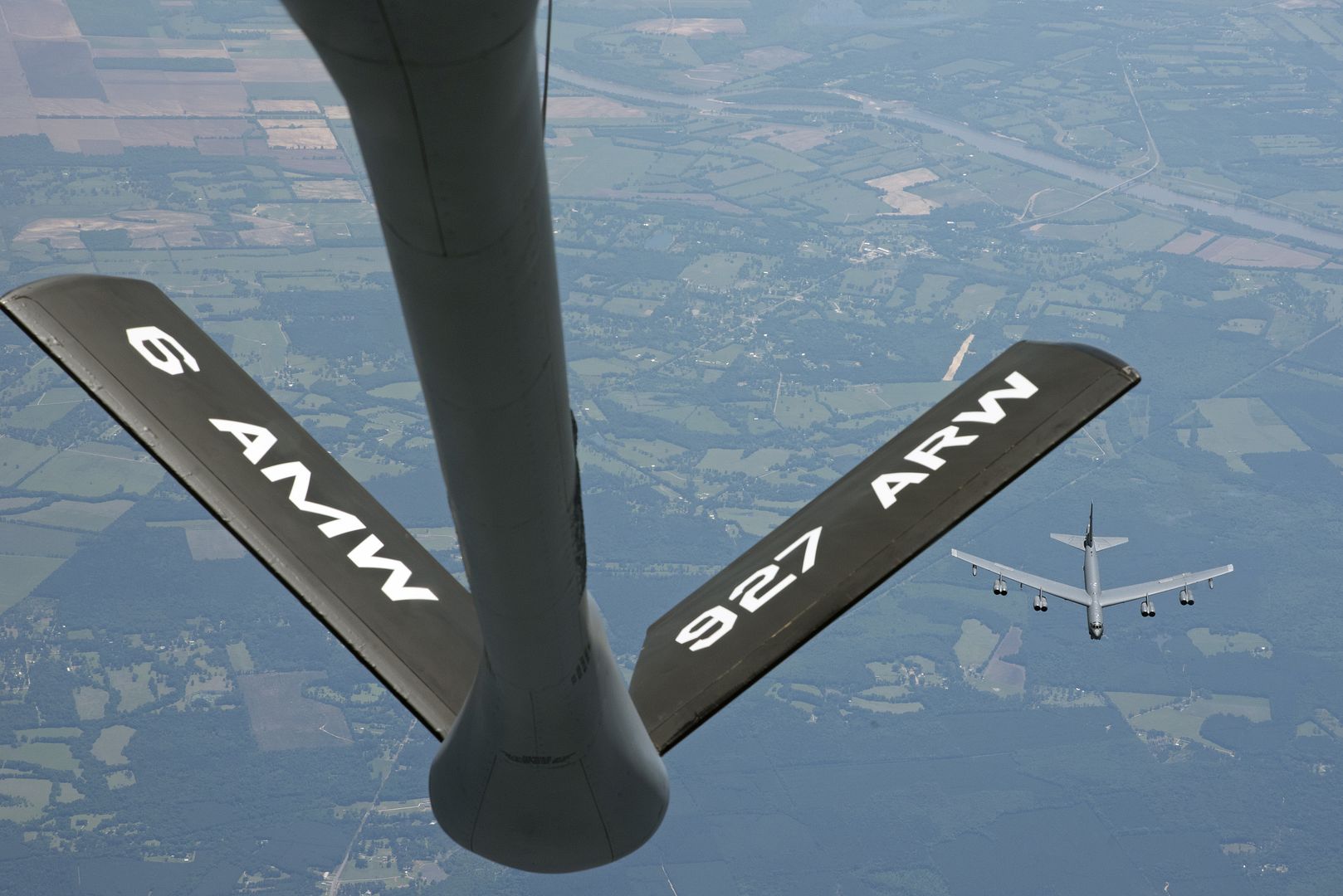
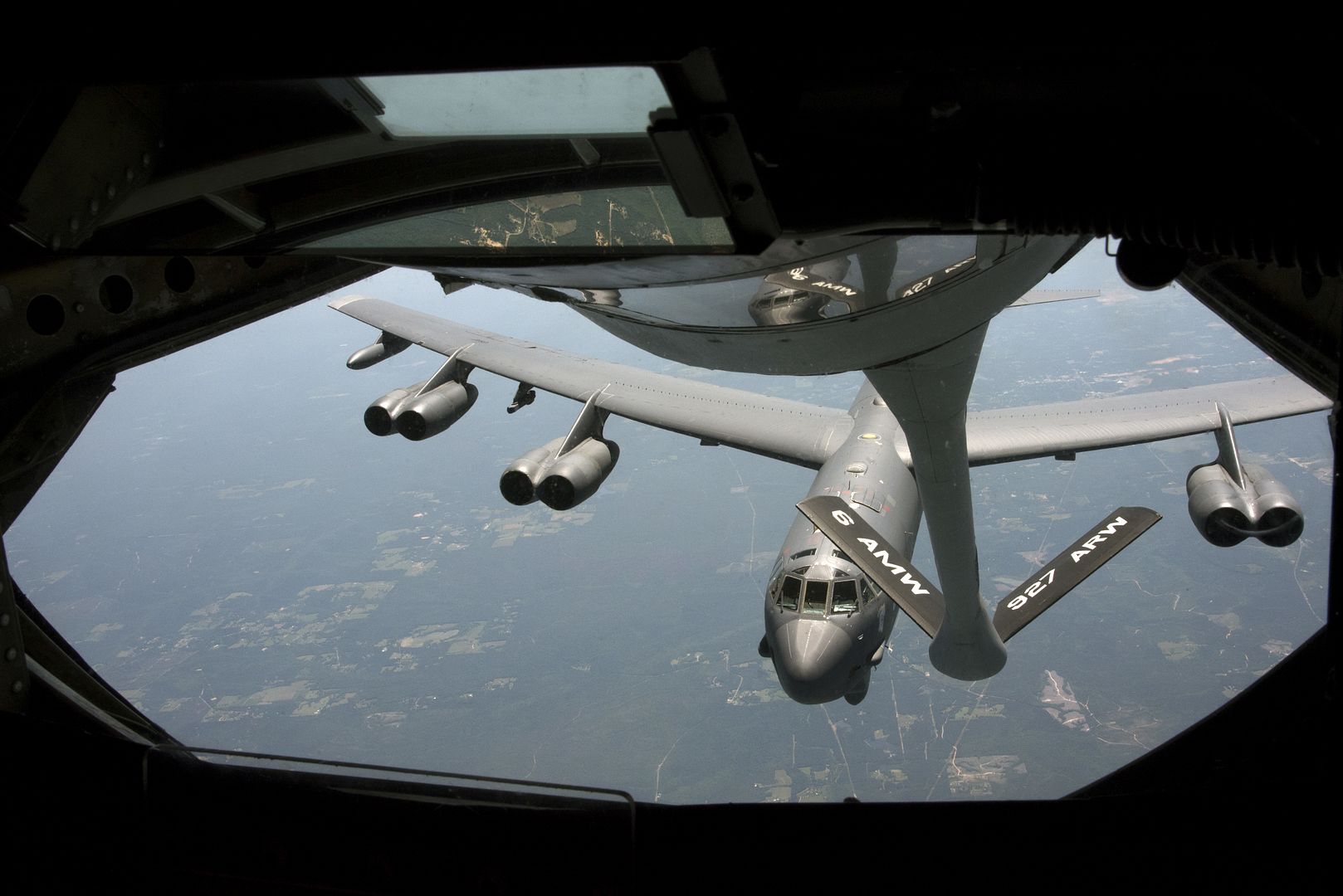
MEDITERRANEAN SEA (May 8, 2018) An F/A-18F Super Hornet assigned to the "Red Rippers" of Strike Fighter Squadron (VFA) 11 launches from the flight deck of the Nimitz-class aircraft carrier USS Harry S. Truman (CVN 75). The Harry S. Truman Carrier Strike Group's support of Operation Inherent Resolve demonstrates the capability and flexibility of U.S. Naval Forces, and its resolve to eliminate the terrorist group ISIS and the threat it poses. (U.S. Navy photo by Mass Communication Specialist 2nd Class Thomas Gooley/Released)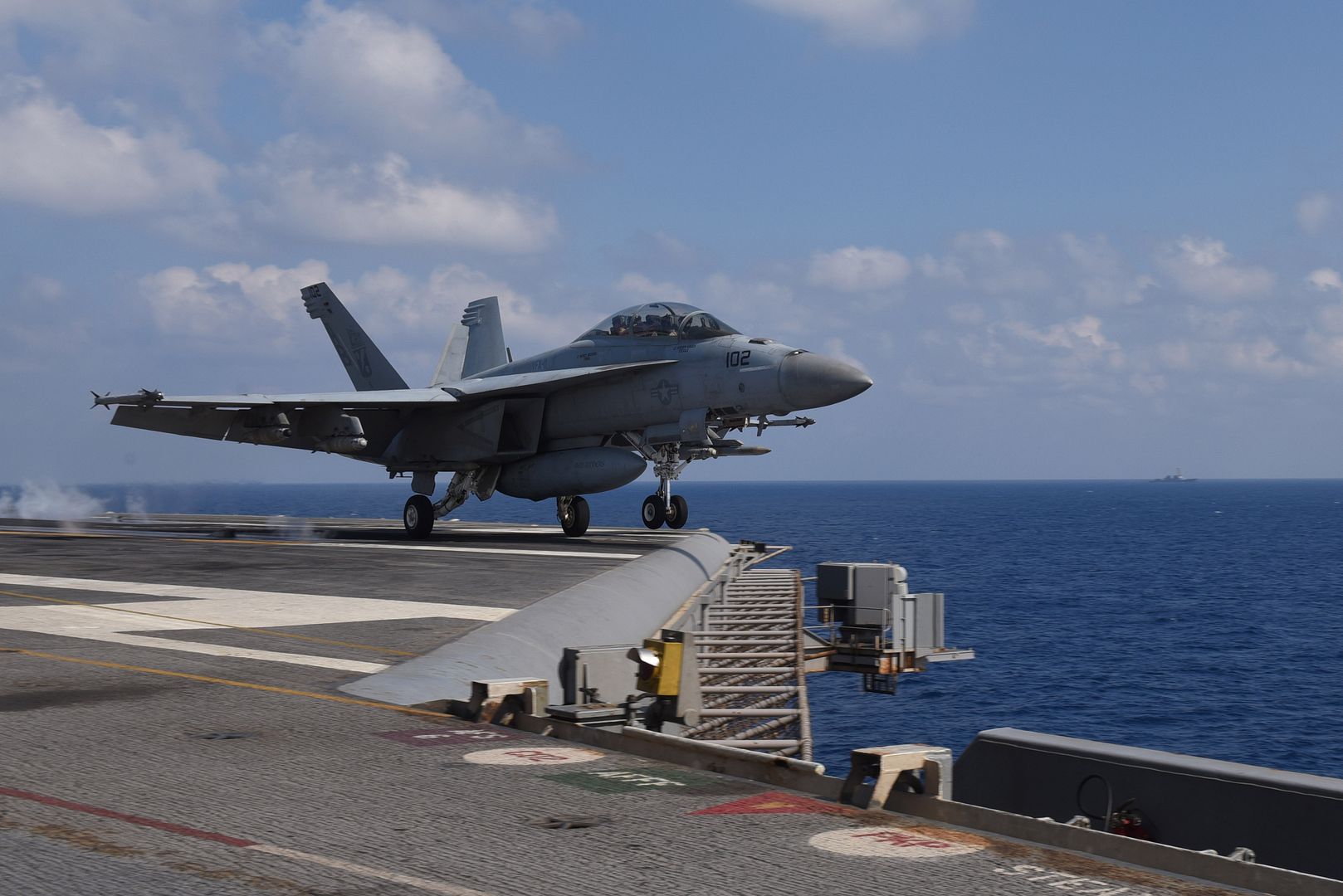
-
 Main AdminA Philippine Air Force OV-10A/C Bronco from the 16th Attack Squadron, 15th Strike Wing, Maj. Danilo Atienza Air Base, Cavite City, is parked on the flight line at Clark Air Base, Philippines, May 8, 2018. Two OV-10s were at Clark Air Base in support of Exercise Balikatan. Balikatan, in its 34th iteration, is an annual U.S.-Philippine military training exercise focused on a variety of missions, including humanitarian assistance and disaster relief, counterterrorism and other combined military operations held from May 7 to 18. (U.S. Air Force photo by Senior Airman Javier Alvarez)
Main AdminA Philippine Air Force OV-10A/C Bronco from the 16th Attack Squadron, 15th Strike Wing, Maj. Danilo Atienza Air Base, Cavite City, is parked on the flight line at Clark Air Base, Philippines, May 8, 2018. Two OV-10s were at Clark Air Base in support of Exercise Balikatan. Balikatan, in its 34th iteration, is an annual U.S.-Philippine military training exercise focused on a variety of missions, including humanitarian assistance and disaster relief, counterterrorism and other combined military operations held from May 7 to 18. (U.S. Air Force photo by Senior Airman Javier Alvarez)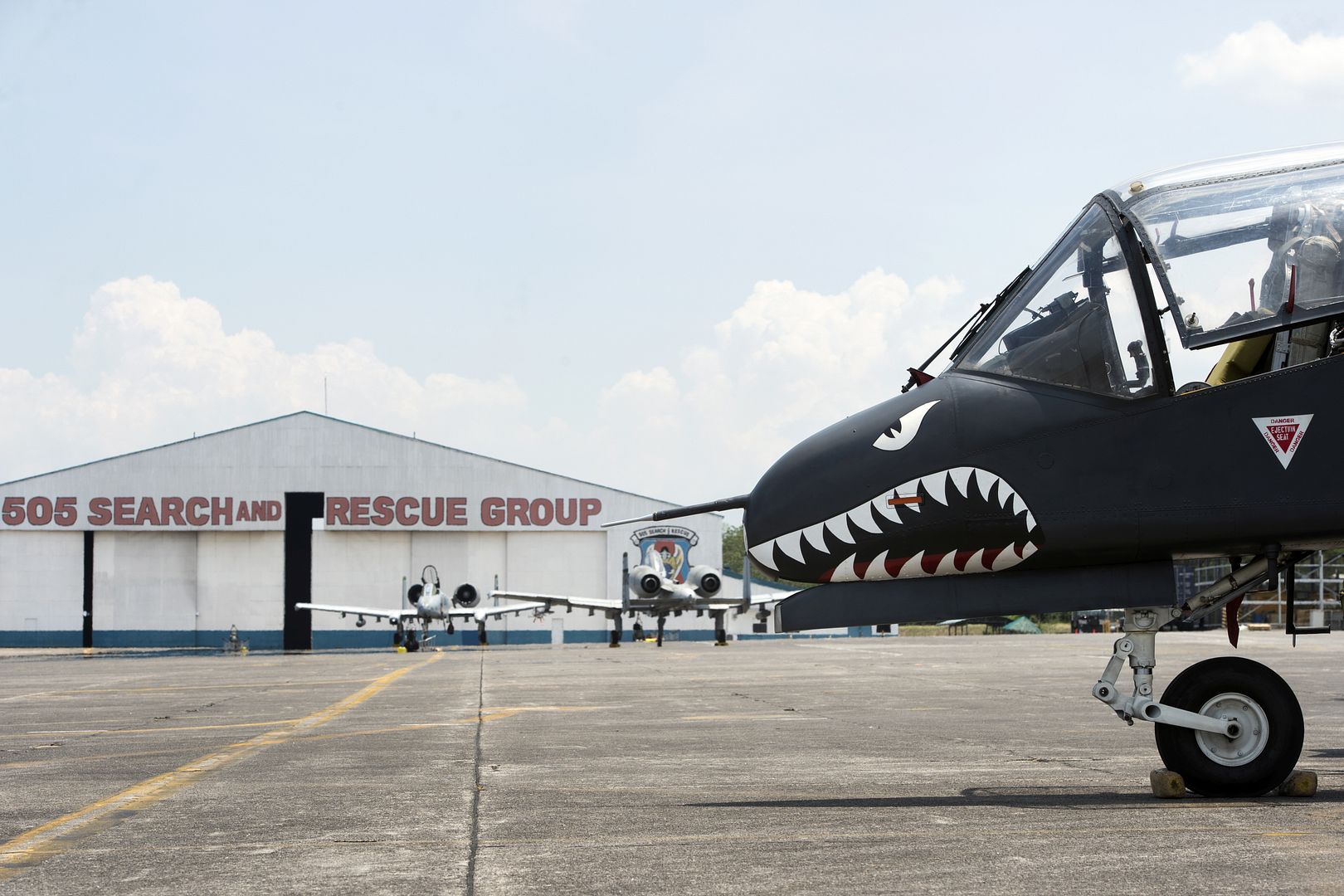
A Qatar Emiri Air Force C-17 Globemaster shoots flares during the Qatar Emiri Air Force Lahoub exercise at Al-Qalael dropzone, Qatar, May 9, 2018. The C-17 is able to operate on small, austere airfields previously limited to C-130s. The U.S. and Qatar work together to foster military cooperation to strengthen & expand contributions to the Coalition?s fight against ISIS. (U.S. Air Force Photo by Staff Sgt. Corey Hook)
An F-15C Eagle assigned to the 493rd Fighter Squadron lands at Royal Air Force Lakenheath, England, May 10. The 493d trains regularly to ensure RAF Lakenheath brings unique air combat capabilities to the fight. (U.S. Air Force photo/ Tech. Sgt. Matthew Plew)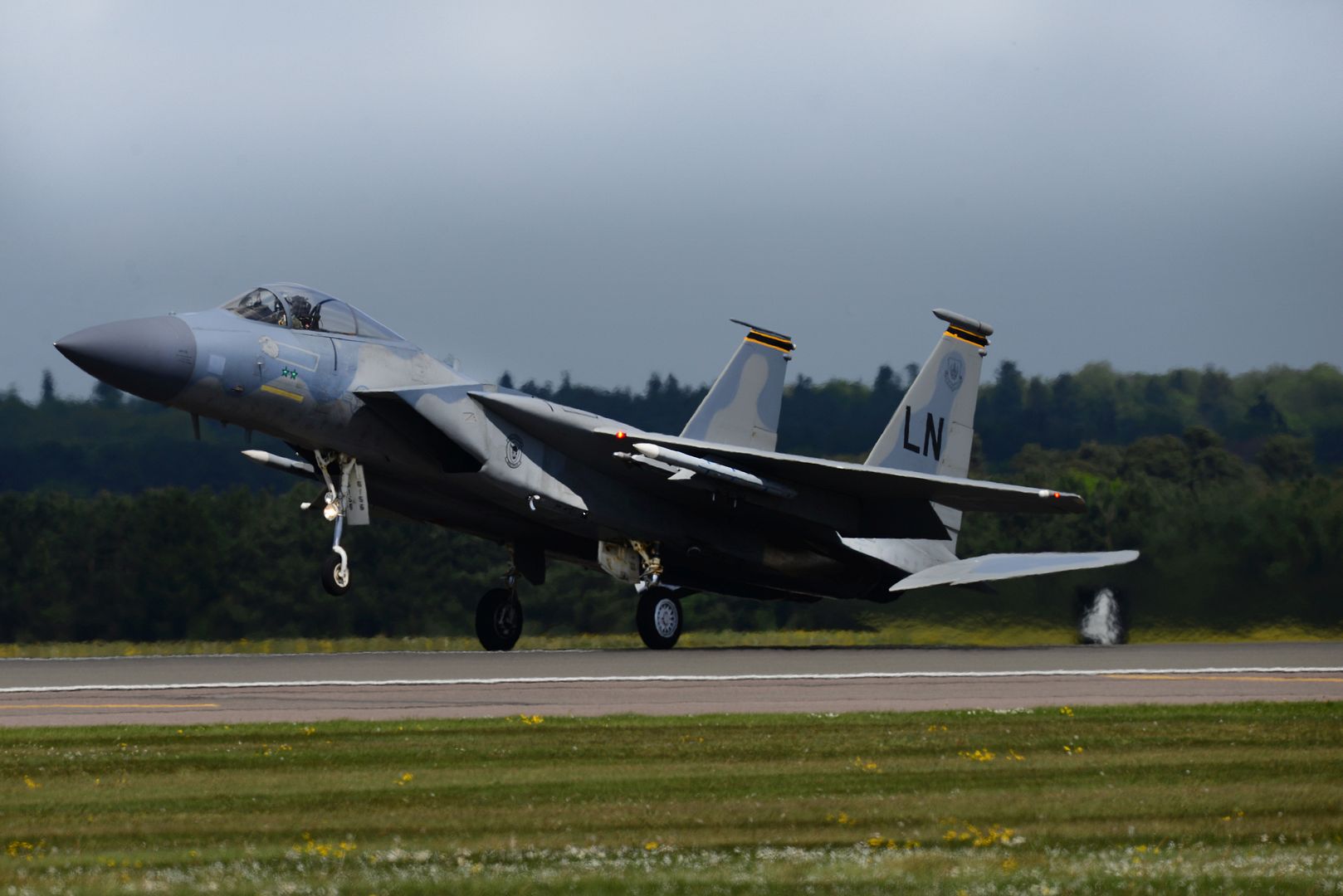
An F-15E Strike Eagle assigned to the 492nd Fighter Squadron flies over Royal Air Force Lakenheath, England, May 10. The 492nd trains regularly to ensure RAF Lakenheath brings unique air combat capabilities to the fight. (U.S. Air Force photo/ Tech. Sgt. Matthew Plew)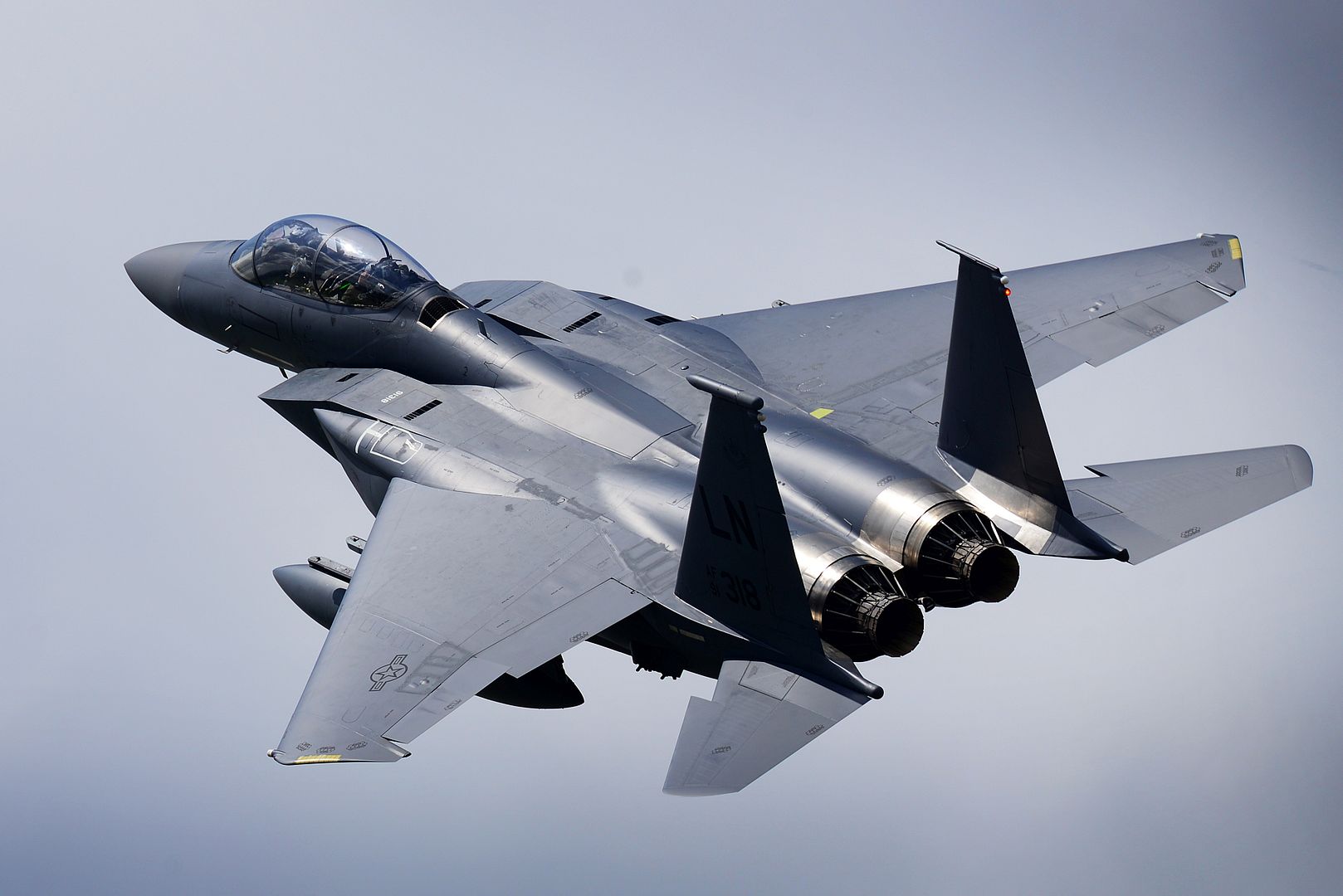
MEDITERRANEAN SEA (May 9, 2018) An E-2D Hawkeye, assigned to the "Sea Hawks" of Carrier Airborne Early Warning Squadron (VAW) 126, launches from the flight deck aboard USS Harry S. Truman (CVN 75). As the Carrier Strike Group 8 flag ship, Truman's support of Operation Inherent Resolve demonstrates the capability and flexibility of U.S. Naval Forces, and its resolve to eliminate the terrorist group ISIS and the threat it poses. (U.S. Navy photo by Mass Communication Specialist 2nd Class Thomas Gooley/Released)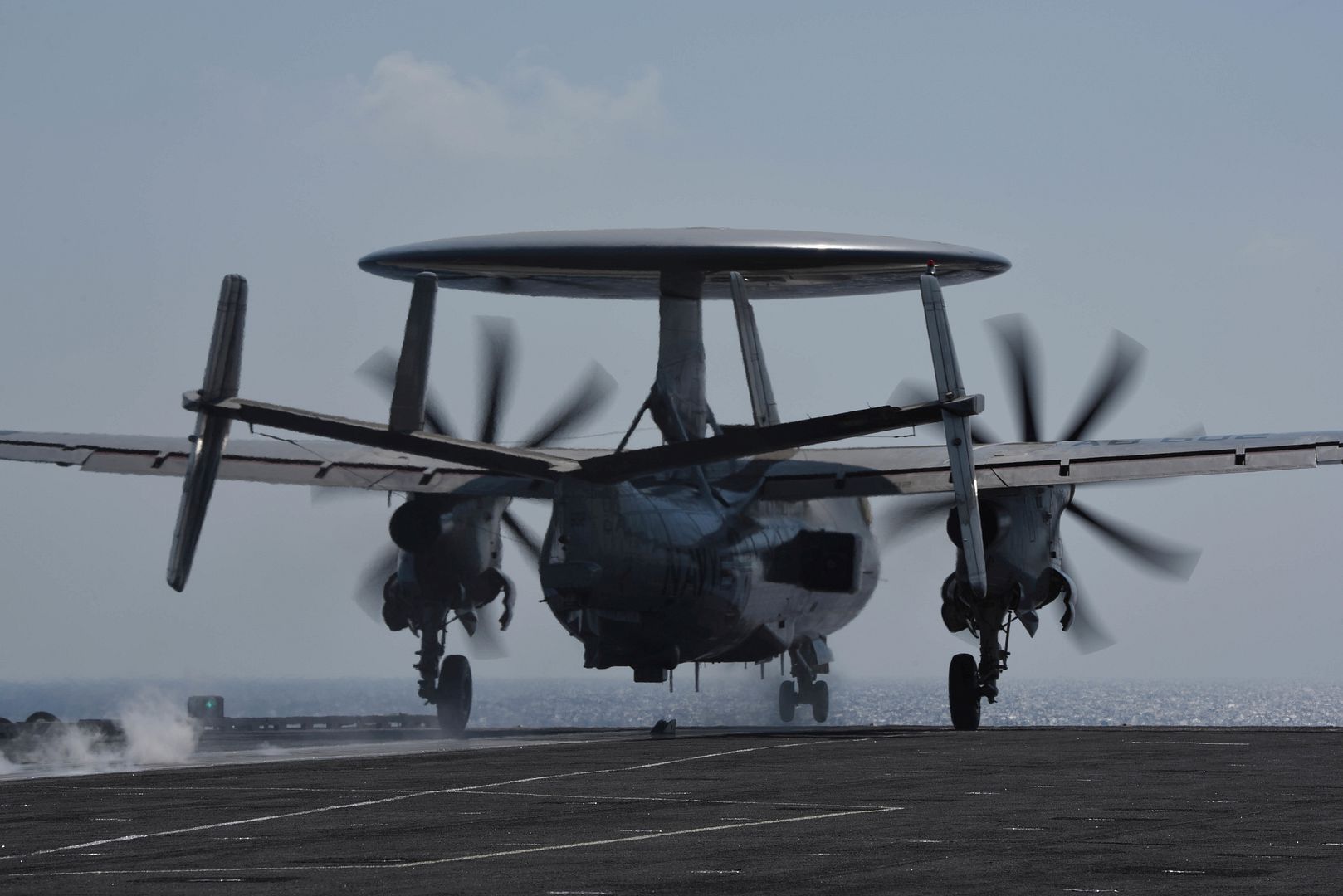
ATLANTIC OCEAN (May 8, 2018) An F/A-18E Super Hornet assigned to the Jolly Rogers of Strike Fighter Squadron (VFA) 103 performs an arrested landing on the flight deck of the Nimitz-class aircraft carrier USS Abraham Lincoln (CVN 72). (U.S. Navy photo by Mass Communication Specialist 1st Class Brian M. Wilbur/Released)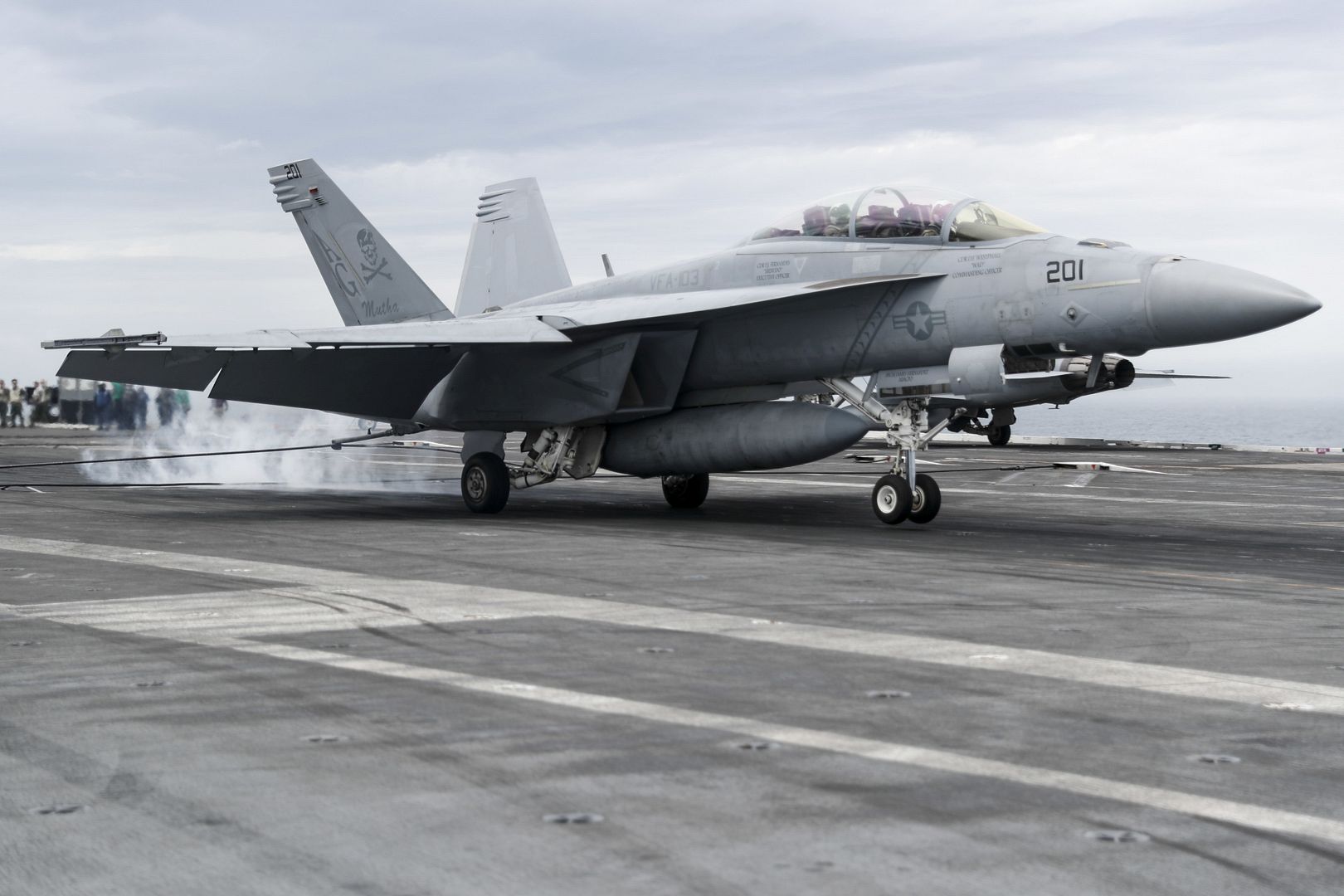
-
 Main AdminATLANTIC OCEAN (May 10, 2018) A E-2C Hawkeye attached to squadron4F of the French navy lands aboard the aircraft carrier USS George H.W. Bush (CVN 77). The ship is underway in the Atlantic Ocean conducting carrier air wing exercises with the French navy to strengthen partnerships and deepen interoperability between the two nations' naval forces. (U.S. Navy photo by Mass Communication Specialist 2nd Class Joseph E. Montemarano)
Main AdminATLANTIC OCEAN (May 10, 2018) A E-2C Hawkeye attached to squadron4F of the French navy lands aboard the aircraft carrier USS George H.W. Bush (CVN 77). The ship is underway in the Atlantic Ocean conducting carrier air wing exercises with the French navy to strengthen partnerships and deepen interoperability between the two nations' naval forces. (U.S. Navy photo by Mass Communication Specialist 2nd Class Joseph E. Montemarano)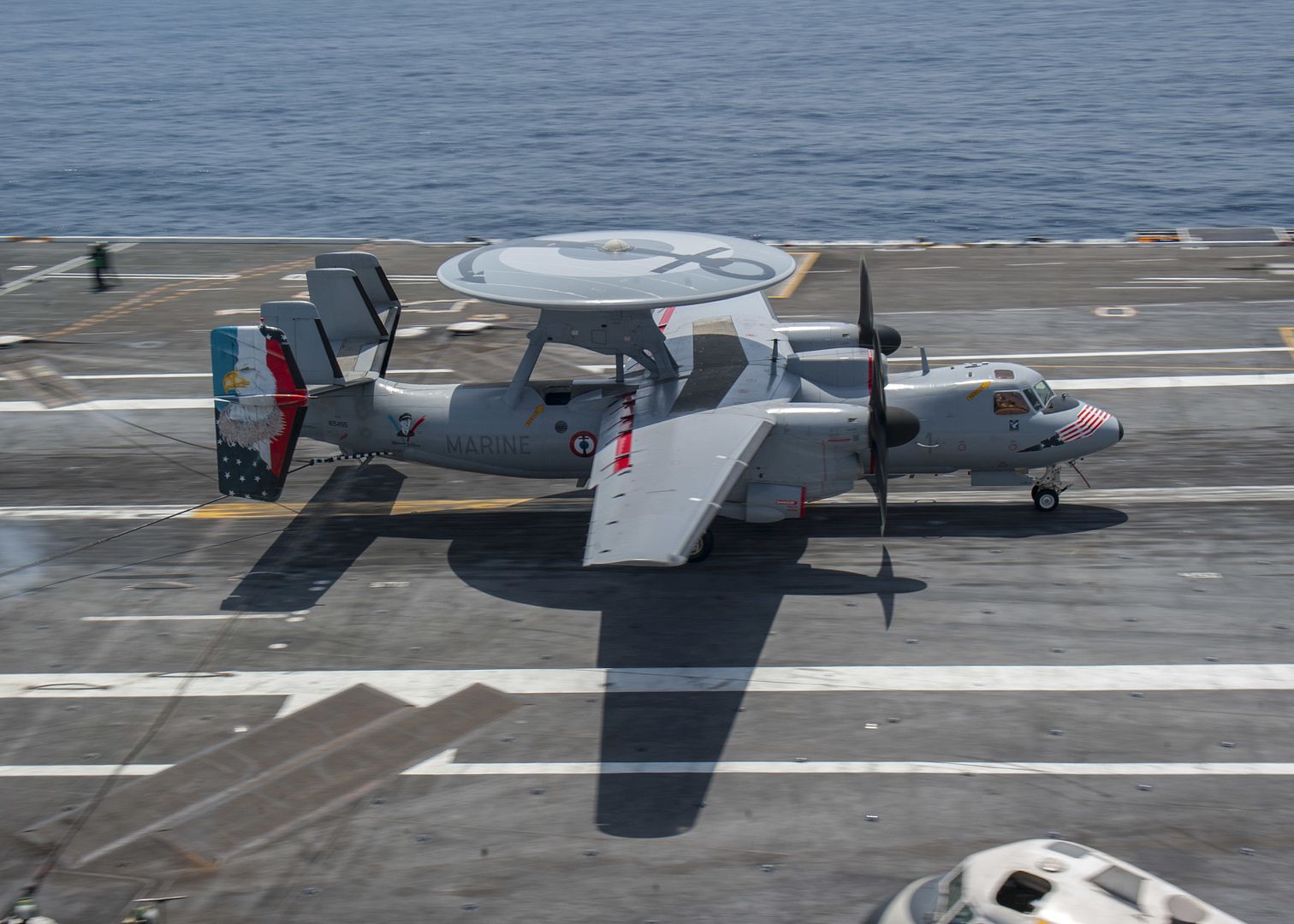
ATLANTIC OCEAN (May 10, 2018) A Rafale Marine attached to squadron 17F of the French navy launches off the flight deck of the aircraft carrier USS George H.W. Bush (CVN 77). GHWB is underway in the Atlantic Ocean conducting carrier air wing exercises with the French navy to strengthen partnerships and deepen interoperability between the two nations' naval forces. (U.S. Navy photo by Mass Communication Specialist 2nd Class David Mora Jr.)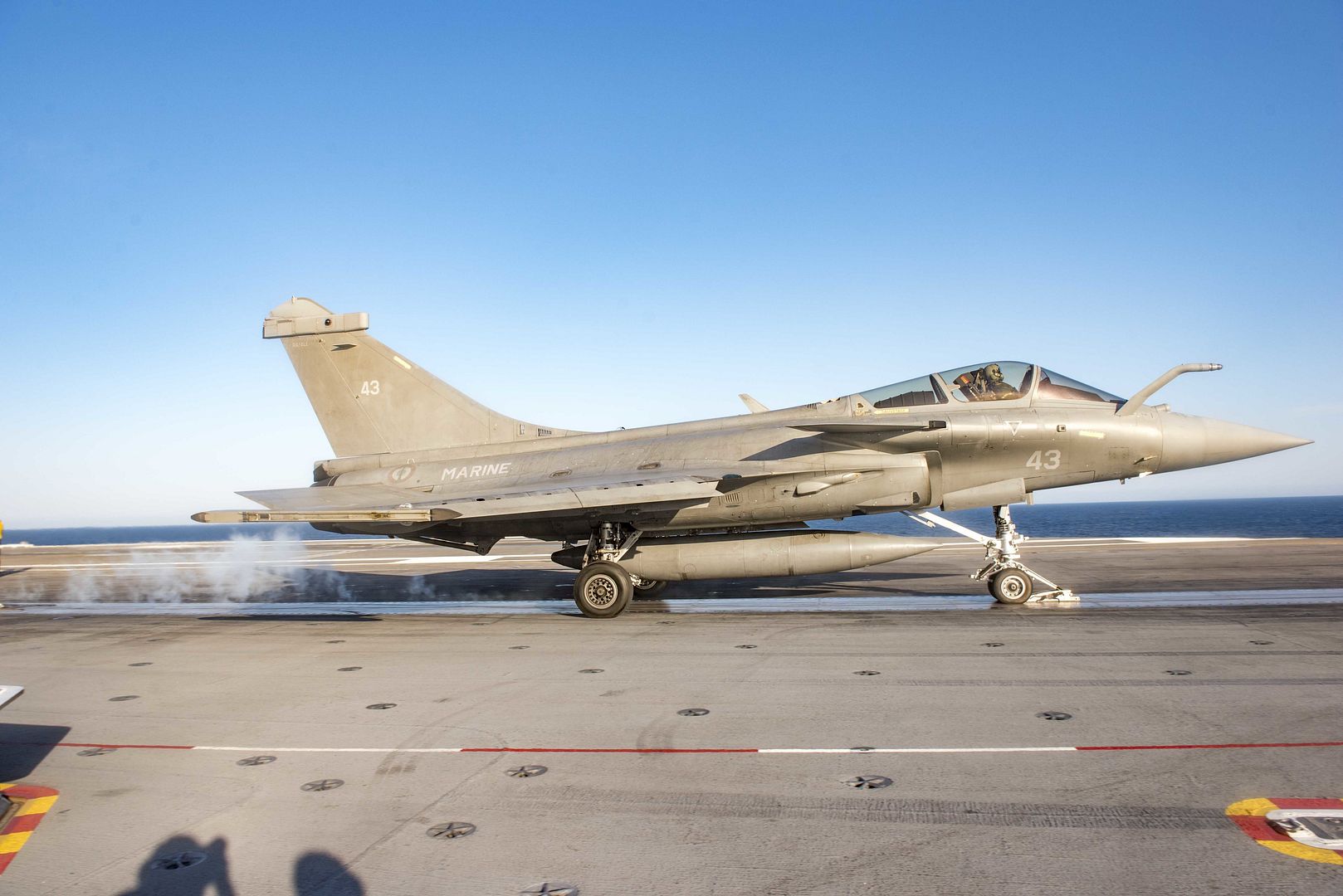
ATLANTIC OCEAN (May 10, 2018) A Rafale Marine attached to squadron 17F of the French navy lands on the flight deck of the aircraft carrier USS George H.W. Bush (CVN 77). GHWB is underway in the Atlantic Ocean conducting carrier air wing exercises with the French navy to strengthen partnerships and deepen interoperability between the two nations' naval forces. (U.S. Navy photo by Mass Communication Specialist 2nd Class David Mora Jr.)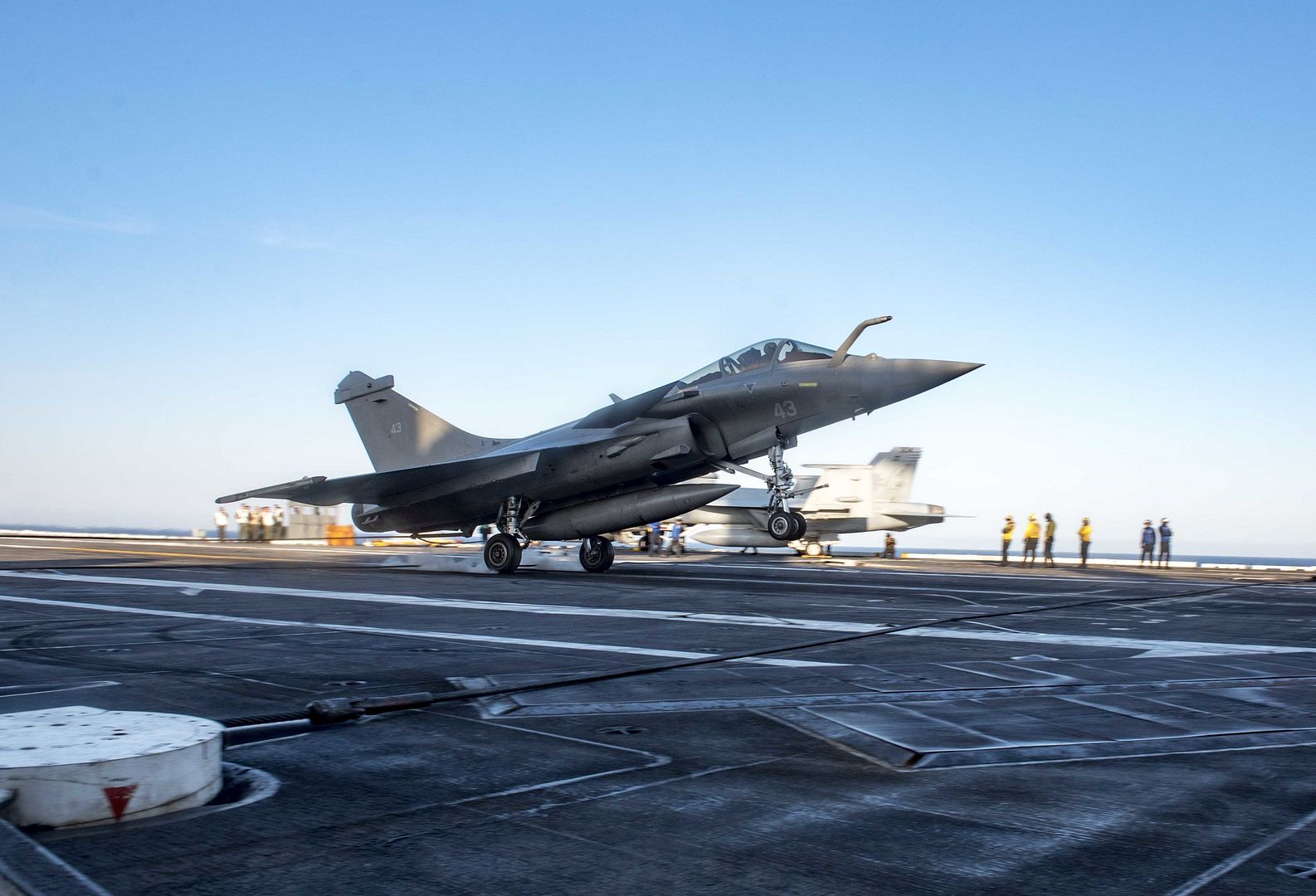
ATLANTIC OCEAN (May 10, 2018) A Rafale Marine attached to squadron 17F of the French navy prepares to land on the flight deck of the aircraft carrier USS George H.W. Bush (CVN 77). The ship is underway in the Atlantic Ocean conducting carrier air wing exercises with the French navy to strengthen partnerships and deepen interoperability between the two nations' naval forces. (U.S. Navy photo by Mass Communication Specialist 3rd Class Zachary P. Wickline)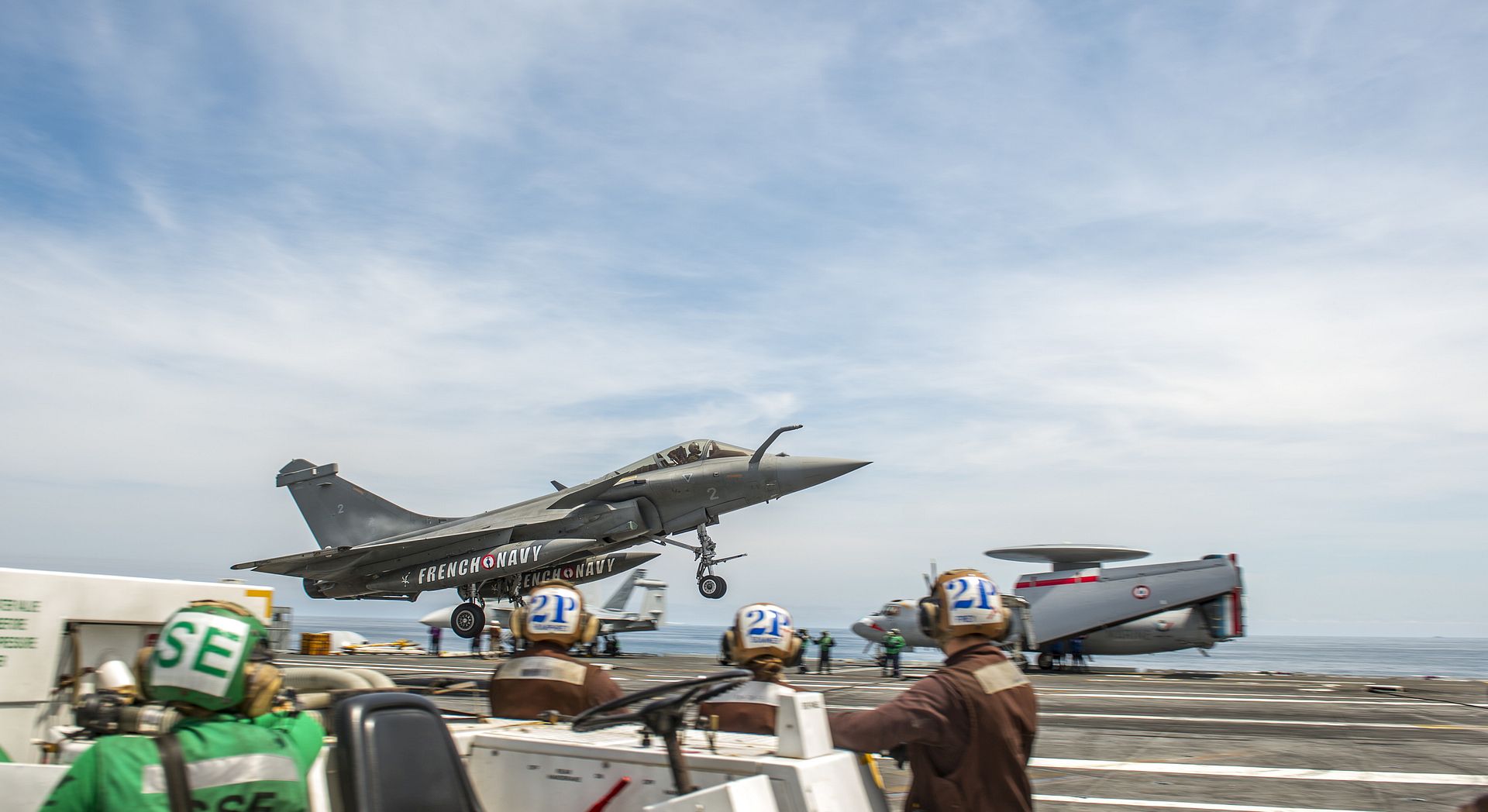
ATLANTIC OCEAN (May 10, 2018) A Rafale Marine attached to squadron 17F of the French navy prepares to land on the flight deck of the aircraft carrier USS George H.W. Bush (CVN 77). The Ship is underway in the Atlantic Ocean conducting carrier air wing exercises with the French navy to strengthen partnerships and deepen interoperability between the two nations' naval forces. (U.S. Navy photo by Mass Communication Specialist 3rd Class Zachary P. Wickline)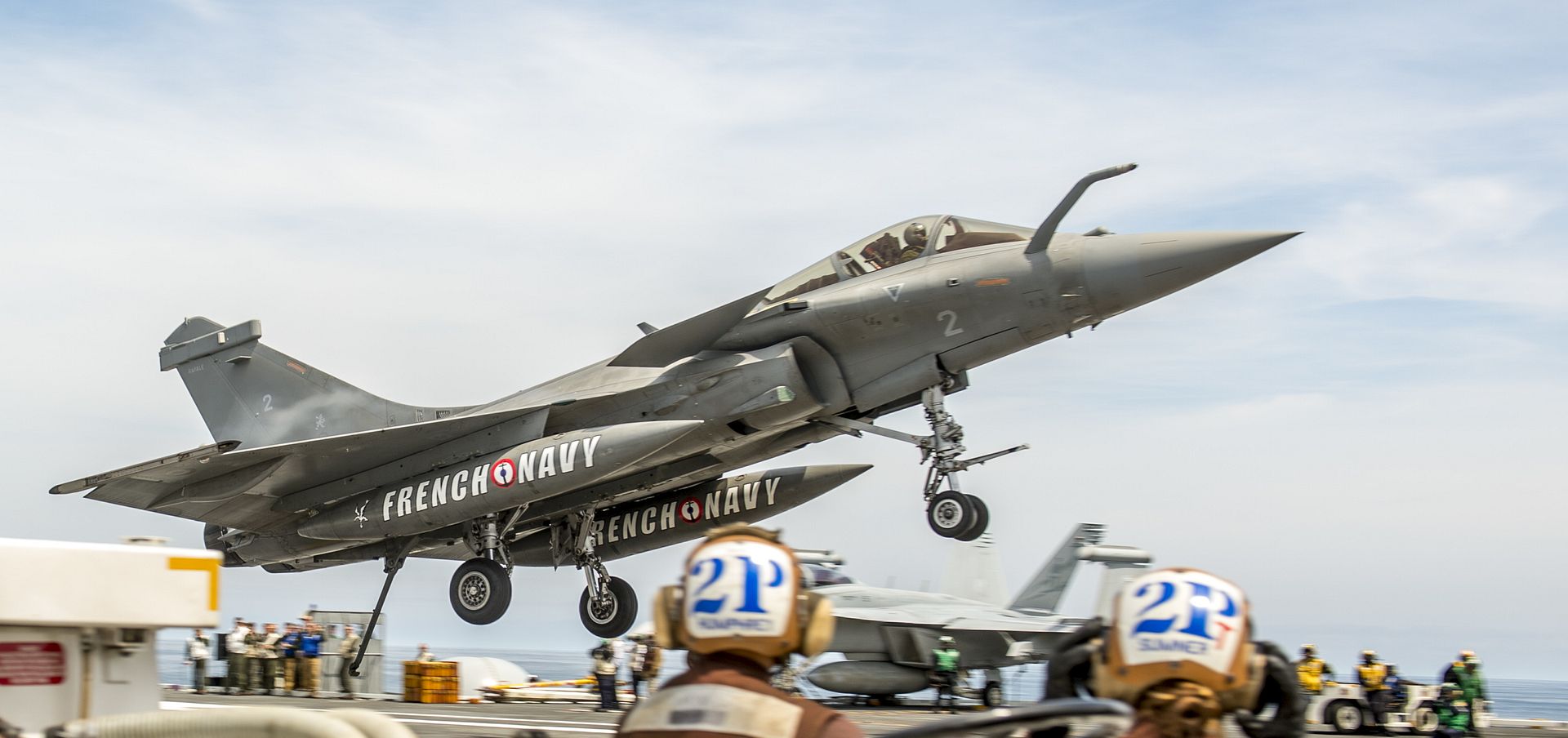
ATLANTIC OCEAN (May 10, 2018) A Rafale Marine attached to squadron 17F of the French navy prepares to launch off the flight deck of the aircraft carrier USS George H.W. Bush (CVN 77). GHWB is underway in the Atlantic Ocean conducting carrier air wing exercises with the French navy to strengthen partnerships and deepen interoperability between the two nations' naval forces. (U.S. Navy photo by Mass Communication Specialist 2nd Class David Mora Jr.)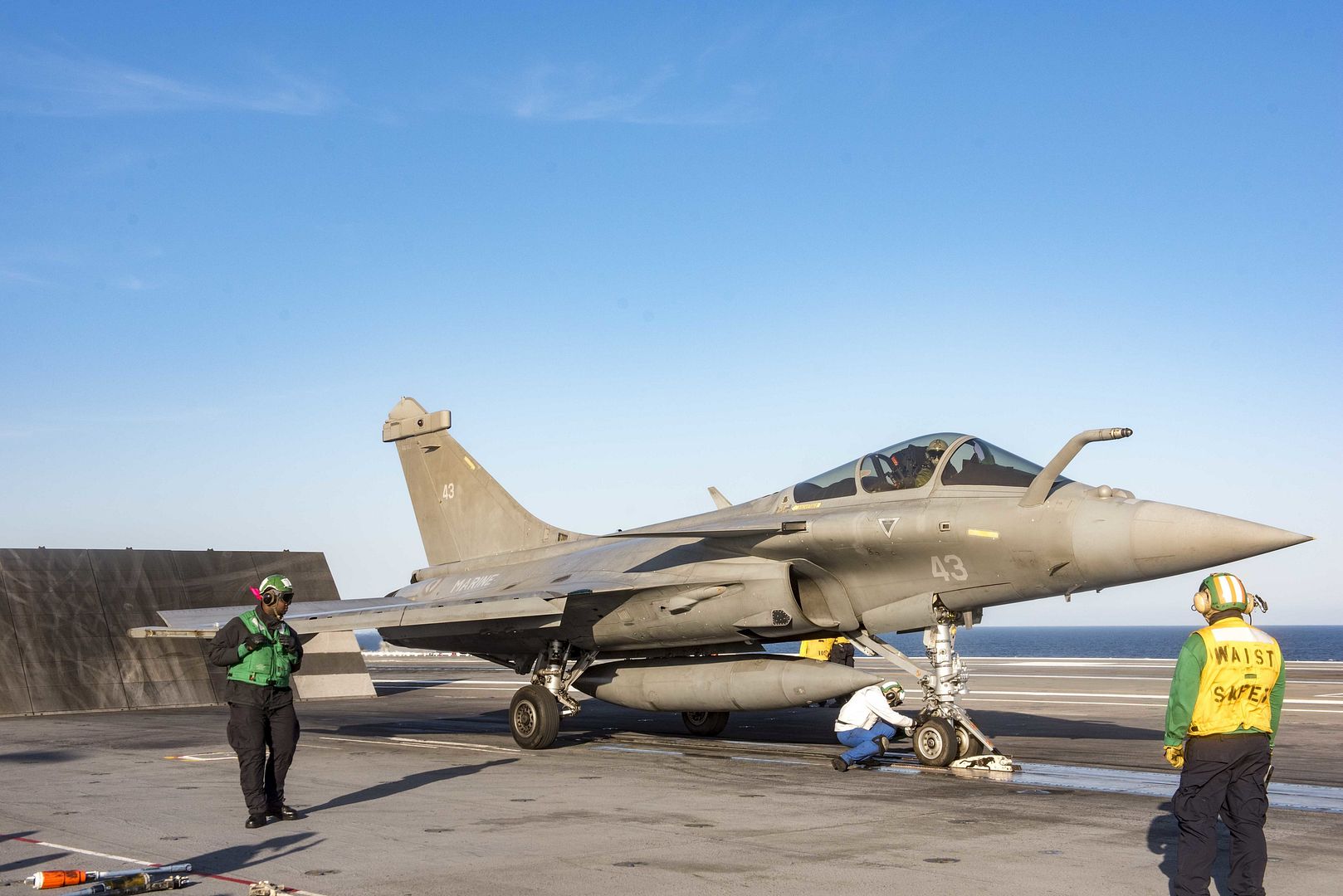
A U.S. Air Force F-15E Strike Eagle flies over Iraq on May 5, 2018. The F-15E is a dual-role fighter designed to perform air-to-air and air-to-ground missions. An array of avionics and electronics systems gives the F-15E the capability to fight at low altitude, day or night, and in all weather. (U.S. Air Force photo by Staff Sgt. Corey Hook)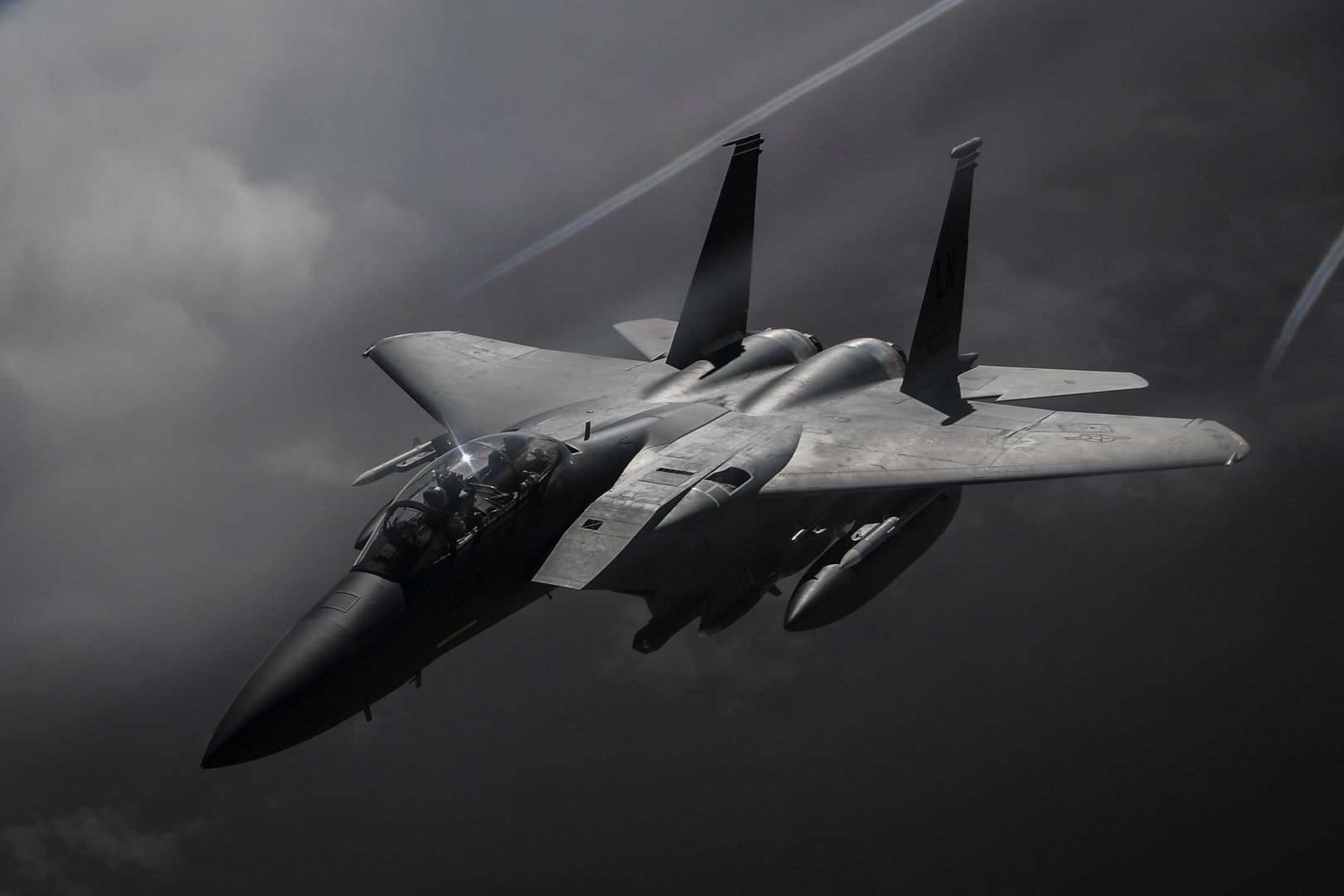
-
 Main AdminThe Royal Canadian Air Force?s Snowbirds are parked on the flight line at Peterson Air Force Base, Colo., May 12, 2018. The Snowbirds aerial demonstration team performed a fly over in missing-man formation during the North American Aerospace Defense Command's 60th Anniversary Celebration. (DoD photo by Staff Sgt. Emily Kenney, USAF)
Main AdminThe Royal Canadian Air Force?s Snowbirds are parked on the flight line at Peterson Air Force Base, Colo., May 12, 2018. The Snowbirds aerial demonstration team performed a fly over in missing-man formation during the North American Aerospace Defense Command's 60th Anniversary Celebration. (DoD photo by Staff Sgt. Emily Kenney, USAF)
ATLANTIC OCEAN (May 11, 2018) An E-2C Hawkeye attached to squadron 4F of the French navy lands during flight operations on the flight deck aboard the aircraft carrier USS George H.W. Bush (CVN 77). The ship is underway in the Atlantic Ocean conducting carrier air wing exercises with the French navy to strengthen partnerships and deepen interoperability between the two nations' naval forces. (U.S. Navy photo by Mass Communication Specialist 3rd Class Brooke Macchietto)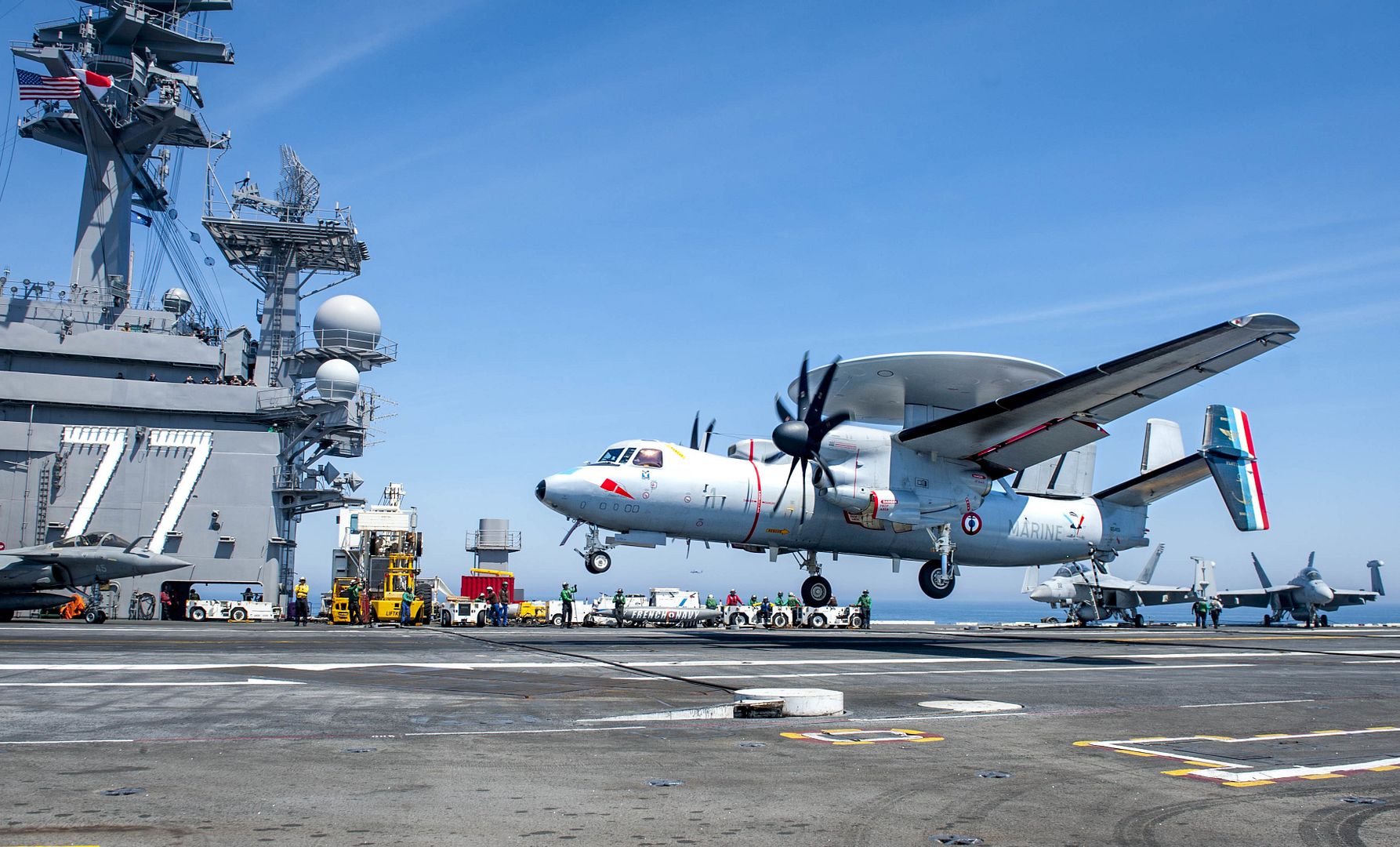
ATLANTIC OCEAN (May 11, 2018) A Rafale Marine attached to squadron 17F of the French navy lands during flight operations on the flight deck aboard the aircraft carrier USS George H.W. Bush (CVN 77). The ship is underway in the Atlantic Ocean conducting carrier air wing exercises with the French navy to strengthen partnerships and deepen interoperability between the two nations' naval forces. (U.S. Navy photo by Mass Communication Specialist 3rd Class Brooke Macchietto)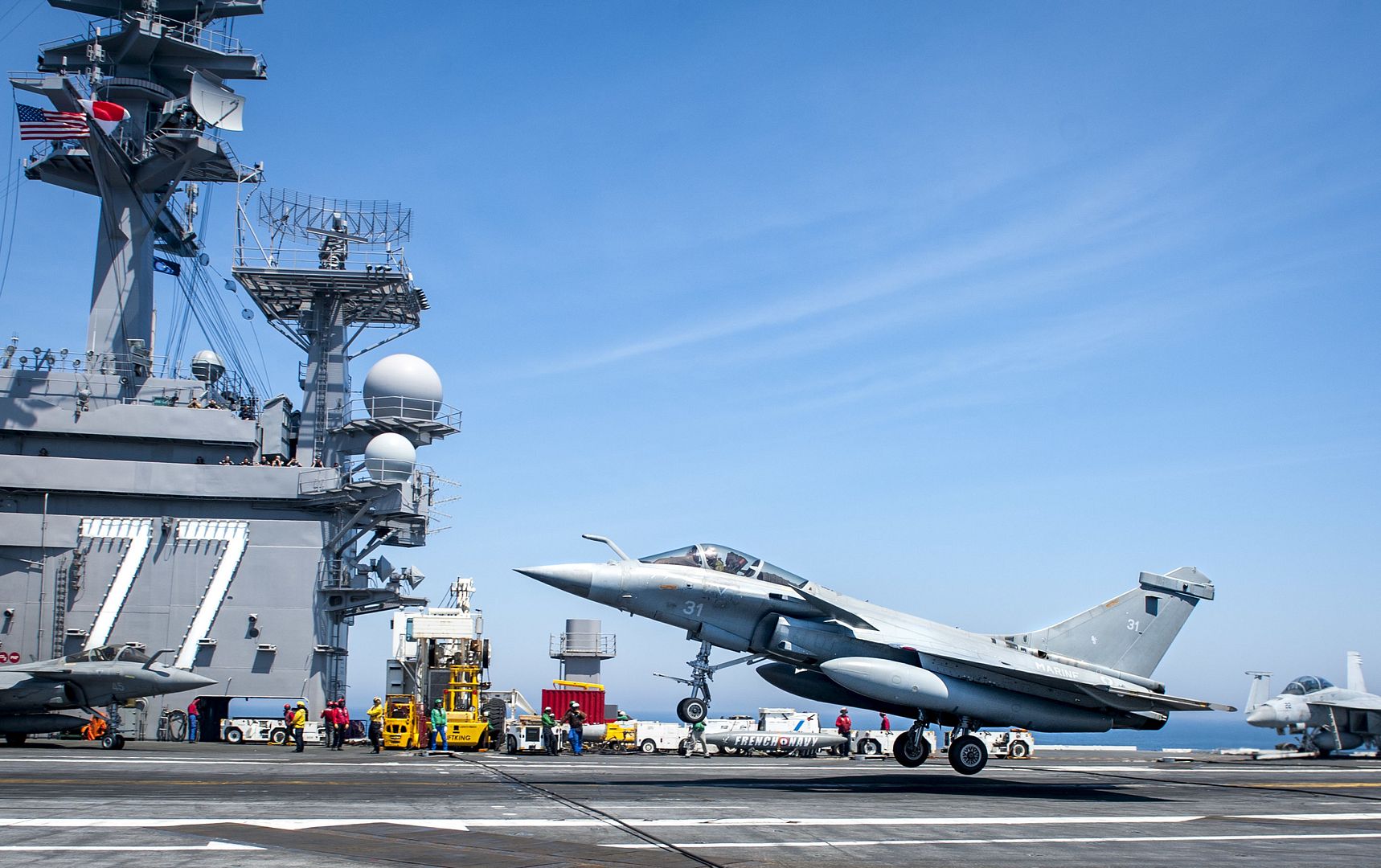
ATLANTIC OCEAN (May 12, 2018) A Rafale Marine attached to squadron 17F of the French navy awaits pre-flight checks before flight operations aboard the aircraft carrier USS George H.W. Bush (CVN 77). The ship is underway in the Atlantic Ocean conducting carrier air wing exercises with the French navy to strengthen partnerships and deepen interoperability between the two nations' naval forces. (U.S. Navy photo by Mass Communication Specialist 3rd Class Joe Boggio)
ATLANTIC OCEAN (May 14, 2018) Chief of Naval Operations Adm. John Richardson and Chief of the French navy Adm. Christophe Prazuck arrive aboard the aircraft carrier USS George H.W. Bush (CVN 77) in an C-2A Greyhound attached to Fleet Logistics Support Squadron (VRC) 40. The ship is underway in the Atlantic Ocean conducting carrier air wing exercises with the French navy to strengthen partnerships and deepen interoperability between the two nations' naval forces. (U.S. Navy photo by Mass Communication Specialist 3rd Class Zachary P. Wickline)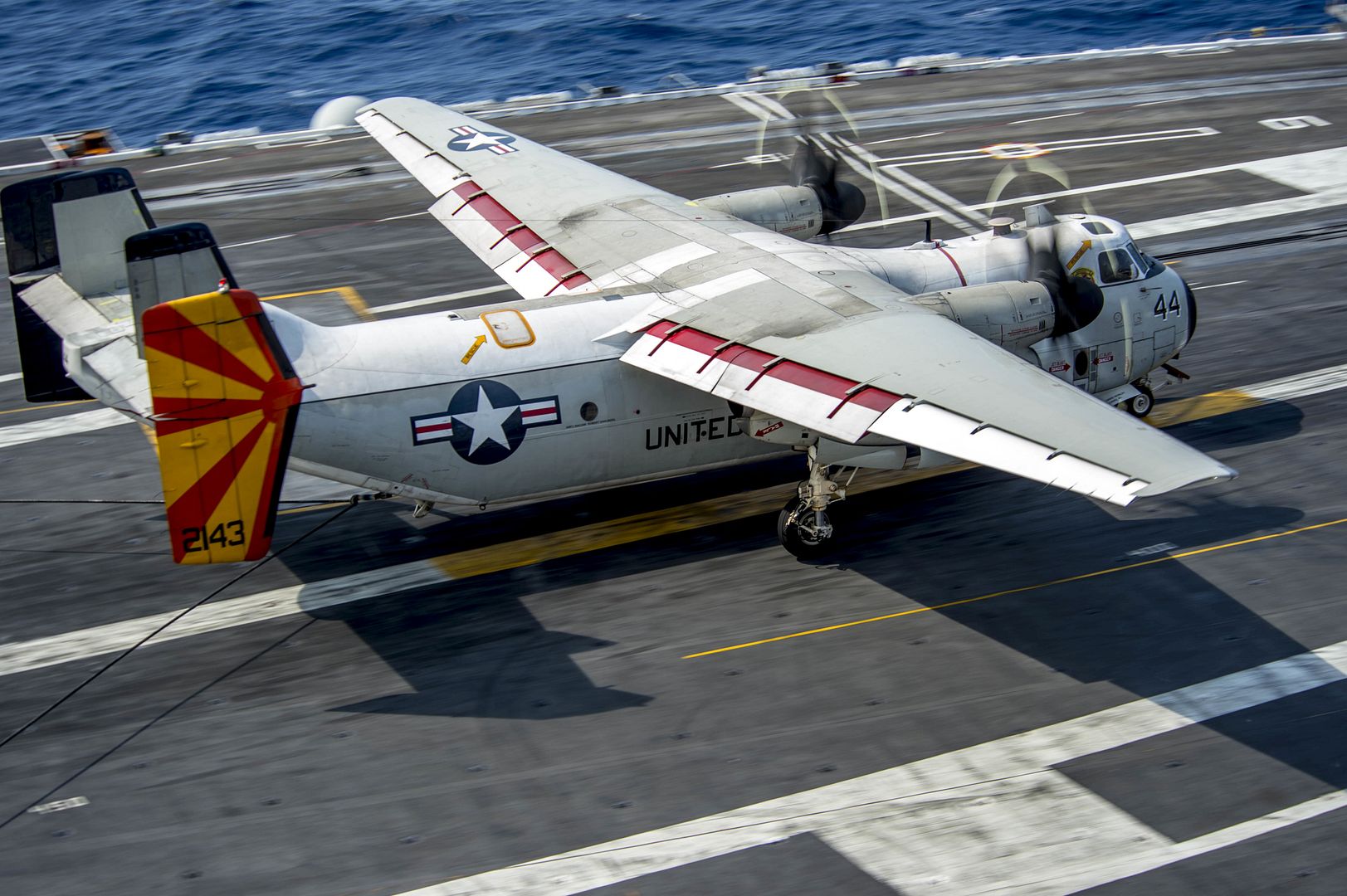
An F-22 Raptor performs high-speed turns during Tampa Bay AirFest 2018 at MacDill Air Force Base, Fla., May 11, 2018. As a part of Air Combat Command?s F-22 Demonstration Team, this fifth-generation fighter aircraft travels around the world to highlight its precise control and performance. (U.S. Air Force photo by Airman 1st Class Adam R. Shanks)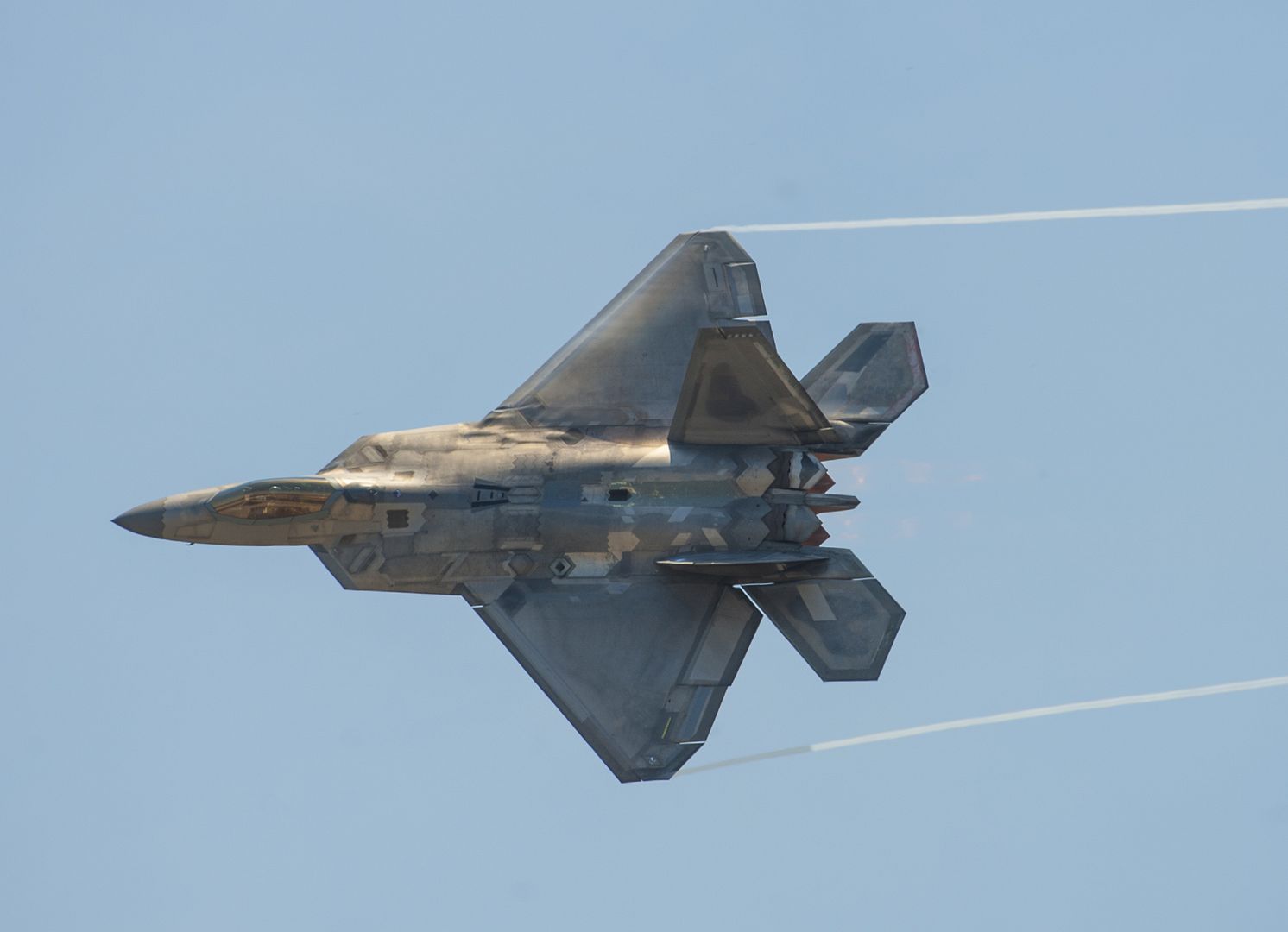
MEDITERRANEAN SEA (May 13, 2018) An F/A-18F Super Hornet assigned to the "Fighting Checkmates" of Strike Fighter Squadron (VFA) 211 prepares to land on the flight deck of the Nimitz-class aircraft carrier USS Harry S. Truman (CVN 75). Harry S. Truman's support of Operation Inherent Resolve demonstrates the capability and flexibility of U.S. Naval Forces and their resolve to eliminate the terrorist group ISIS and the they pose. (U.S. Navy photo by Mass Communication Specialist 3rd Class Kaysee Lohmann/Released)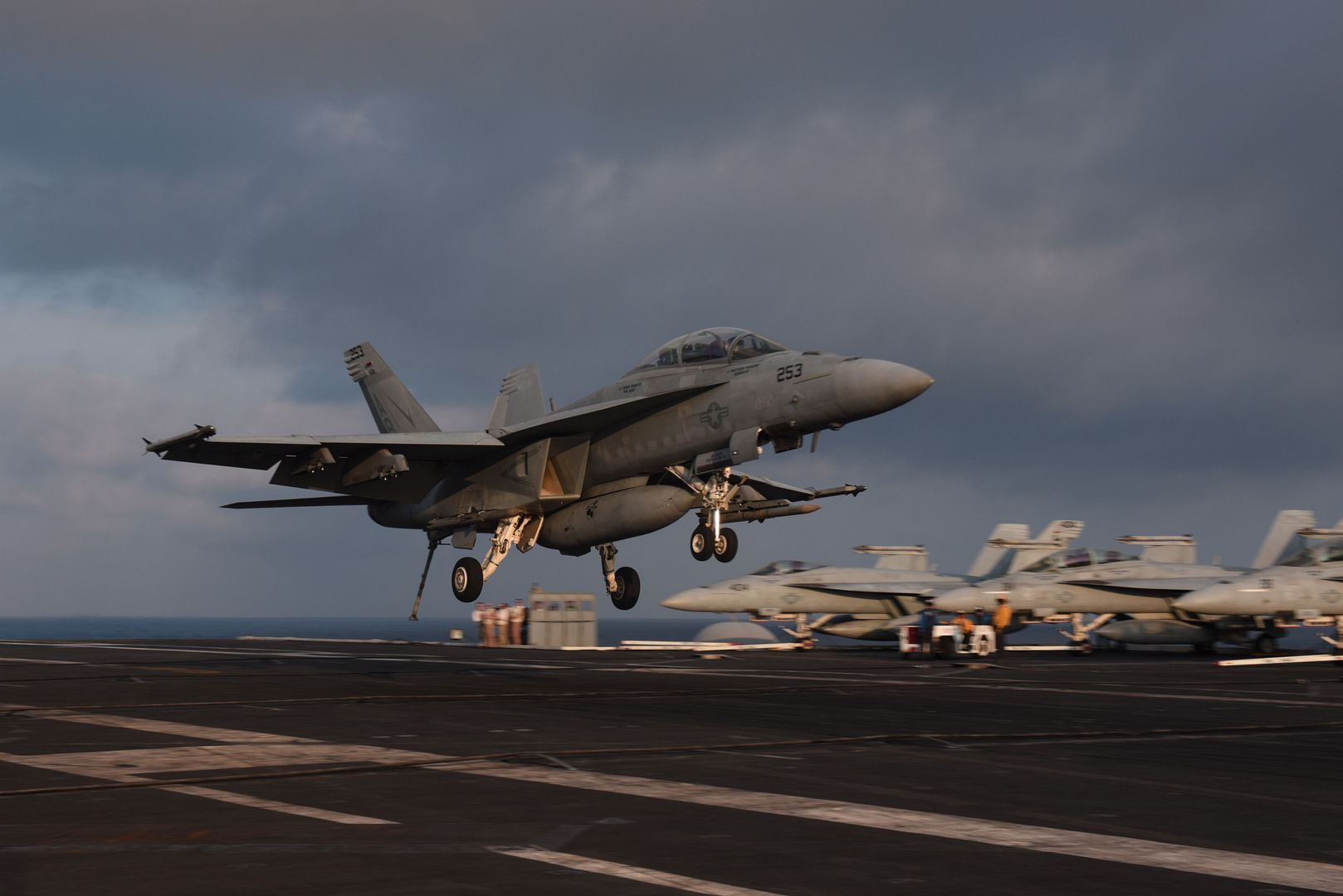
Beijing, China (May 13, 2018) ? Bell Helicopter, a Textron Inc. (NYSE: TXT) company, has received certification for the Bell 505 Jet Ranger X from the Civil Aviation Administration of China. This is a major milestone for the international expansion of the Bell 505, as anticipation is growing in country to receive the deliveries of over 110 aircraft.
?We are thrilled to receive this certification in one of the fastest growing markets for the Bell 505,? said Patrick Moulay, senior vice president, Commercial Business ? International, Bell. ?This achievement marks the Bell 505?s continued international success and broadens its global presence.?
Already demonstrating excellent performance with customers all over the world and with ongoing demo tours in Asia, Europe, North America, and Latin America; the Bell 505 Jet Ranger X incorporates the familiarity of the Jet Ranger family with new advanced avionics technology. Its reliability, speed, performance and maneuverability are integrated with a flat floor and open cabin that is configurable for a wide variety of missions and payloads. The spacious cabin can accommodate four passengers for corporate travel or be configured for internal cargo missions by removing quick disconnect cabin seats. Along with a reliable drivetrain and rotor system, these features make the Bell 505 a true multi-mission aircraft in the short light single-engine market.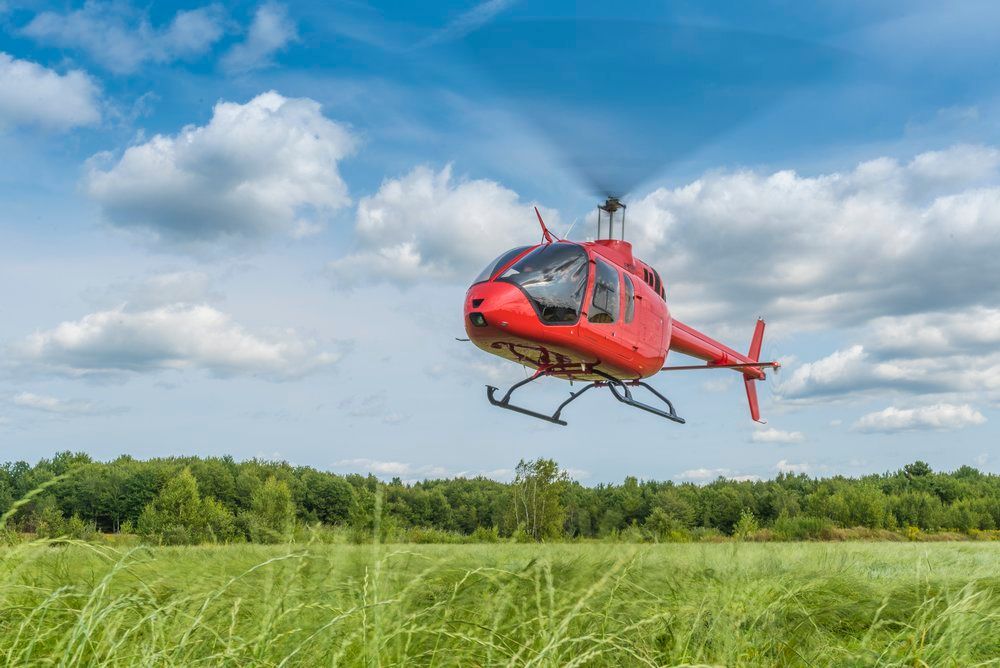
Date: 11 May 2018
Royal Air Force personnel based in Romania have been taking part in a maritime exercise with NATO allies in the Black Sea, led by the Romanian Navy Fleet Command.
Squadron Leader Roger Cruickshank, a pilot from 135 Expeditionary Air Wing (EAW), who flew a sortie from Mihail Kogalniceanu Air Base over the Black Sea under the control of a Royal Navy Type 45 destroyer, said: ?The Exercise started by joining up with two Romanian Air Force MIG21s, then flying overhead HMS Duncan in close formation.?
He added ?This was a fantastic symbol of how we are closely working together with our NATO allies and a historic moment as part of Exercise Sea Shield. I was controlled by HMS Duncan, who used her sophisticated systems to maintain full awareness of my position and simulated enemy aircraft trying to attack the ship.
?I was able to stop the advances of the oncoming aircraft trying to attack the friendly ships by HMS Duncan?s excellent team who were ready to simulate launching her own weapons in protection. The mission was a success and proved how integrated we are in times of crisis and that we can work so cohesively with our Romanian partners.?
Squadron Leader Roger Cruickshank
Personnel based at Mihail Kogalniceanu Air Base in Southern Romania, have been working closely with multinational partners to co-ordinate the air aspect of Exercise Sea Shield, which is a joint exercise based on a potential crisis scenario occurring, testing the reactions and agility of NATO forces.
The Commanding Officer of 135 Expeditionary Air Wing, Wing Commander Chris Ball, was invited by the Romanian Fleet Command to attend the opening ceremony and formal reception at Constanta port.
At the opening ceremony Wg Cdr Ball said: ?Exercise Sea Shield will be an invaluable training opportunity for us. We will be collaborating in to provide air power within a maritime exercise. 135 EAW personnel will work alongside military personnel from a diverse range of nations and forces within NATO. Together, we will enhance the mutual understanding between air, land and maritime within the Black Sea, reinforcing the UK commitment to the alliance and our ability to effectively contribute to NATO collective defence.?
?I?d like to emphasise the importance of Exercise Sea Shield. This year we are delighted to see such a diverse mixture of multinational forces participating, NATO has provided a partnership under which we can maintain the security and stability of all our nations. I thank all the nations that will be participating, this is an opportunity for us all to work together, ensuring NATO readiness is upheld and proving that NATO is both a credible and efficient alliance."
Vice Admiral Alexandru Mirsu
Chief of the Romanian Naval Forces.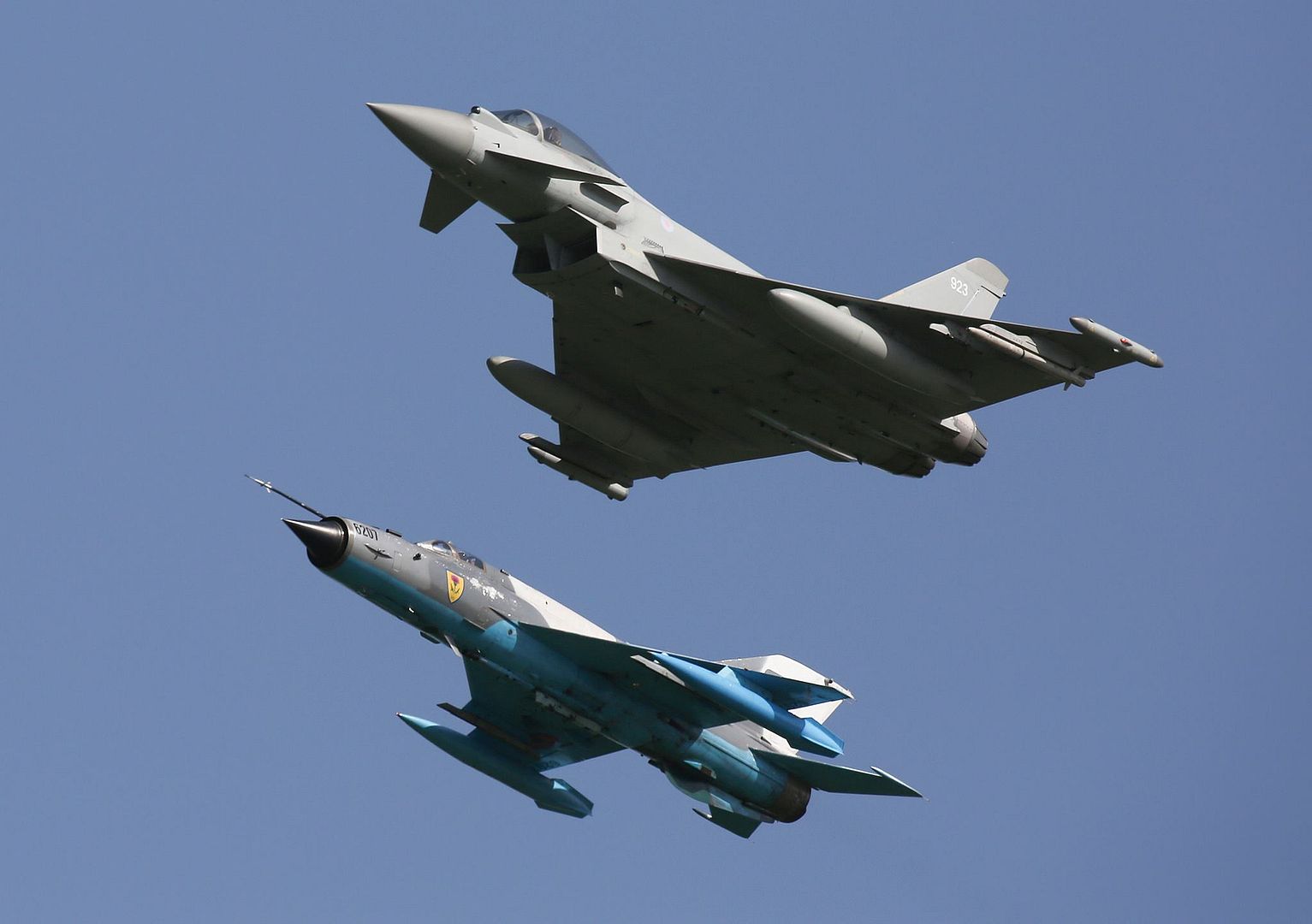
-
 Main AdminLakenheath bids farewell to Rescue Squadrons
Main AdminLakenheath bids farewell to Rescue Squadrons
Two HH-60G Pave Hawks prepare to land during a farewell event for the 56th Rescue Squadron at Royal Air Force Lakenheath, England, May 15, 2018. The event signals the near-completion of the 56th and 57th RQS relocation to Aviano Air Base, Italy, which was announced in November 2015. (U.S. Air Force photo by Staff Sgt. Alex Fox Echols III)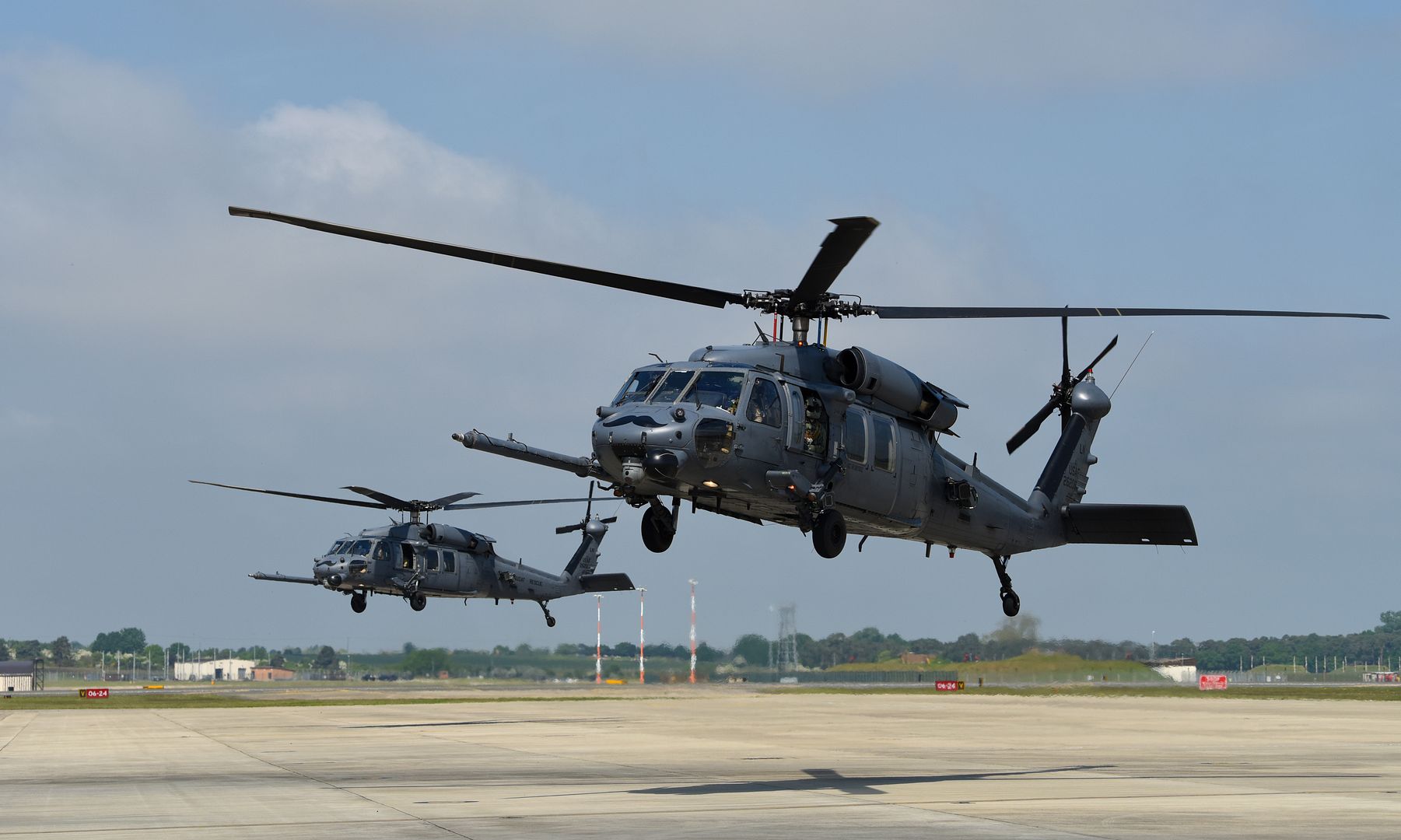
Archbald, Pa., May 15, 2018 ? Lockheed Martin (NYSE: LMT) received a $23.1 million contract award from the U.S. Navy for follow-on production of Enhanced Laser Guided Training Rounds (ELGTRs) to support the service?s Paveway? II Laser Guided Bomb (LGB) weapons training.
The award exercises the initial option of the contract negotiated in 2017 and extends ELGTR production into late 2020.
?ELGTR is the only proven low-cost, guided trainer for Paveway II Laser Guided Bombs around the world,? said Jason Golden, ELGTR program manager at Lockheed Martin Missiles and Fire Control. ?With more than 167,000 LGTR/ELGTRs delivered since the 1990s, this capability has prepared air and ground crews for challenging tactical mission environments while maintaining critical war reserve assets.?
ELGTR is recognized worldwide as the only live-fire training solution for warfighters. It provides realistic LGB employment practice for GBU-10/12/16 (2,000-lb/500-lb/1,000-lb) configurations at a fraction of the cost of tactical inventory.
Lockheed Martin manufactures ELGTRs for the U.S. Navy, Marine Corps and international customers. The ELGTR is compatible with F-16, F/A-18, AV-8B and various international aircraft platforms. Ongoing development efforts are focused on ELGTR compatibility with additional platforms to further expand the user community.
In addition to ELGTR, Lockheed Martin's 350,000-square-foot production facility in Archbald, Pennsylvania, designs and manufactures combat-proven Paveway II Plus Laser Guided Bomb kits and the Paragon? direct attack munition. More than 100,000 LGB kits and 7,000 Dual Mode LGB kits have been delivered to the U.S. Navy, Marine Corps, Air Force and 24 international customers.
About Lockheed Martin
Headquartered in Bethesda, Maryland, Lockheed Martin is a global security and aerospace company that employs approximately 100,000 people worldwide and is principally engaged in the research, design, development, manufacture, integration and sustainment of advanced technology systems, products and services.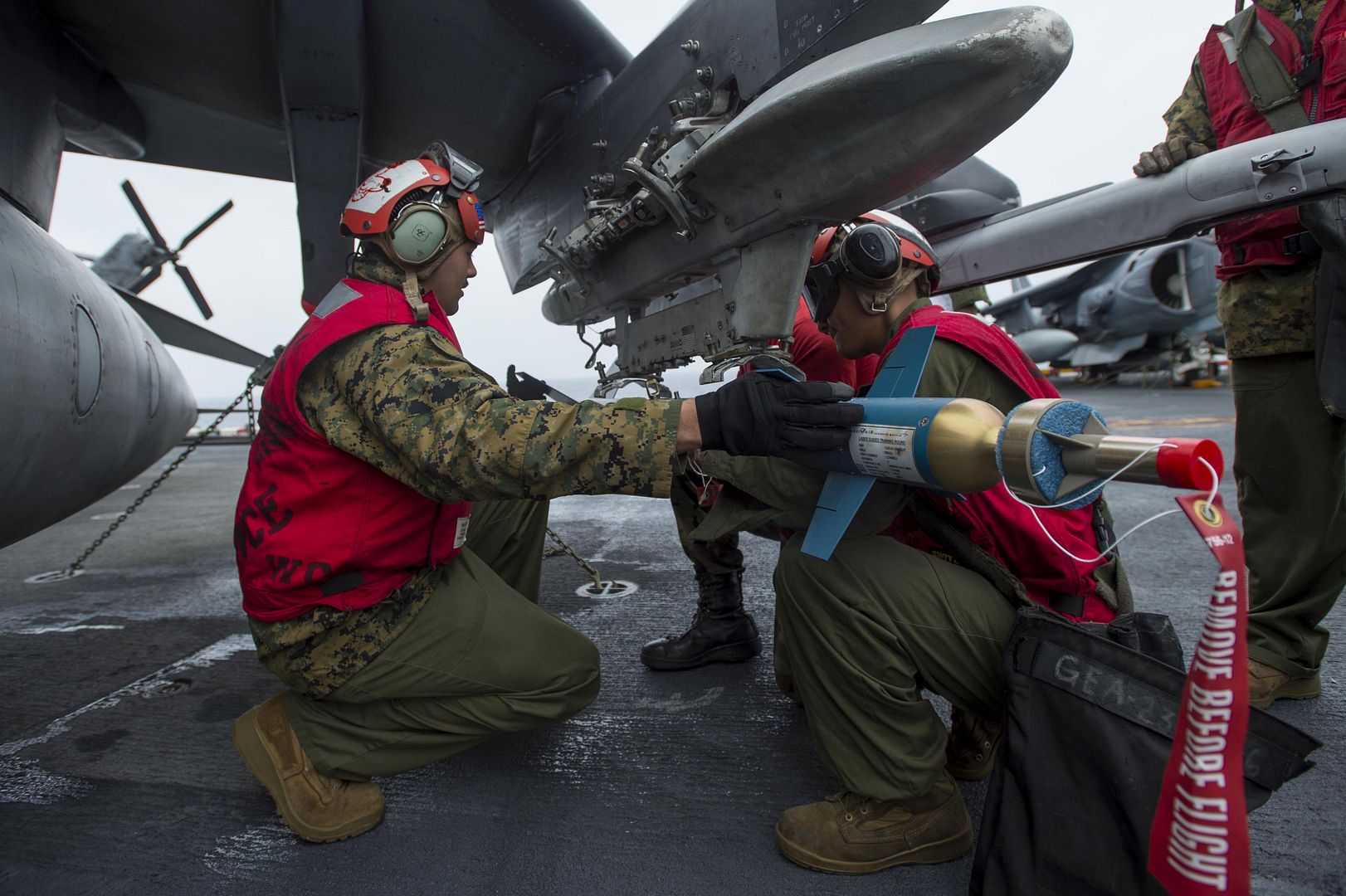
Airspace cabin checks commences with TAP Air Portugal aircraft
The first A330neo for launch operator TAP Air Portugal - MSN1819 - completed its 4:32 hours maiden flight.
The aircraft now joins the fleet of two A330-900 test aircraft already performing flight tests since 19 October 2017.
MSN1819 is the first aircraft fitted with the Airspace cabin by Airbus. It is equipped with light Flight Test Instrumentation during its test phase to check cabin systems such as air conditioning, crew rest etc.
With over 1,700 orders, the A330 is the most popular wide-body aircraft ever, performing nearly 1,000,000 flights every year. Today, more than 1,400 aircraft have been delivered to almost 120 customers worldwide on a wide range of routes, from domestic and regional flights to long range intercontinental services.
Offering the lowest operating costs in its category, and thanks to continuous investments in latest innovations, the new generation A330neo is the most profitable and best performing aircraft in its size category. The A330neo first delivery is planned in summer 2018.
The A330neos will usher the brand-new Airspace by Airbus cabin concept, a consumer-centric cabin developed with passengers at heart and airlines in mind around the four pillars: Comfort, Ambience, Service and Design. These cabin options will ensure that the A330neos will set the benchmark in passenger experience and airline value, alongside its widebody partner, the A350 XWB.
-
 Main AdminU.S. Marine Corps pilots with Marine Light Attack Helicopter Squadron 367 stage an AH-1Z Super Cobra at a forward arming and refueling point during Integrated Training Exercise (ITX) 3-18 aboard Marine Corps Air Ground Combat Center, Twentynine Palms, Calif., May 14, 2018. ITX is a large-scale, combined-arms training exercise intended to produce combat-ready forces capable of operating as an integrated Marine air-ground task force. (U.S. Marine Corps photo by Cpl. Koby I. Saunders)
Main AdminU.S. Marine Corps pilots with Marine Light Attack Helicopter Squadron 367 stage an AH-1Z Super Cobra at a forward arming and refueling point during Integrated Training Exercise (ITX) 3-18 aboard Marine Corps Air Ground Combat Center, Twentynine Palms, Calif., May 14, 2018. ITX is a large-scale, combined-arms training exercise intended to produce combat-ready forces capable of operating as an integrated Marine air-ground task force. (U.S. Marine Corps photo by Cpl. Koby I. Saunders)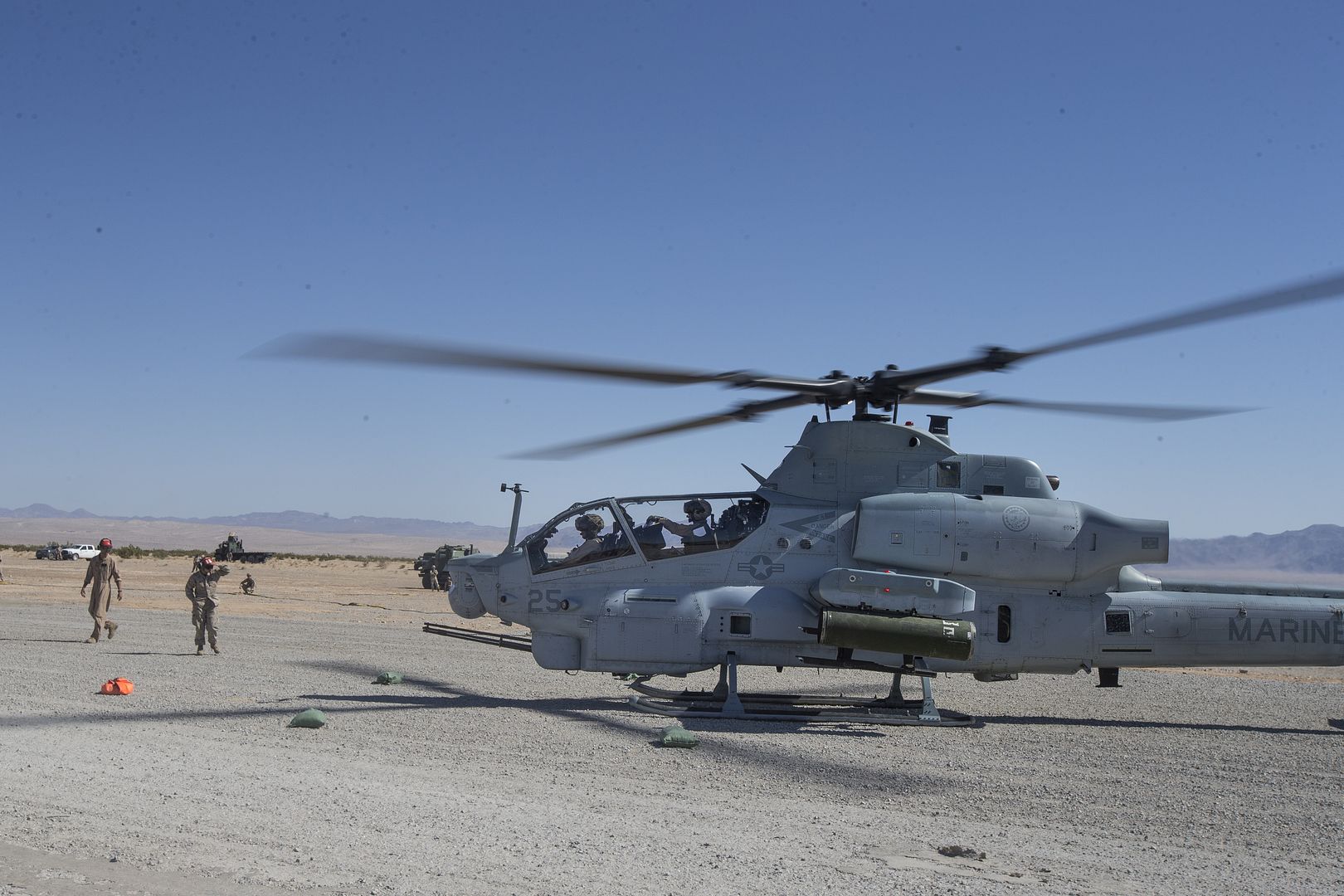
The first CH-53K King Stallion lands on the flight line at Marine Corps Air Station New River, North Carolina May 16, 2018. The aircraft?s delivery to MCAS New River marks another on-time milestone for the U.S. Marine Corps' future heavy-lift helicopter program. Personnel with Marine Operational Test and Evaluation Squadron 1 will bring the CH-53K into the supportability test plan, where they will conduct a logistical assessment on the maintenance, sustainment and overall logistics support of the King Stallion. The CH-53K is meant to replace the Marine Corp?s fleet of CH-53E heavy-lift helicopters. The King Stallion has several upgrades over the legacy aircraft including a digital glass cockpit and fly-by-wire controls. It can externally transport 27,000 lbs. over 110 nautical miles and has a max external lift of 36,000 lbs., three times that of the legacy ?E? aircraft. (U.S. Marine Corps Photo's by Sgt. Matthew Callahan)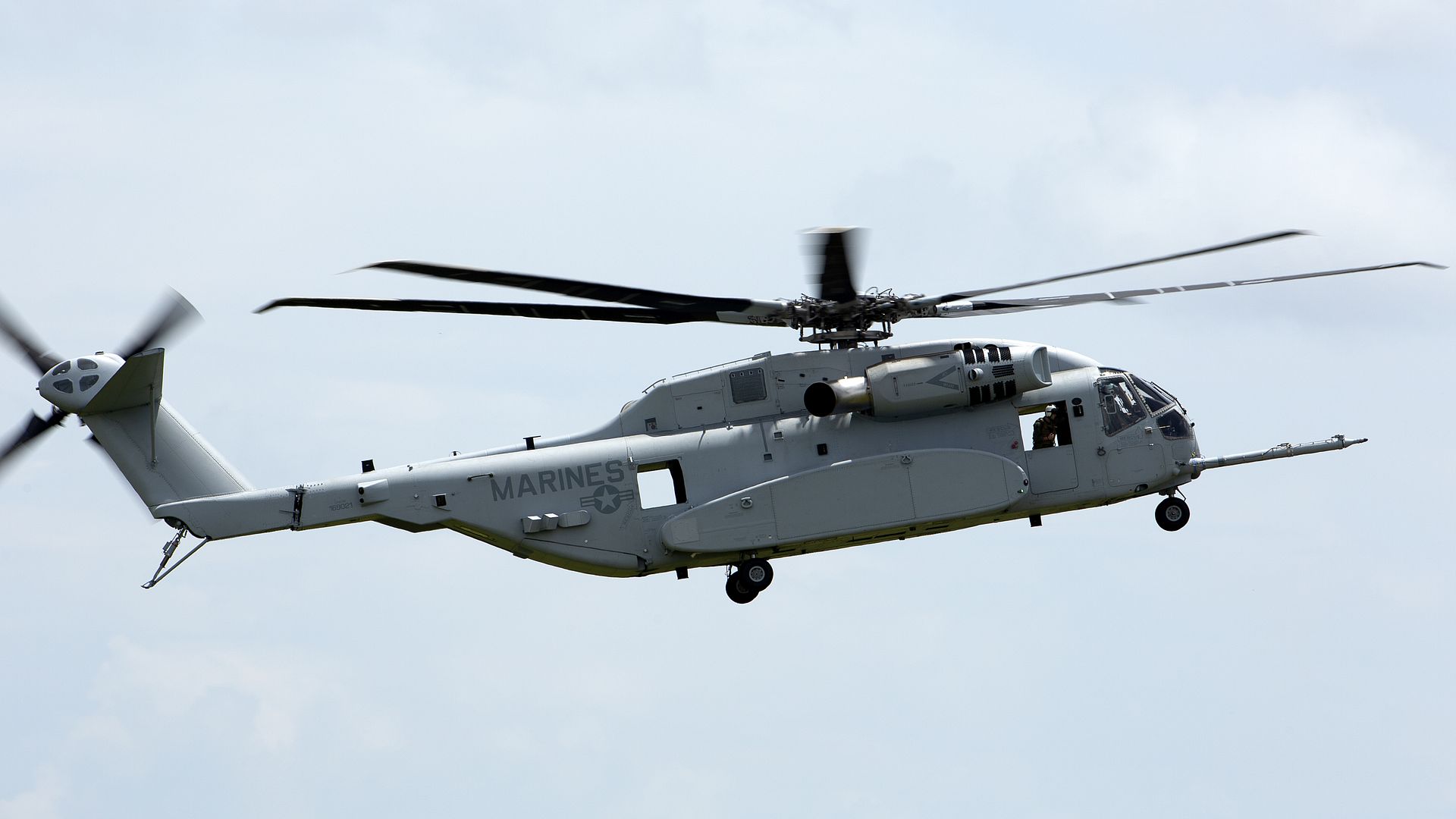
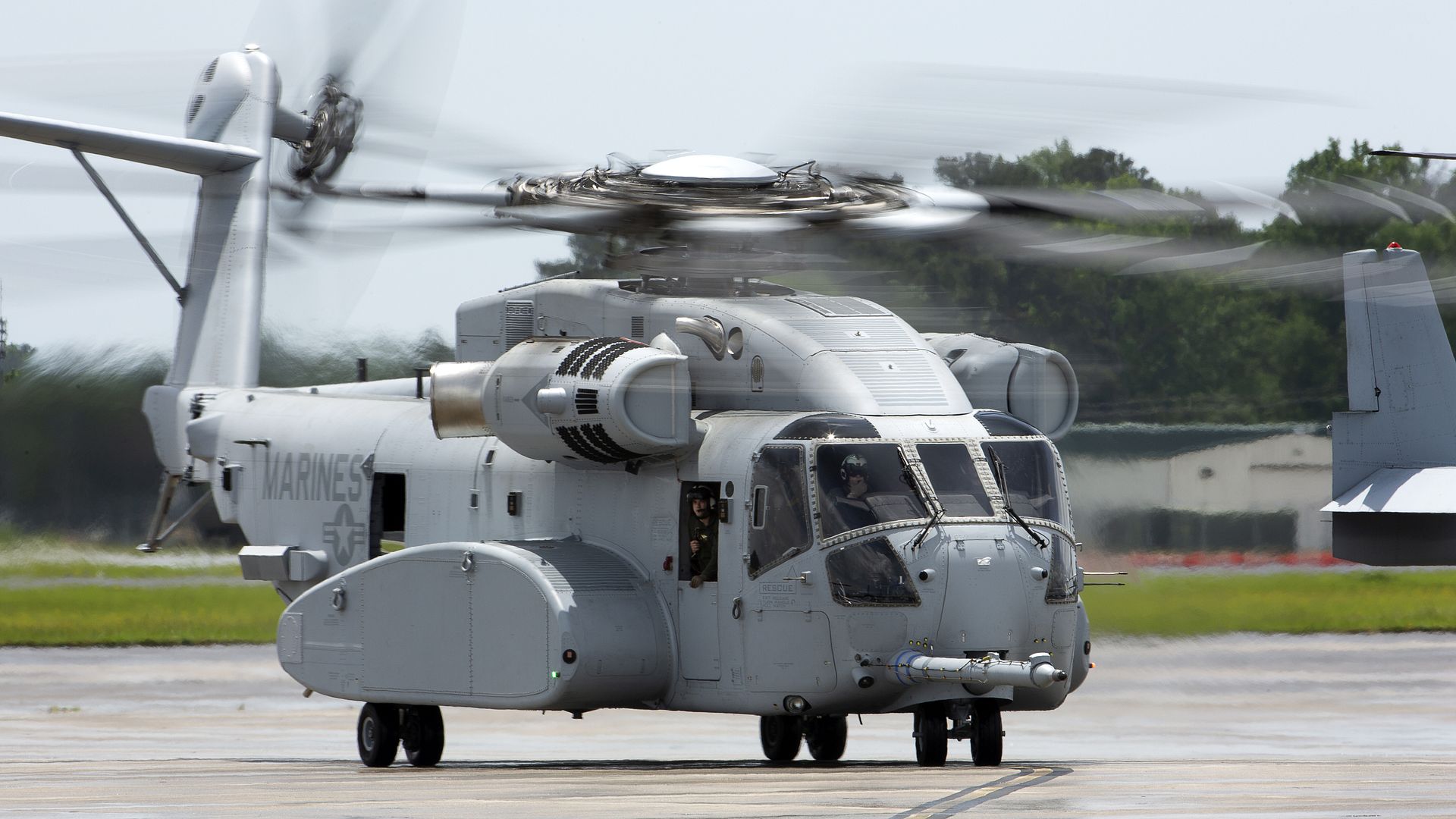
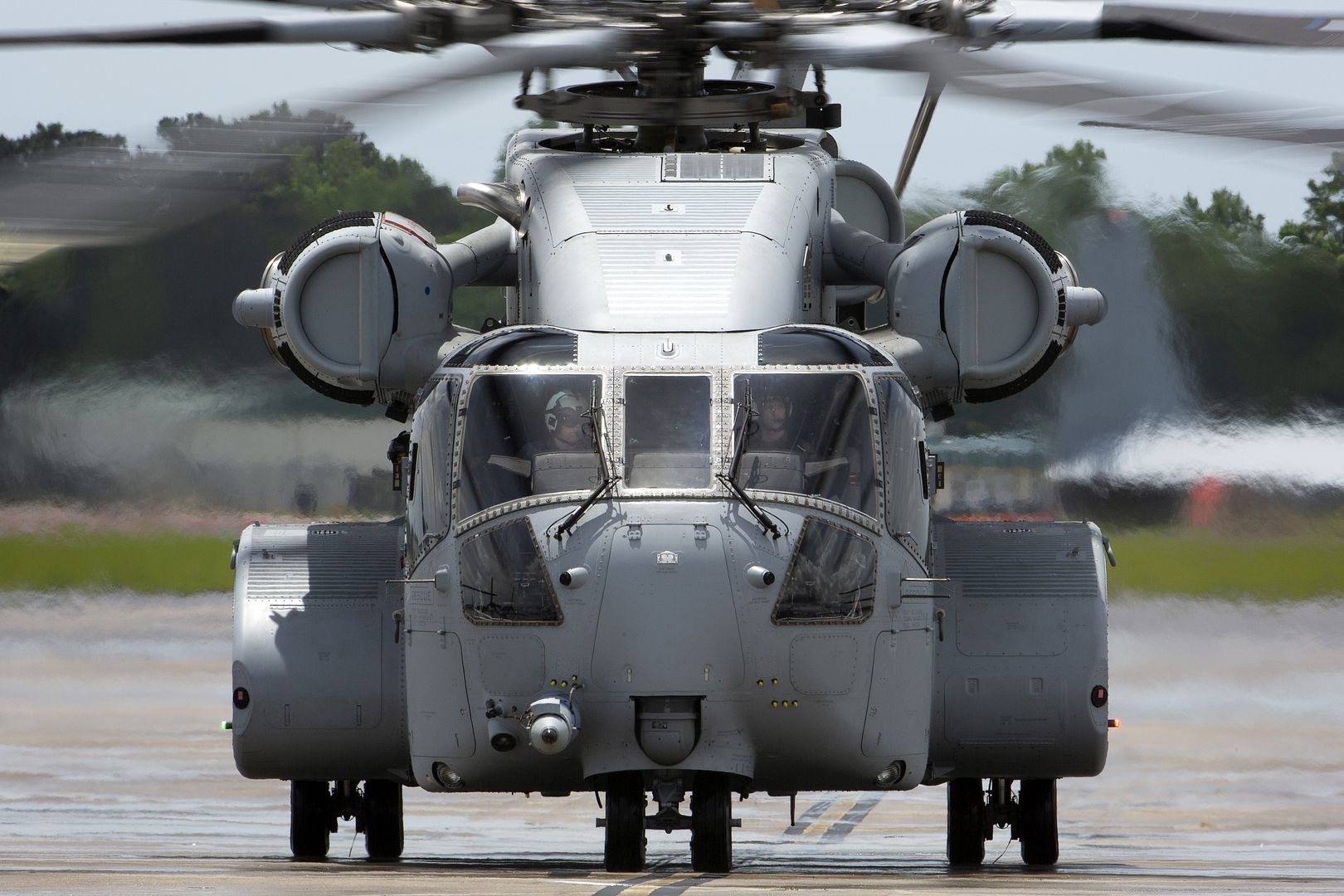
A flight of B-17 Flying Fortresses and P-51 Mustangs flies over Wright-Patterson Air Force Base, Ohio, and the National Museum of the United States Air Force the morning of May 16, 2018. The flight of World War II vintage aircraft was just one of the events marking the opening of the museum?s Memphis Belle exhibit. The Memphis Belle is the most famous Flying Fortress, having been the first one able to return to the United States following 25 combat missions over occupied Europe during the war. (U.S. Air Force photo by R.J. Oriez)
The movie version of the Memphis Belle takes part in a flyover by a flight of vintage World War II aircraft of the National Museum of the United States Air Force on Wright-Patterson Air Force Base, Ohio, May 16, 2018,. The flyover was one of the events marking the original Memphis Belle being placed on exhibit in the museum. This plane portrayed the Memphis Belle in a 1990 movie telling the story of the plane and her crew over occupied Europe. (U.S. Air Force photo by R.J. Oriez)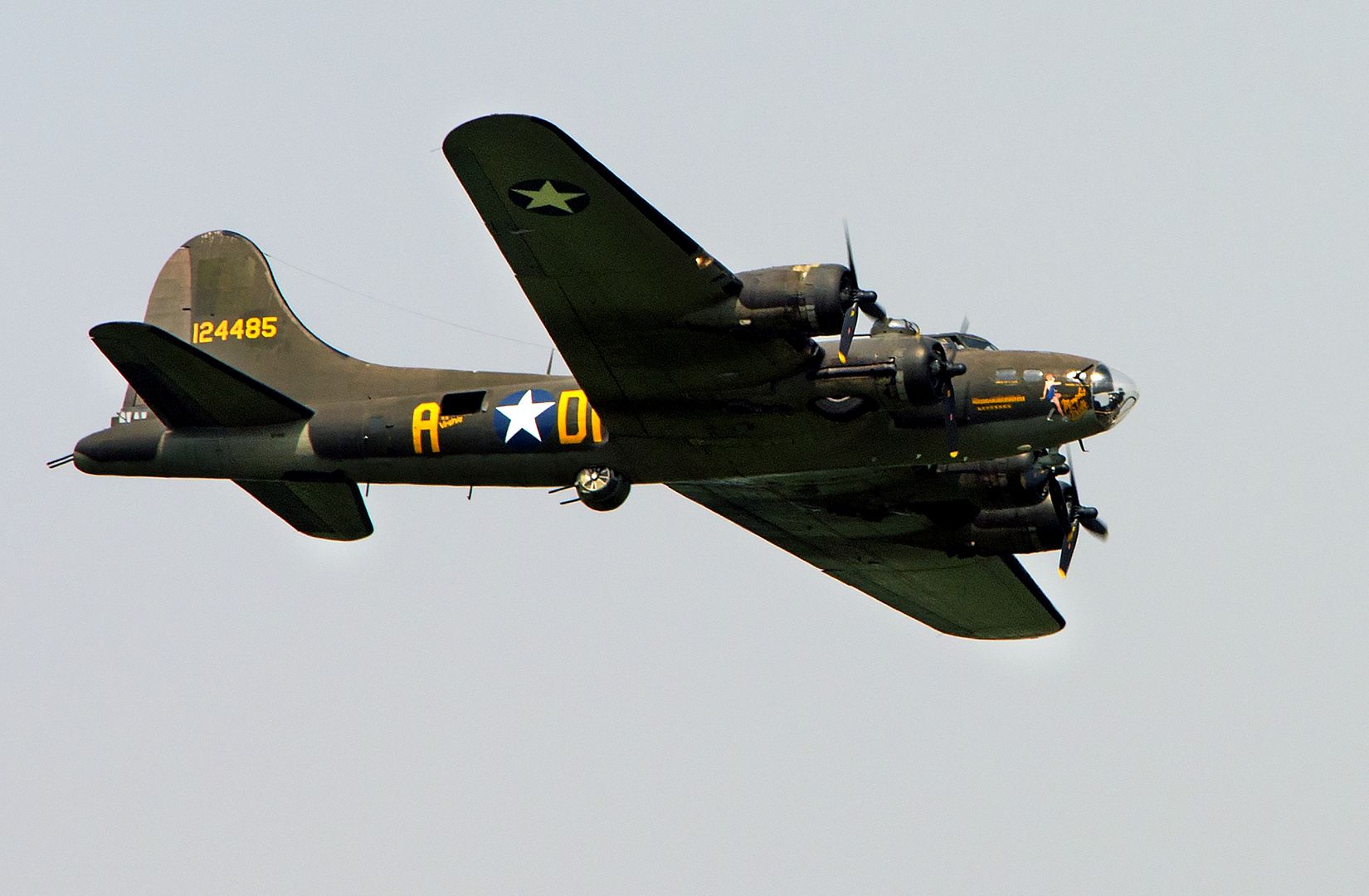
15 May 2018
BELL V-280 VALOR MAKES FIRST EVER CRUISE MODE FLIGHT
-
6 years agoSat May 19 2018, 03:38pm
 Main AdminU.S. Air Force Thunderbird 5 taxis on the runway at Joint Base Langley-Eustis, Virginia, May 15, 2018. The Thunderbirds are scheduled to resume their 2018 air show season during the Airpower Over Hampton Roads JBLE Air and Space Expo, May 19 - 20. (U.S. Air Force photo by Staff Sgt. Areca T. Bell)
Main AdminU.S. Air Force Thunderbird 5 taxis on the runway at Joint Base Langley-Eustis, Virginia, May 15, 2018. The Thunderbirds are scheduled to resume their 2018 air show season during the Airpower Over Hampton Roads JBLE Air and Space Expo, May 19 - 20. (U.S. Air Force photo by Staff Sgt. Areca T. Bell)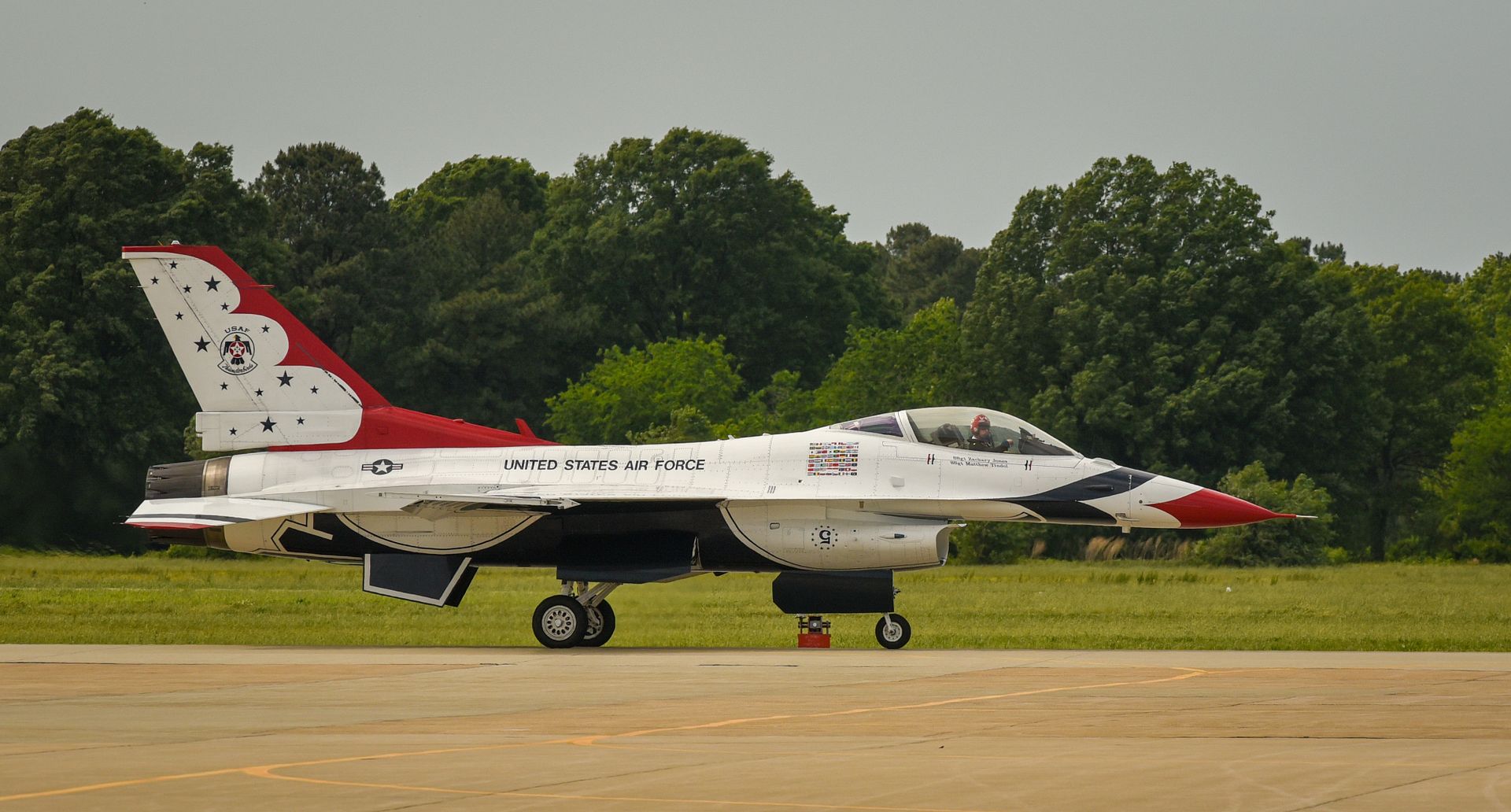
U.S. Air Force Thunderbird 6 takes off during practice at Joint Base Langley-Eustis, Virginia, May 15, 2018. The Thunderbirds are scheduled to resume their 2018 air show season during the Airpower Over Hampton Roads JBLE Air and Space Expo, May 19 - 20. (U.S. Air Force photo by Staff Sgt. Areca T. Bell)
ANDERSEN AFB, Guam --- Another aircraft extends its landing gear and slows for touch down. From the outside, everything seems as though it is going according to plan. Sometimes though appearances can be deceiving.
Master Sgt. Alex, an RQ-4 pilot with the 12th Reconnaissance Squadron and deployed to Det. 1 on Andersen Air Force Base, Guam, stepped straight into perhaps the most difficult test of his pilot career on May 9th, 2018.
For Alex there is no cockpit to sit in with his hands on the controls, his aircraft is an RQ-4 Global Hawk, an unmanned aerial vehicle, and it?s in trouble. The aircraft has lost communication and the pilots that were on shift before him were in the middle of a crew swap out.
?I was getting briefed as I was walking in,? Alex said. ?The aircraft was in the area it uses to ascend and descend when it lost communication. The pilots before me were running through every checklist they had, calling everybody who needed to know, setting everything up so that if the plane didn?t restore communication it would be able to land autonomously.?
While technology was on his side, and the RQ-4 has safeguards in place for moments just like this, it was still a dangerous and serious situation.
When an RQ-4 loses communications, it enters into a loitering pattern for a small window of time, before it attempts to land autonomously. Time was running out, Alex picked up responsibility for the aircraft with little time left until it descended to make its autonomous approach.
To add to an already stressful mission, this was the first time that Alex would land an RQ-4 solo.
?I let air traffic control know that I was an emergency aircraft, and that I was coming in to land C1 [without communications],? said Alex. ?They did a fantastic job, they cleared everything out of my way, and as the aircraft made its approach, we were able to get a link back with the aircraft for maybe 30 seconds, it was enough for me to switch the aircraft to a line of sight link.?
But with restored communication the problems only came faster, now that he had a link with the aircraft again he found that it had a gear and brake failure.
?So now I have an aircraft coming in for approach and I?m not sure if the gear is going to come down,? Alex said. ?We made the decision that, yes, it can come down safely, I gave the order for gear down and to land, and we watched and slowly all three landing gear came down, and the aircraft finally touched down safely.?
Alex remained humble about his accomplishment, saying that the pilots he was replacing had done much of the heavy lifting.
?I think the best way to describe my role is that it was kind of like a football game,? said Alex describing the incident. ?The pilots before me, they did a lot of the heavy work, I was just the kicker who came in to make the final play.?
It was a successful resolution to a challenging situation, but as one of the first enlisted pilots in the Air Force, Alex has gotten used to overcoming challenges.
?I was in the first class of enlisted pilots, EPIC-1 [Enlisted Pilot Initial Cadre], and it was a very tough course,? said Alex. ?We went through the same exact course the officers do, but because we were the first class, there was a lot of pressure for us to succeed. The training we received, all the different scenarios we ran in the simulator, allowed me to keep my cool and bring the aircraft in safely.?
(U.S. Air Force photo by Staff Sgt. Alexander W. Riedel)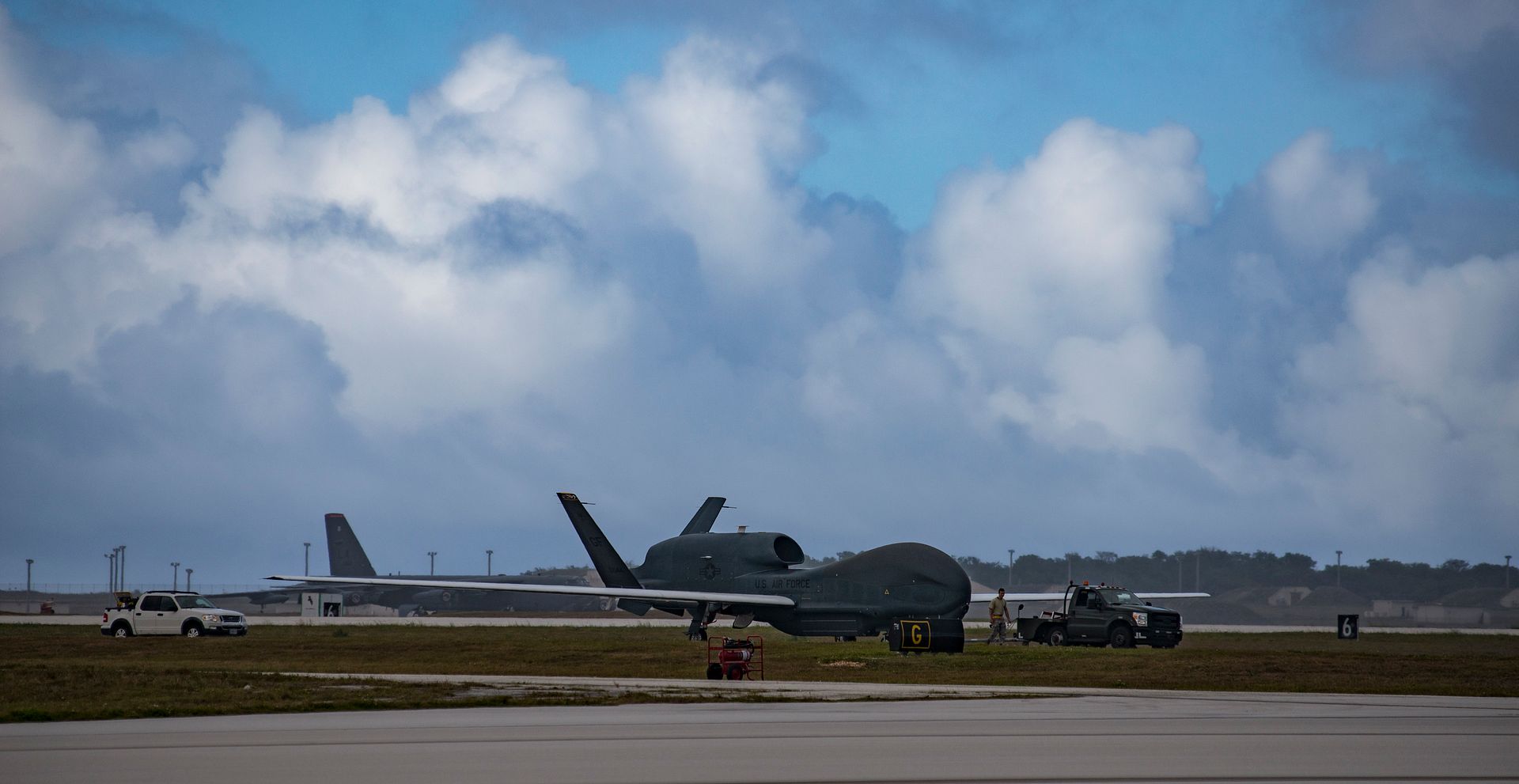
-
 Main AdminA NATO E-3A aircraft leaves formation after receiving fuel from KC-135 aircraft after performing mid-air refueling training over Central Europe with the Pennsylvania Air National Guard?s 171st Air Refueling Wing, May, 17, 2018. The Mission occurred one week prior to the 25 anniversary of the partnership between the U.S. Air National Guard and NATO Airborne Early Warning and Control Force. (U.S. Air National Guard photo's by Senior Master Sgt. Shawn Monk)?
Main AdminA NATO E-3A aircraft leaves formation after receiving fuel from KC-135 aircraft after performing mid-air refueling training over Central Europe with the Pennsylvania Air National Guard?s 171st Air Refueling Wing, May, 17, 2018. The Mission occurred one week prior to the 25 anniversary of the partnership between the U.S. Air National Guard and NATO Airborne Early Warning and Control Force. (U.S. Air National Guard photo's by Senior Master Sgt. Shawn Monk)?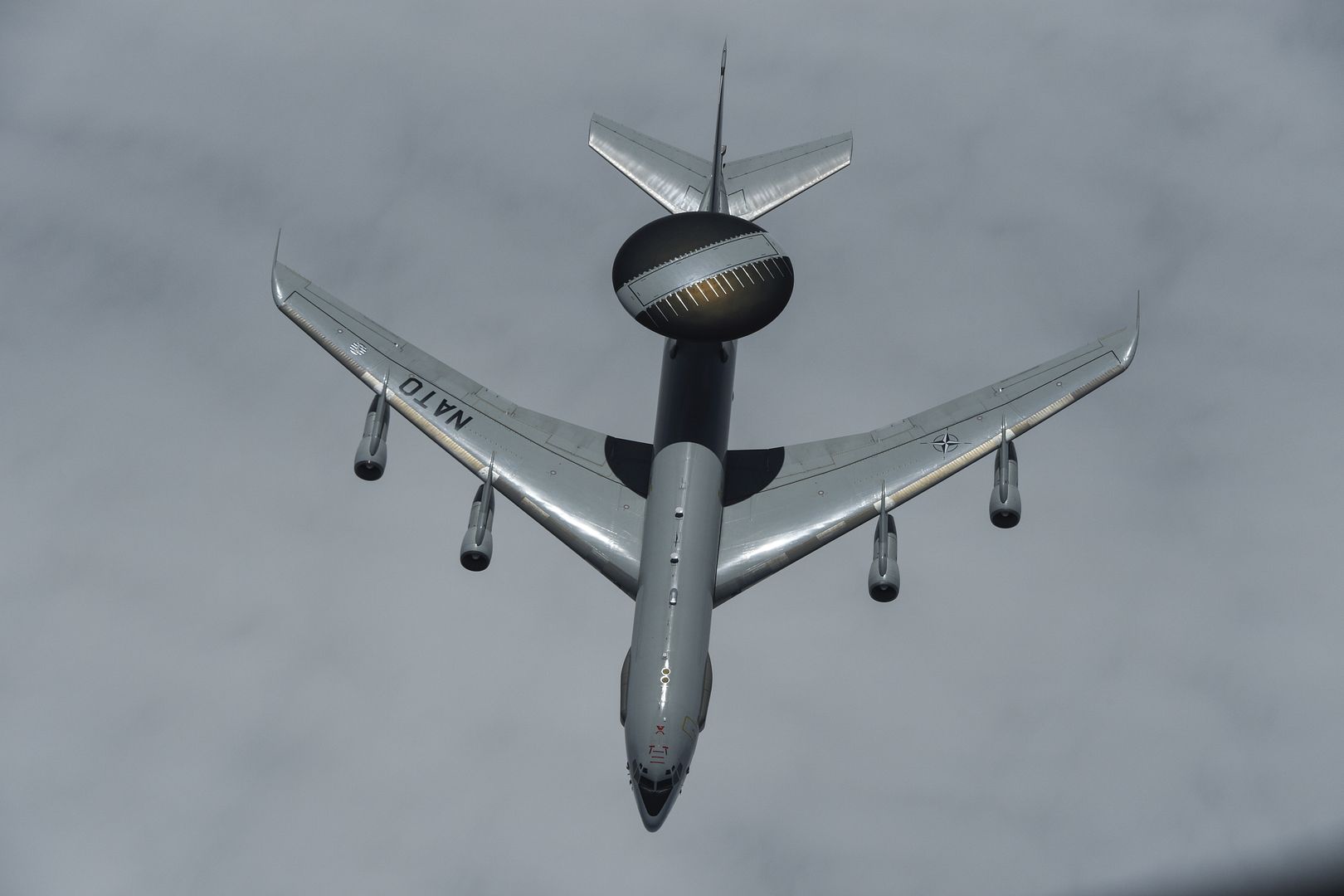
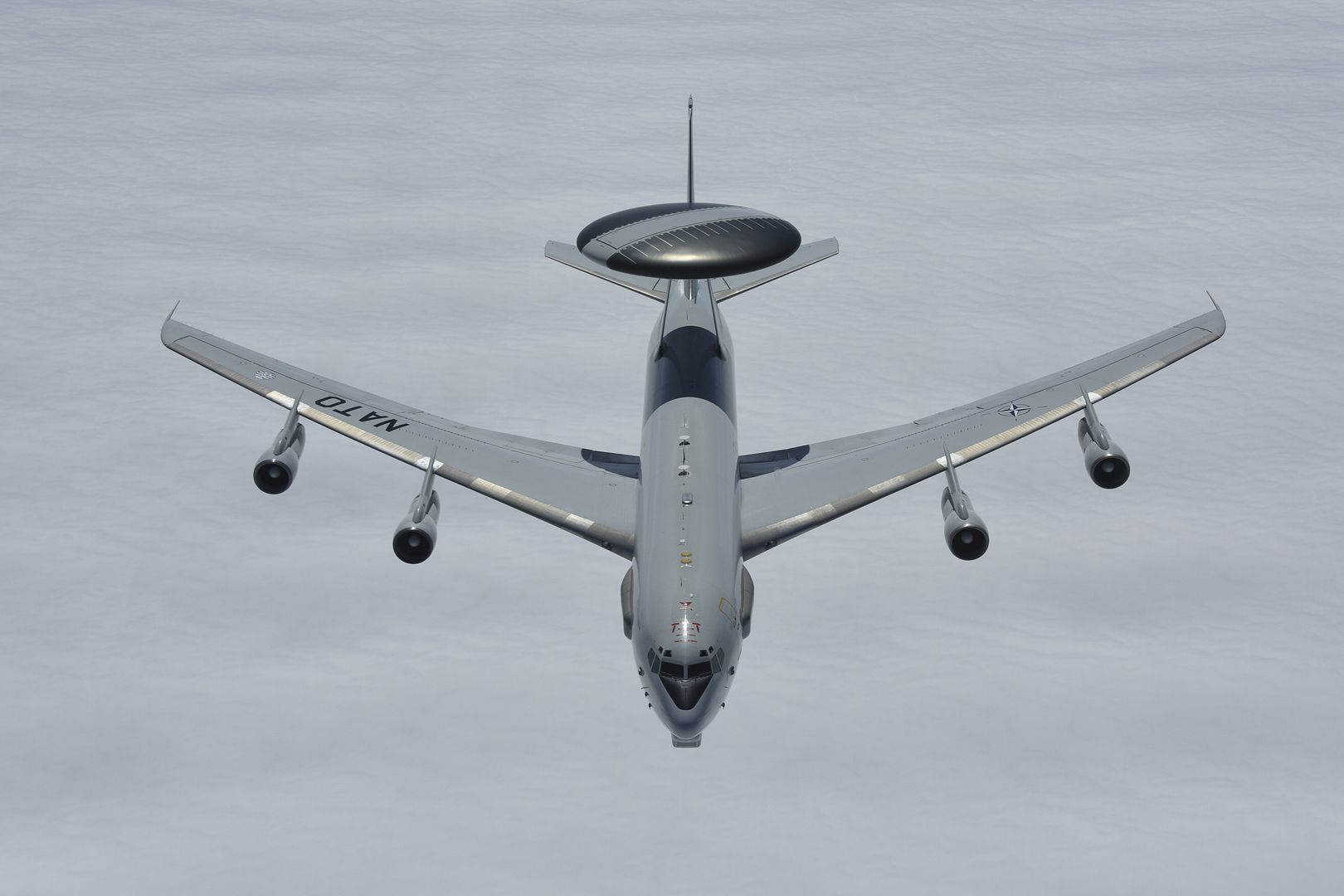
A pair of Royal Air Force Typhoon fighters fly over the North Sea May 17, 2018. The fighters received fuel from an RAF Voyager aircraft as part of the 5th annual European Tanker Symposium held on RAF Mildenhall, England. (U.S. Air Force photo by Tech. Sgt. David Dobrydney)
A U.S. Air Force KC-135 Stratotanker refuels a Royal Air Force E-3D over the North Sea May 17, 2018. The KC-135 participated in a training flight over the North Sea as part of the 5th annual European Tanker Symposium. (U.S. Air Force photo by Tech. Sgt. David Dobrydney)
ATLANTIC OCEAN (May 16, 2018) A Rafale Marine assigned to squadron "17F" of the French navy prepares to launch from the flight deck of the aircraft carrier USS George H.W. Bush (CVN 77). The ship is underway in the Atlantic Ocean conducting carrier air wing exercises with the French navy to strengthen partnerships and deepen interoperability between the two nations' naval forces. (U.S. Navy photo by Mass Communication Specialist 2nd Class David Mora Jr./Released)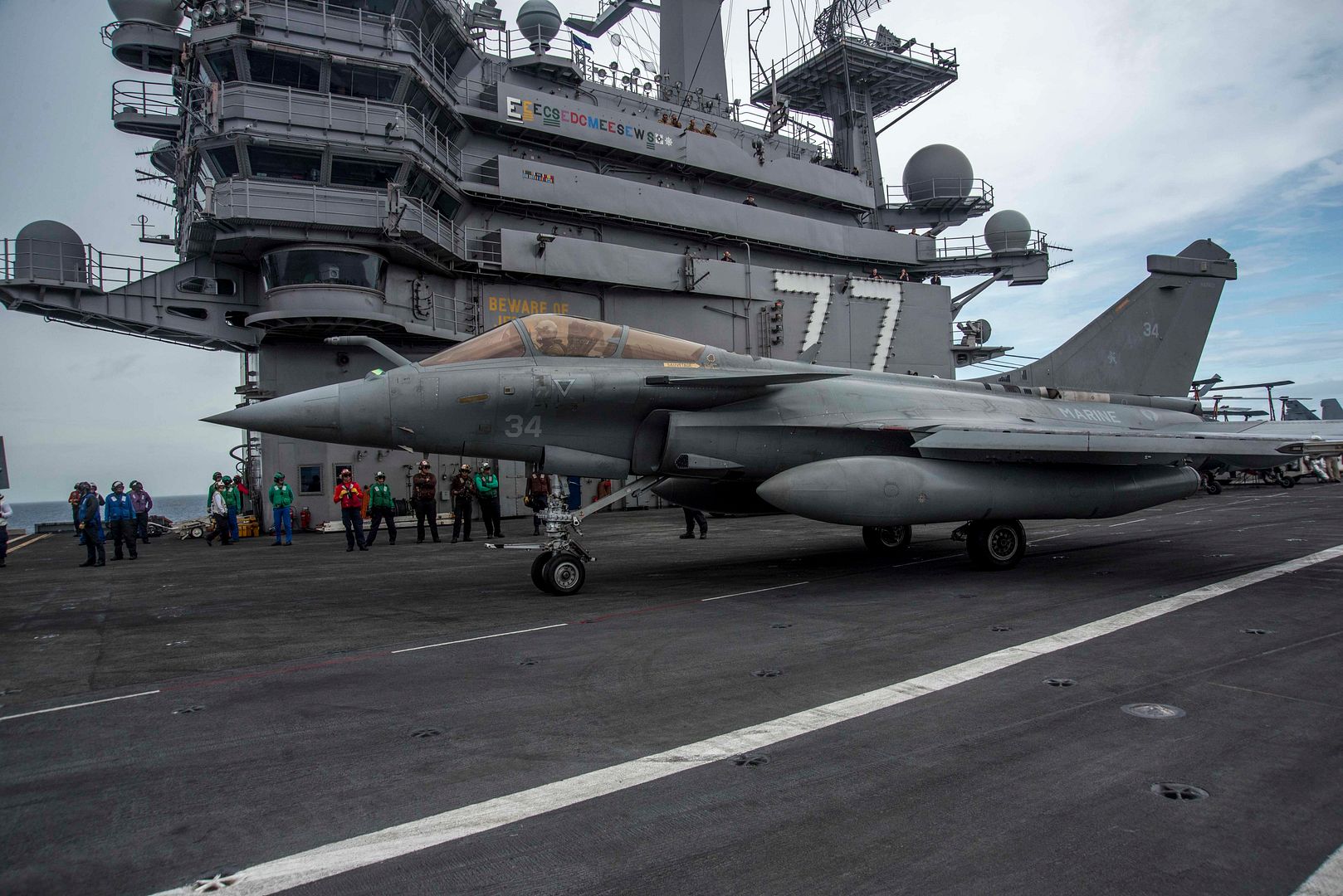
PHOENIX, May 18, 2018 /PRNewswire/ -- AHS International has recognized Canada's Department of National Defence (DND) and Sikorsky, a Lockheed Martin company, for "conducting an extraordinary international effort" to demonstrate flight and shipboard operation of the CH-148 Cyclone maritime helicopter from a Royal Canadian Navy Halifax-class frigate. The award cites successful expansion of the flight envelop to Sea State 6 conditions, where waves reached a height of six meters (20 feet) with winds up to 55 knots (100 km/hour or 63 mph).
On May 16, 2018, representatives from the Canadian Maritime Helicopter Project (CMHP) Combined Test Force accepted the Leonardo International Fellowship Award during AHS International's annual forum. The award recognizes significant contributions to international vertical flight cooperation.
"The combined industry and government flight test team collaborated fully to demonstrate the CH-148 Cyclone helicopter's anti-submarine and anti-surface warfare missions during some of the roughest winter weather imaginable," said William Falk, Sikorsky CMHP director. "Successful demonstration of strict ship/helicopter capability is required before the Canadian government can deploy this helicopter weapon system."
The CMHP Combined Test Force sailed five times into the waters off Nova Scotia from 2010-2017 during late December to early March when the weather conditions produced the necessary wave heights and winds. In total, the team flew 270 hours and performed approximately 975 landings on the flight decks of HMCS Montr?al and HMCS Halifax.
Key among the design features for the Cyclone, Sikorsky engineered:
a retractable probe on the belly of the aircraft to more securely cinch the 29,300-lb. Cyclone to the ship's flight deck in high sea states;
a ground support tool with an articulating arm that, with the Recovery, Assist, Secure and Traverse (RAST) system, allows the deck crew to remotely align the aircraft's nose prior to guiding the helicopter into the hangar.
A combined DND/Sikorsky aircrew also demonstrated utility of the aircraft's full authority fly-by-wire flight controls, which can hold the aircraft in a precise hover during high wind states.
Other tests included main rotor blade and tail pylon fold, hover-in-flight refuel, maintenance operations, torpedo loading, and ship-to-ship replenishment. These operations also were demonstrated at night with and without night vision goggles.
The shipboard tests were part of a 10-year, 2,800-hour flight test program that is expected to conclude in early 2019. The Royal Canadian Air Force will take delivery of the last of its 28 Sikorsky designed and built CH-148 Cyclone aircraft by 2021 to replace the CH-124 Sea King helicopter fleet, which retires this year.
Incorporated in 1943 as the American Helicopter Society, AHS International today continues to bring together industry, academia and government to tackle the toughest challenges in vertical flight technology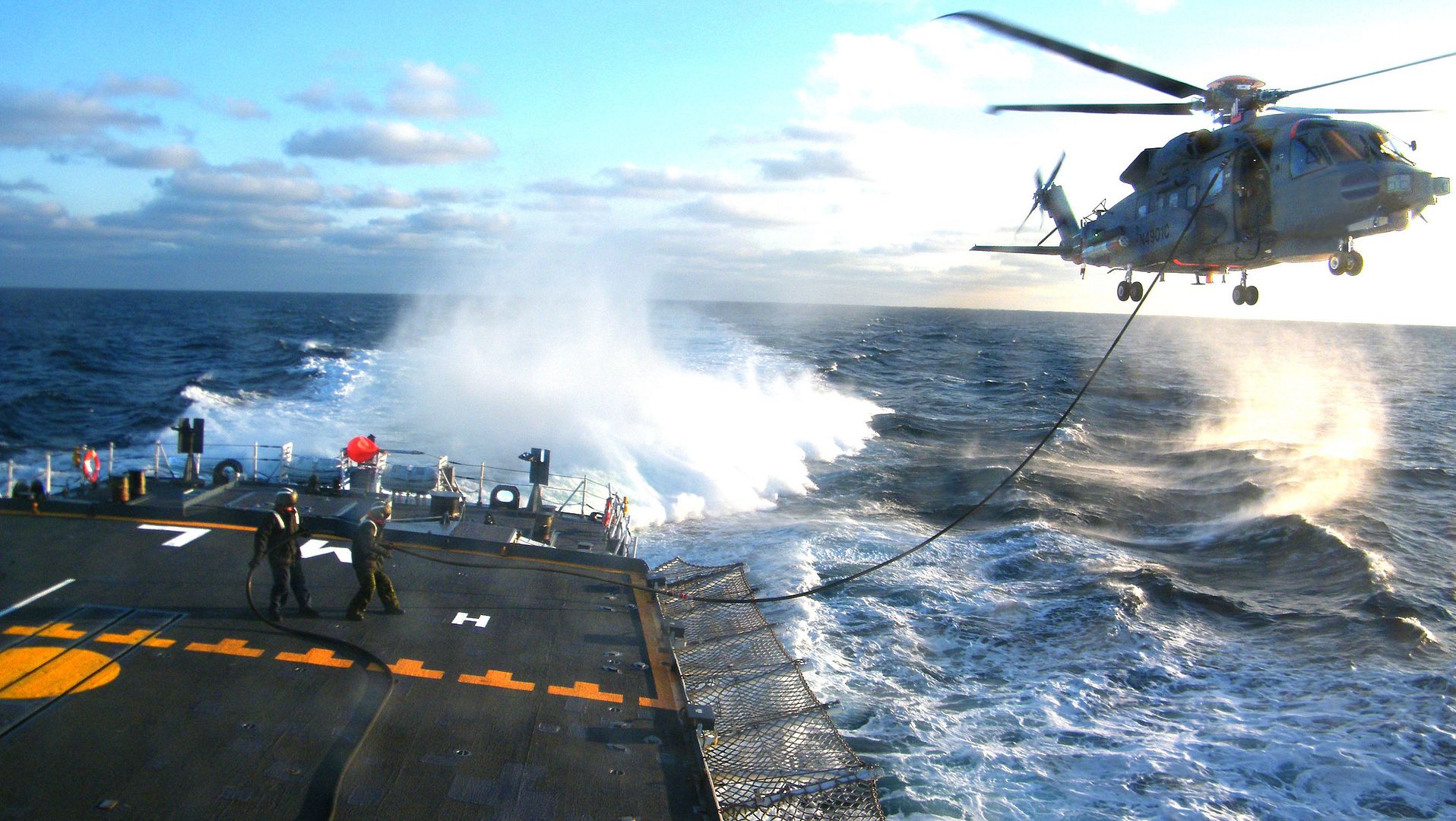
Post a reply
- Go to Next topic
- Go to Welcome
- Go to Introduce Yourself
- Go to General Discussion
- Go to Screenshots, Images and Videos
- Go to Off topic
- Go to Works in Progress
- Go to Skinning Tips / Tutorials
- Go to Skin Requests
- Go to IJAAF Library
- Go to Luftwaffe Library
- Go to RAF Library
- Go to USAAF / USN Library
- Go to Misc Library
- Go to The Ops Room
- Go to Made in Germany
- Go to Campaigns and Missions
- Go to Works in Progress
- Go to Juri's Air-Raid Shelter
- Go to Campaigns and Missions
- Go to Works in Progress
- Go to Skinpacks
- Go to External Projects Discussion
- Go to Books & Resources
